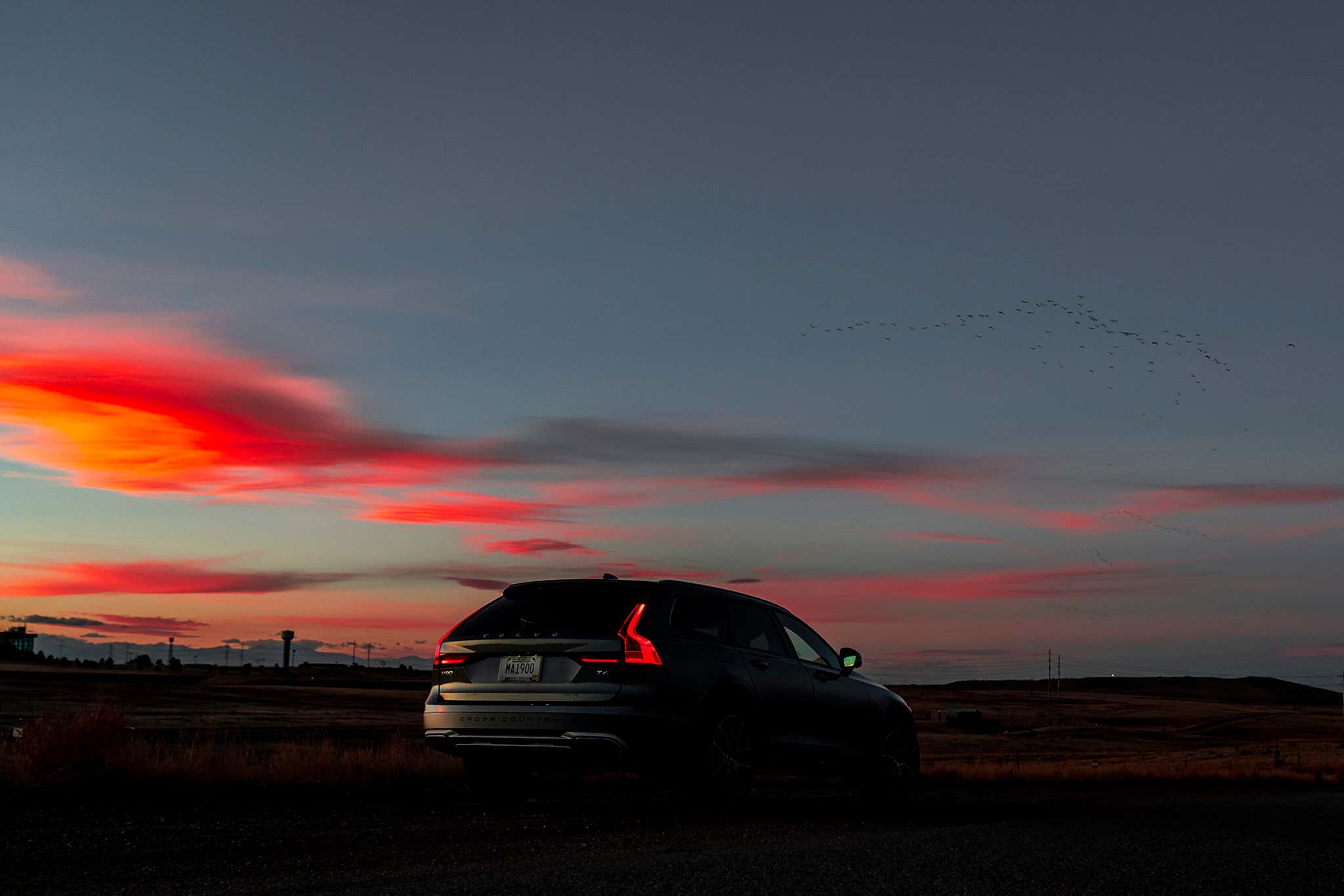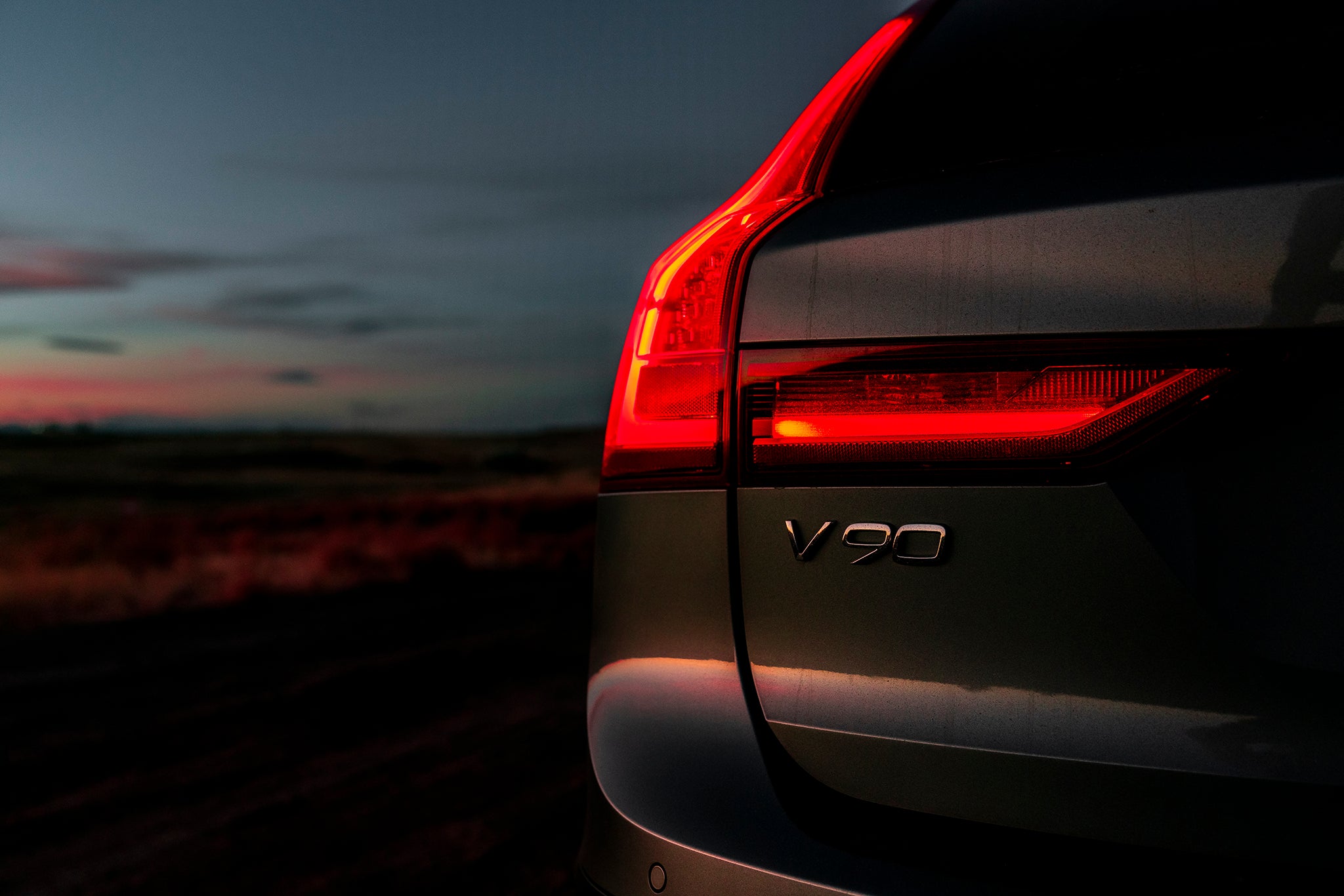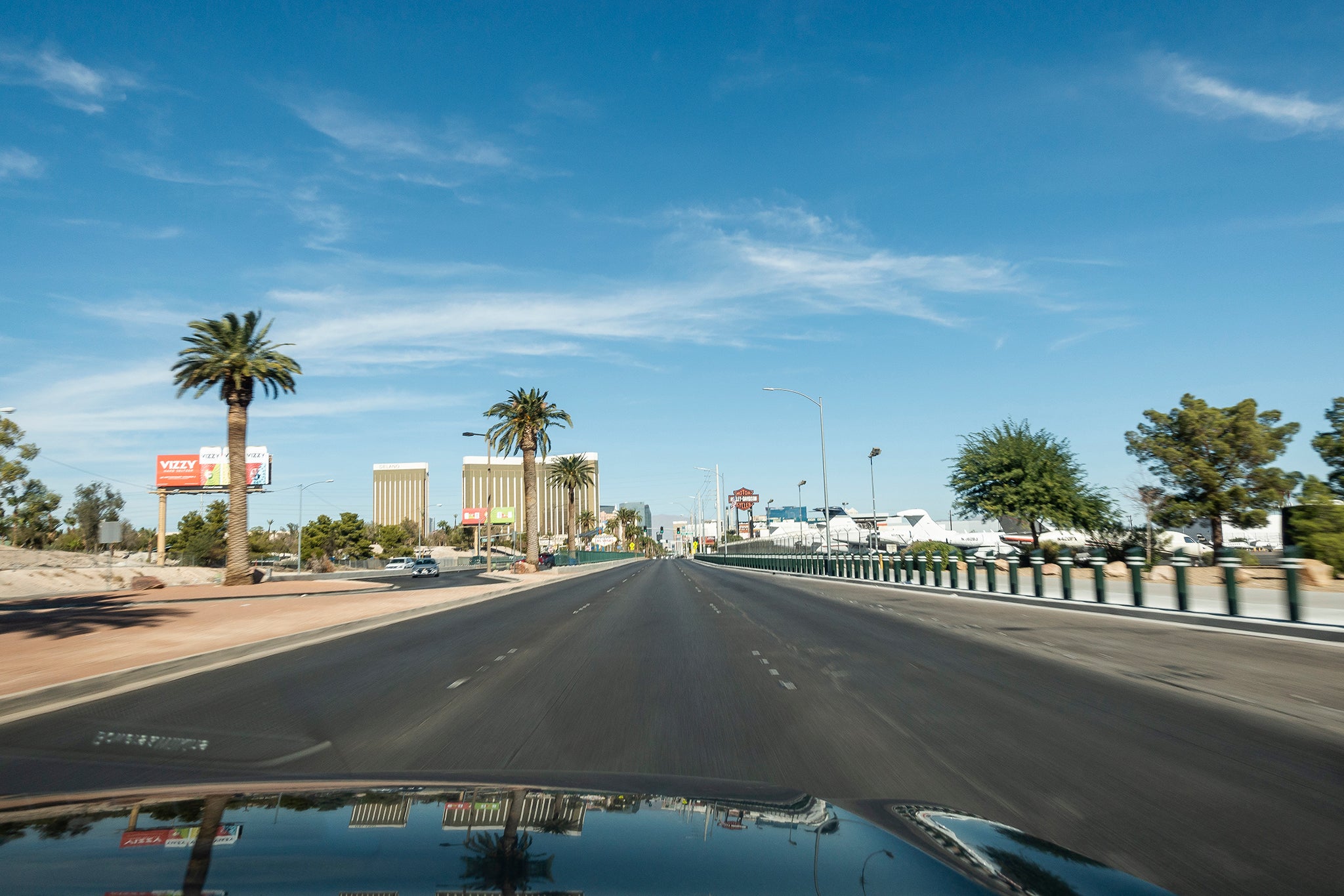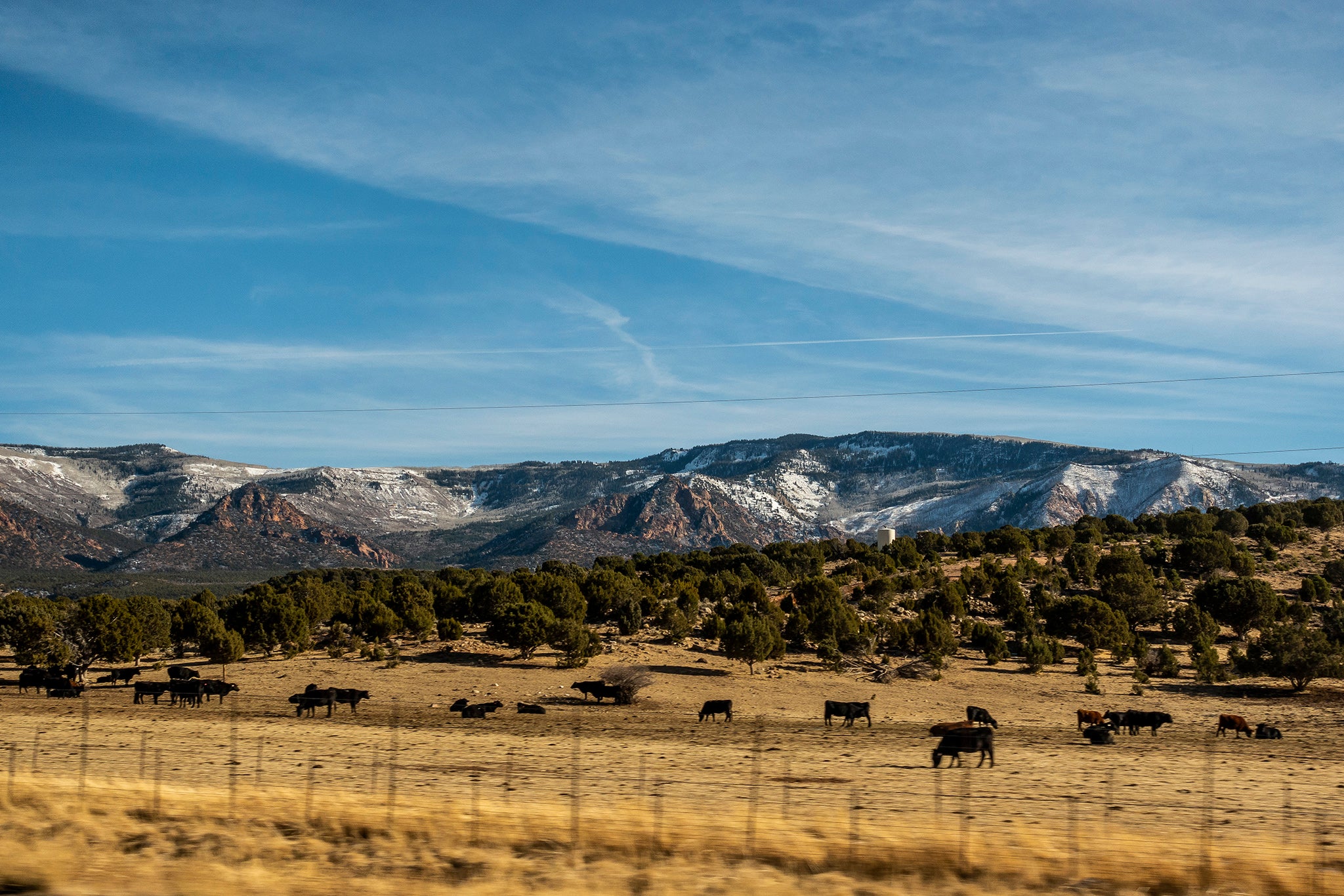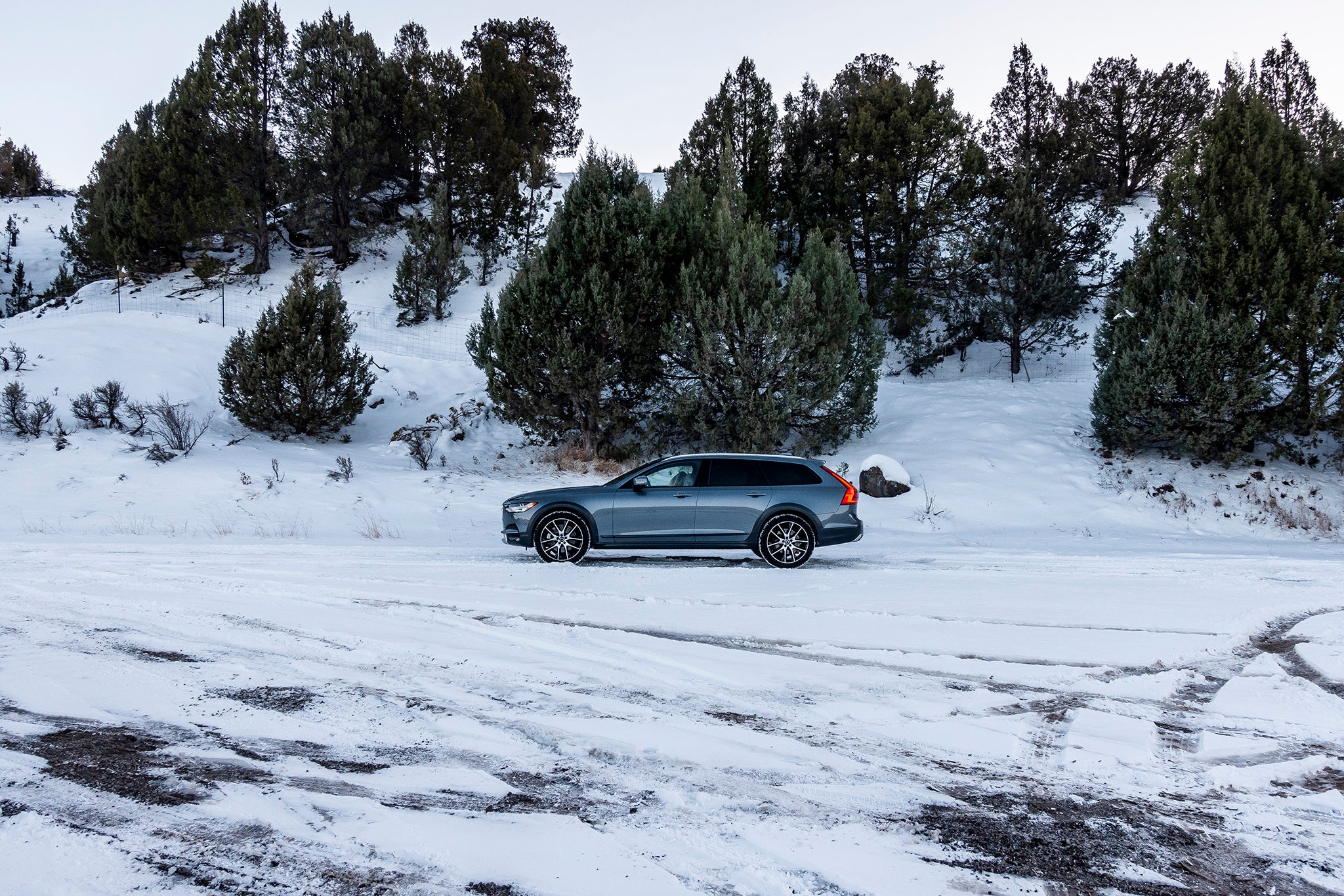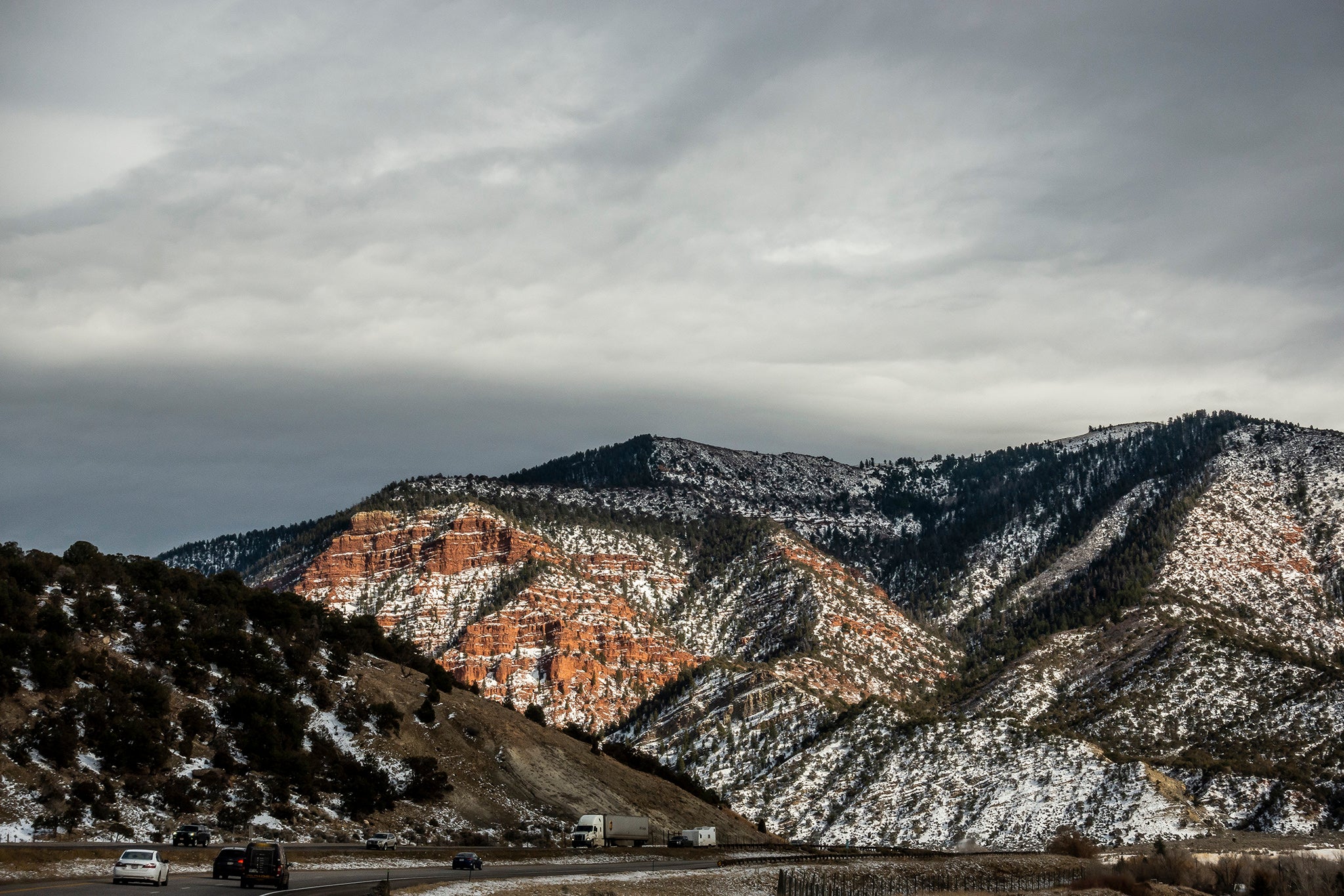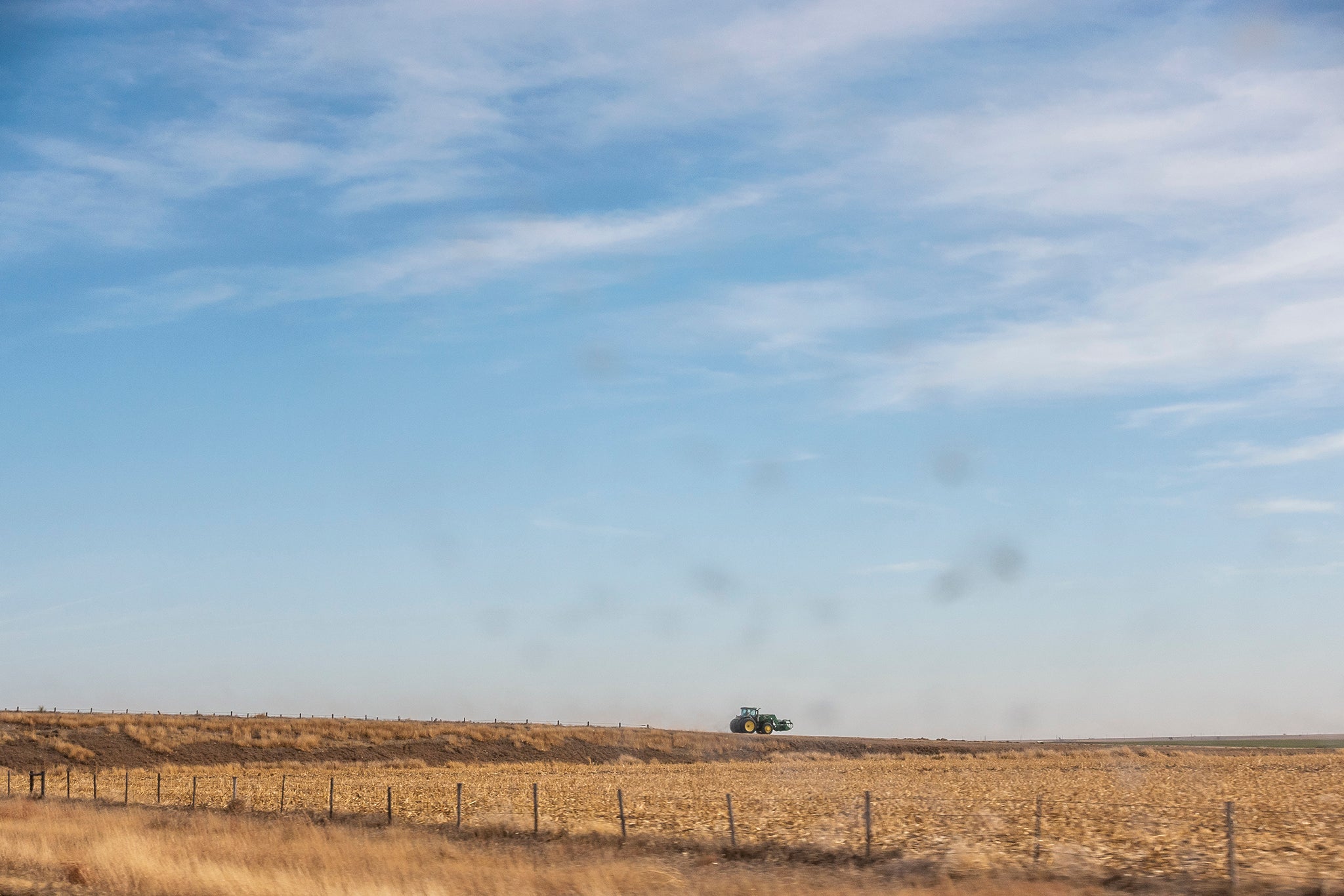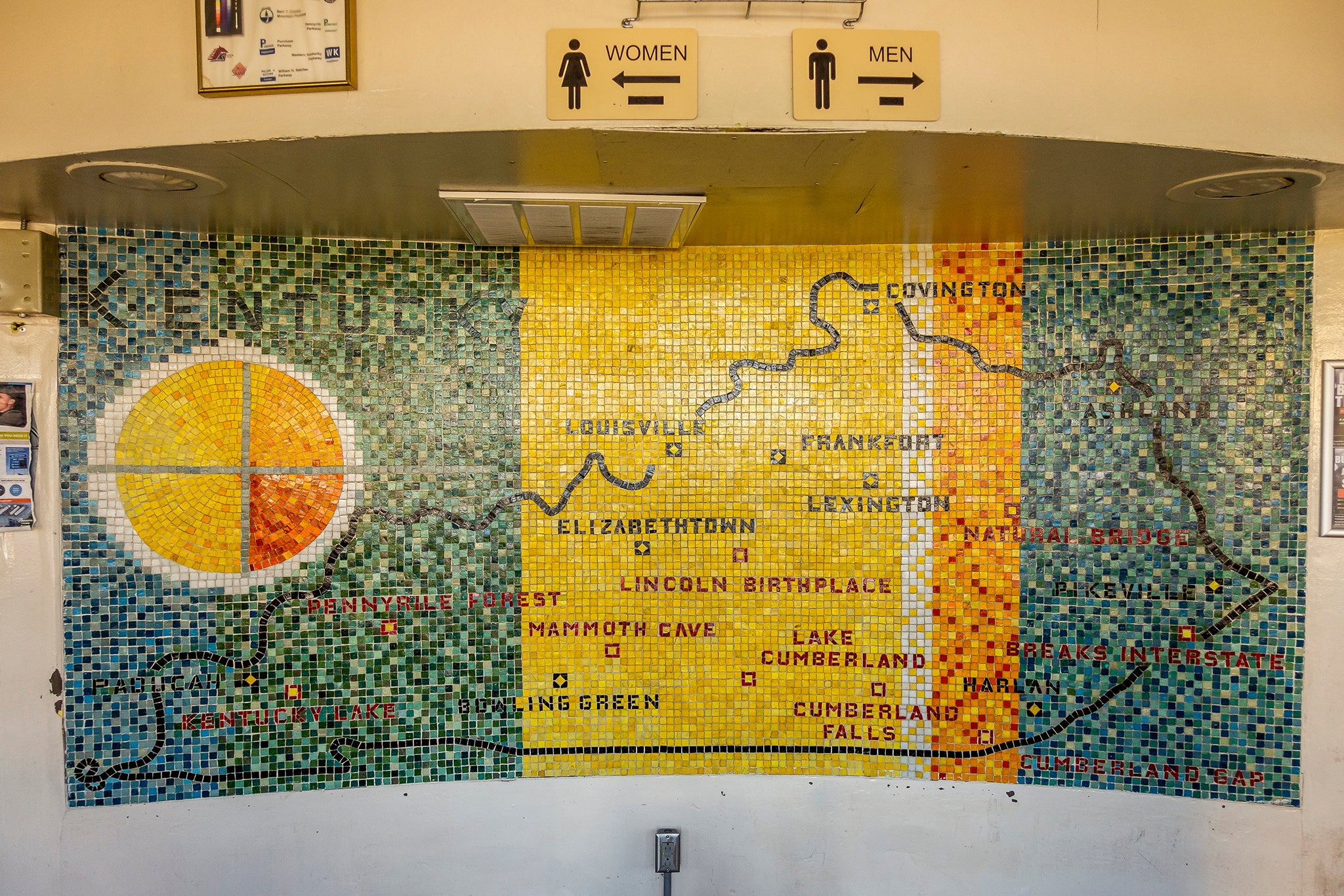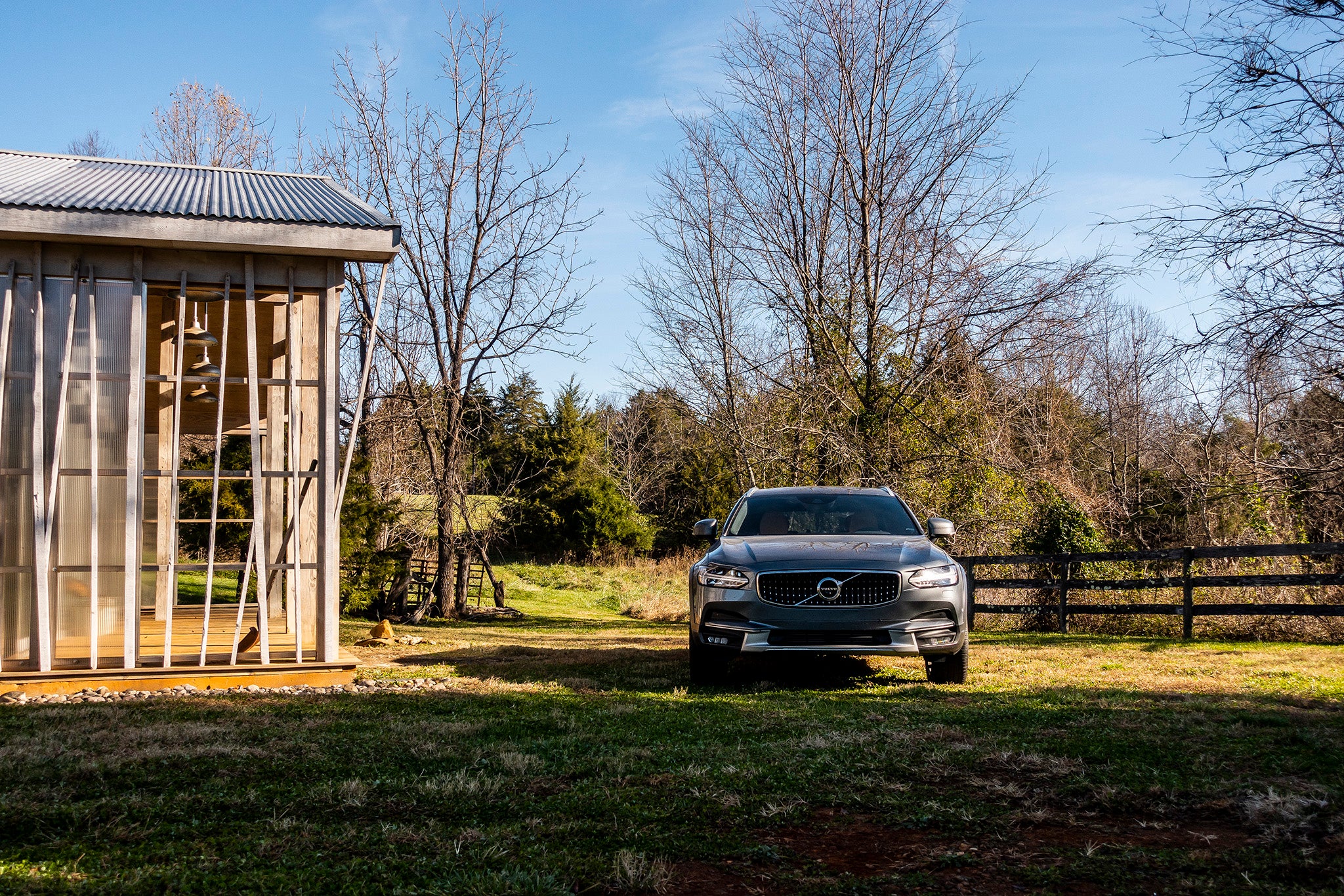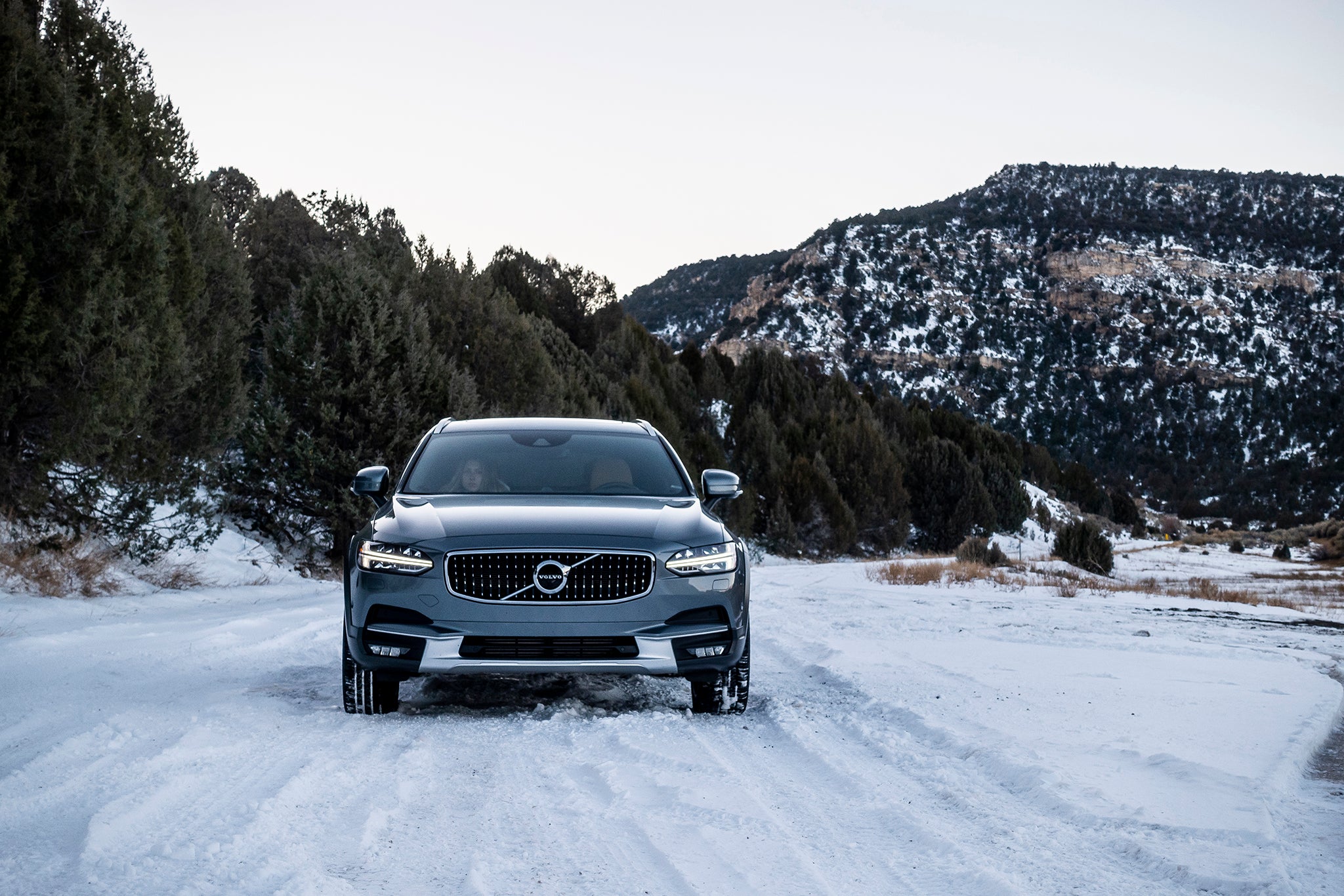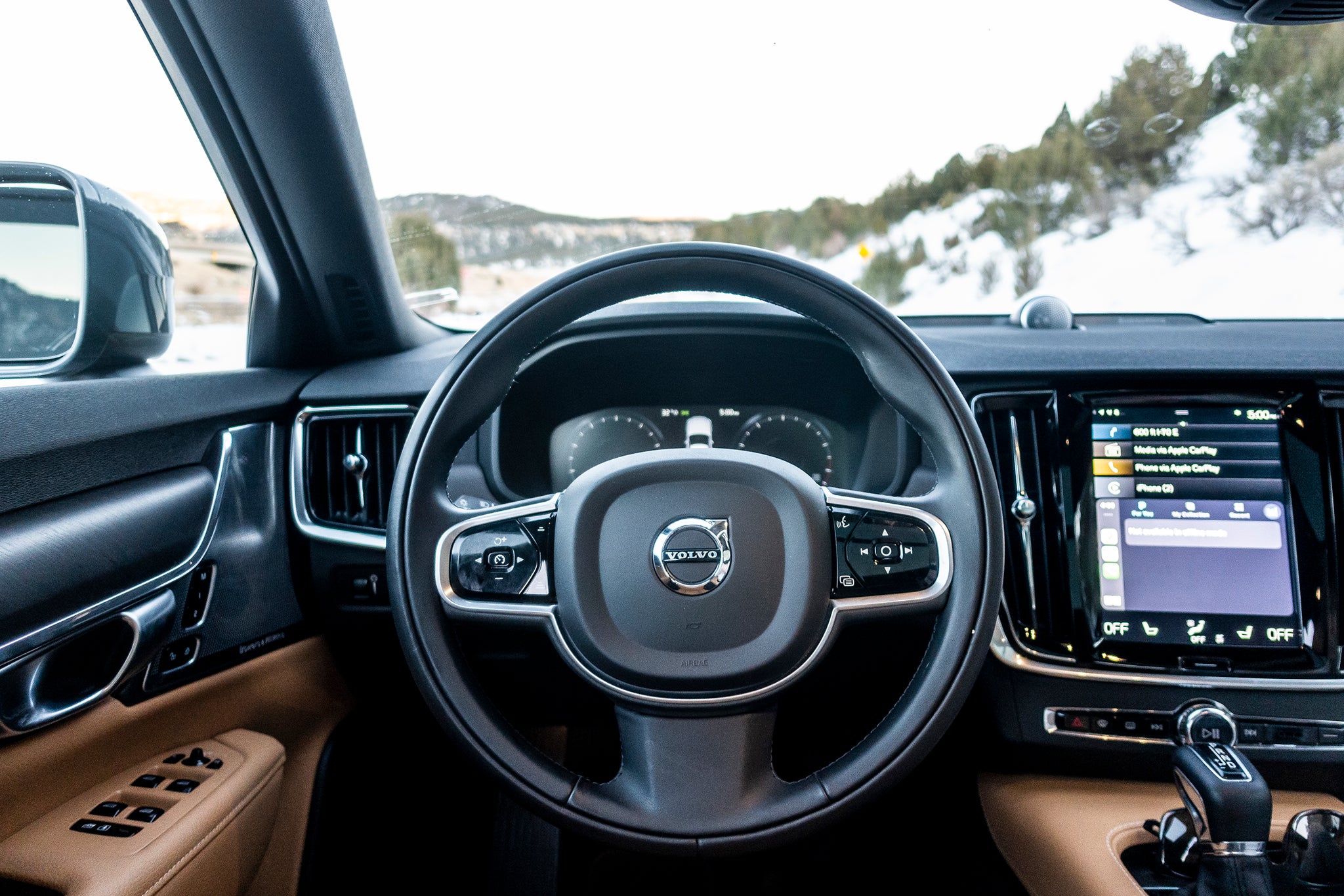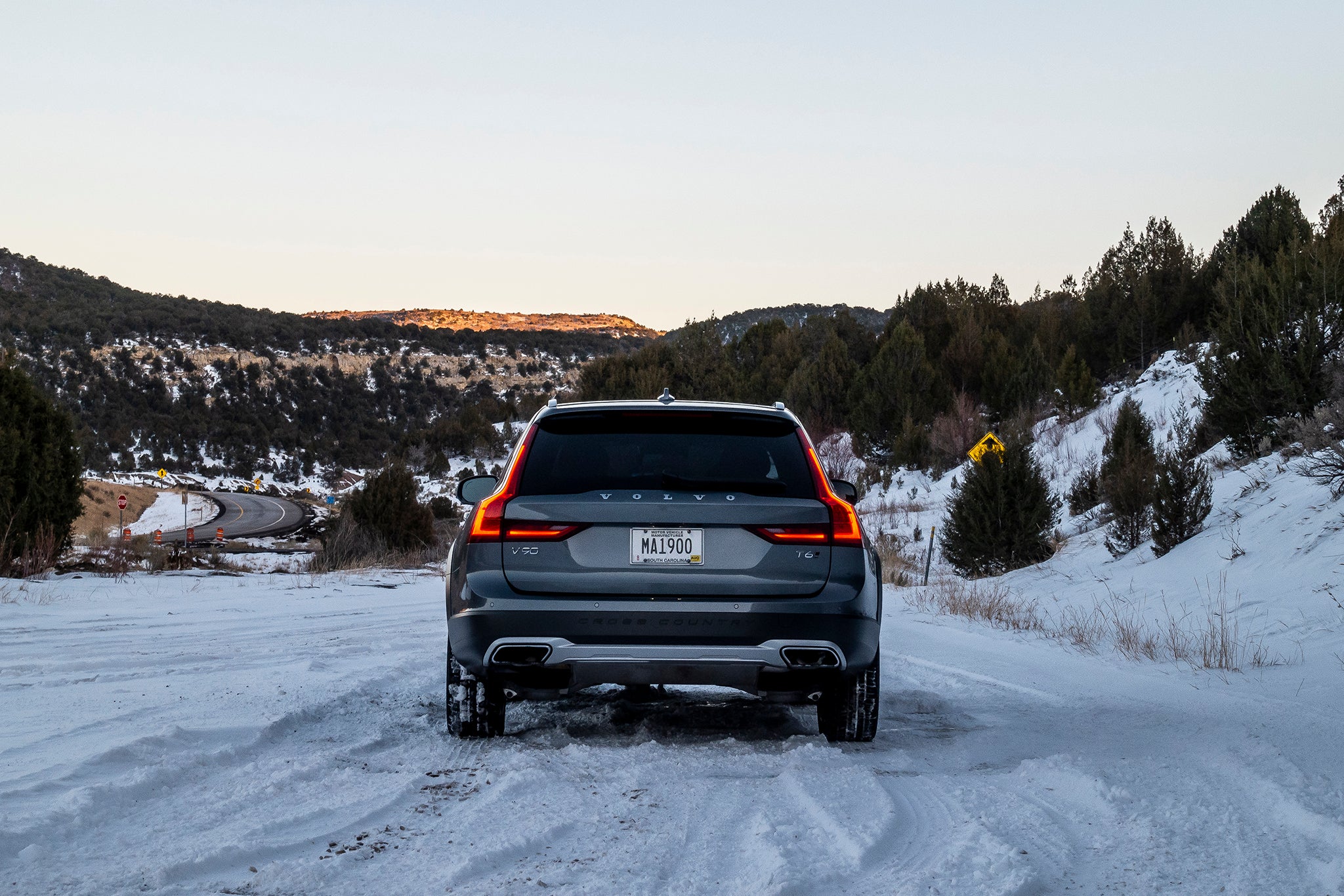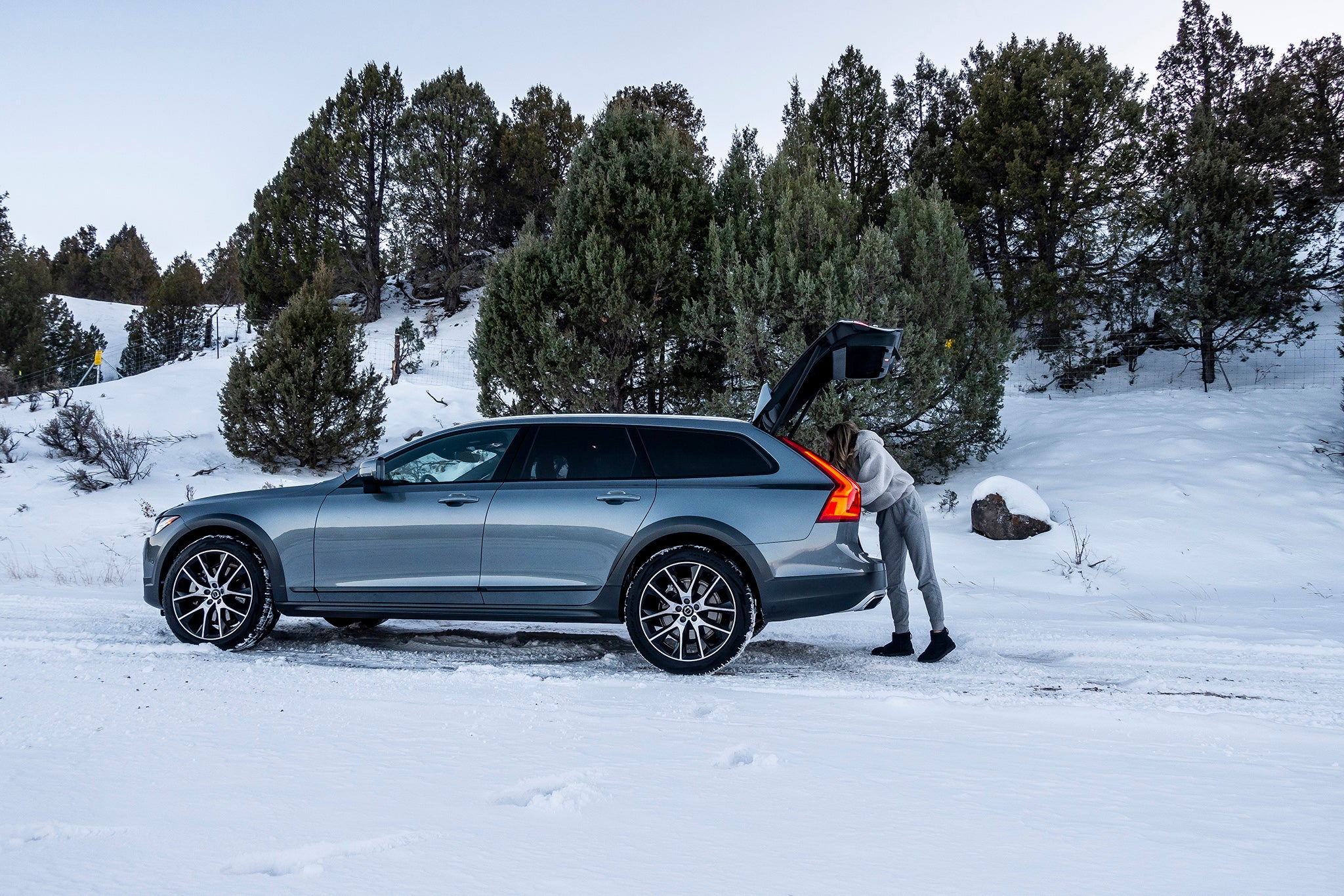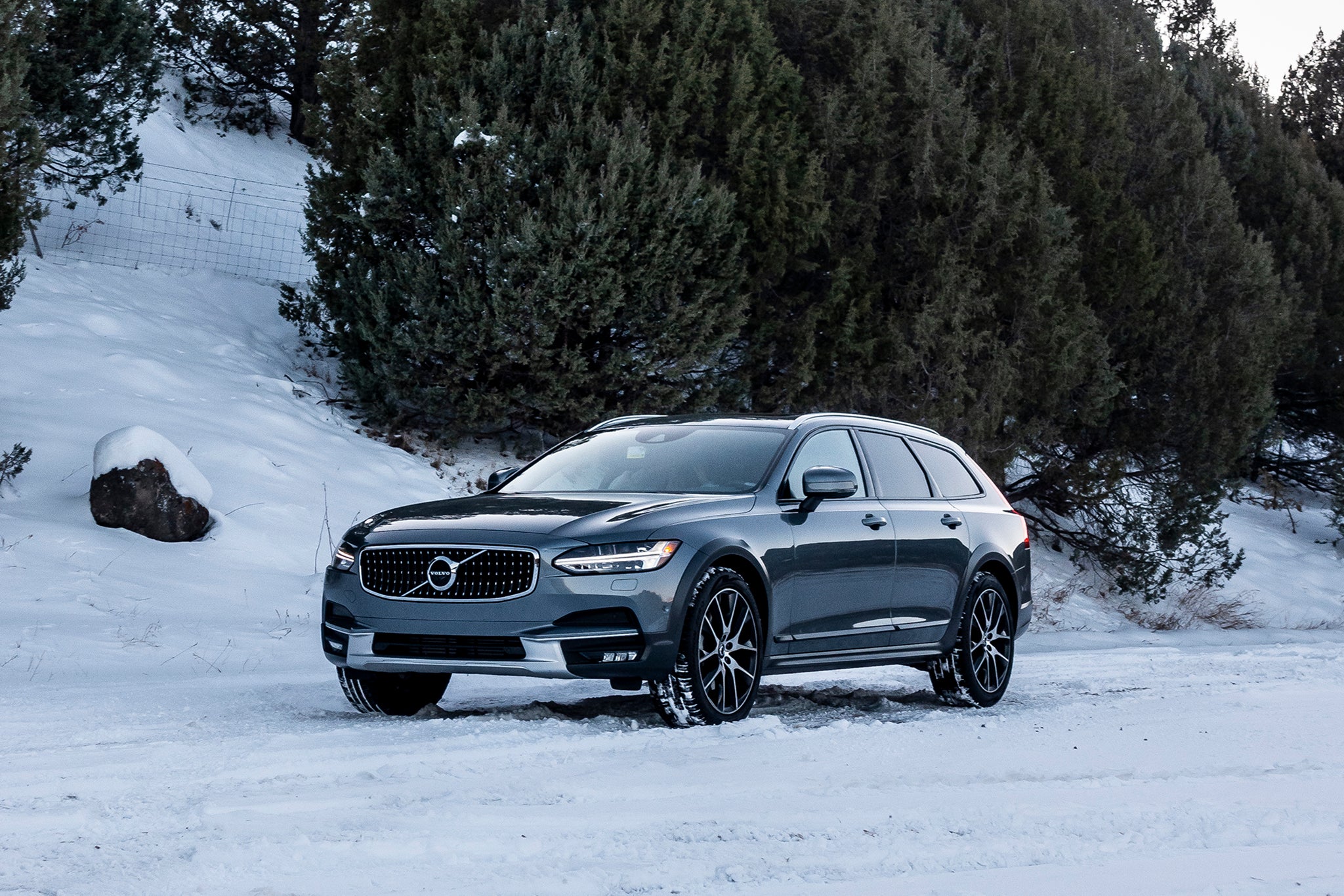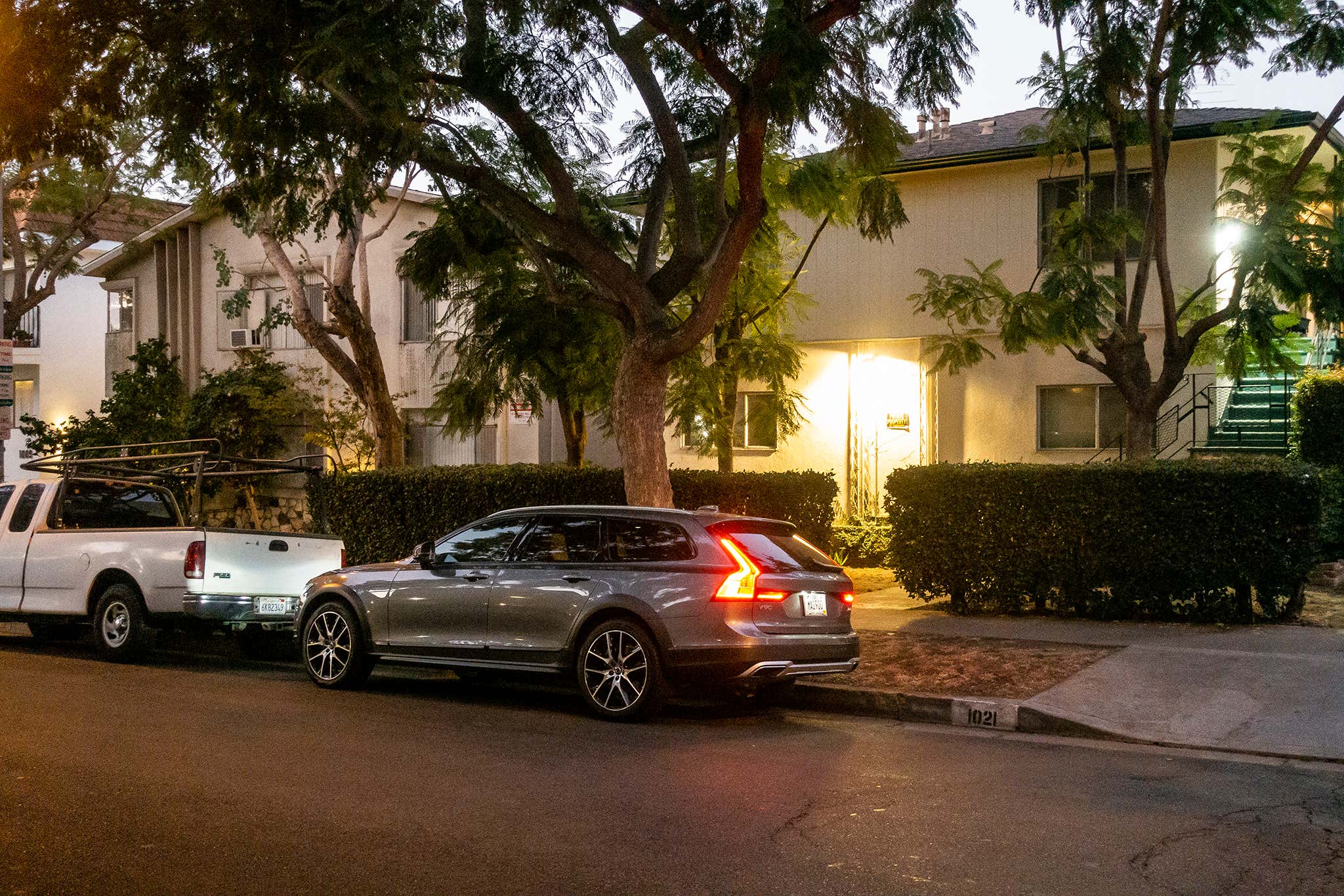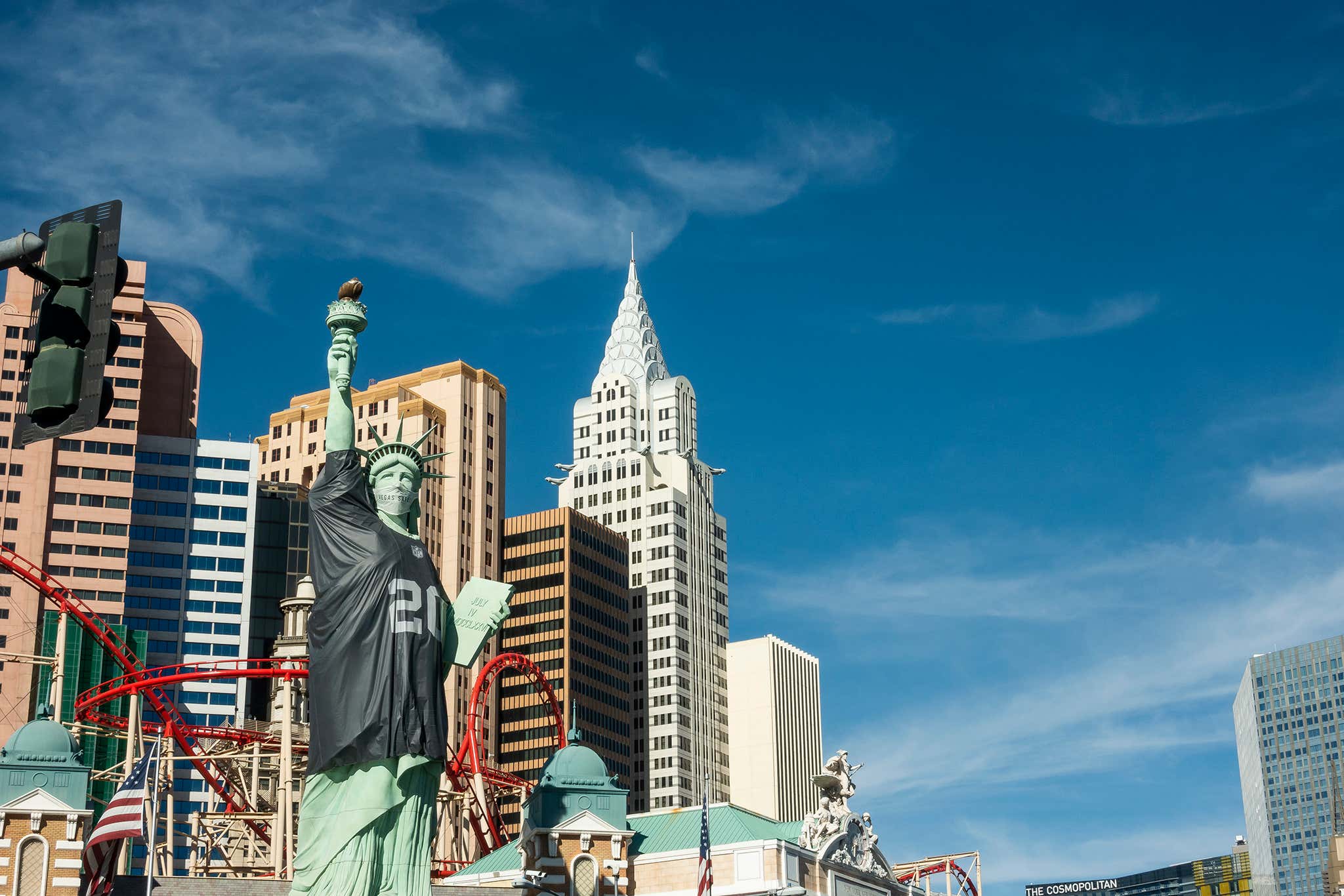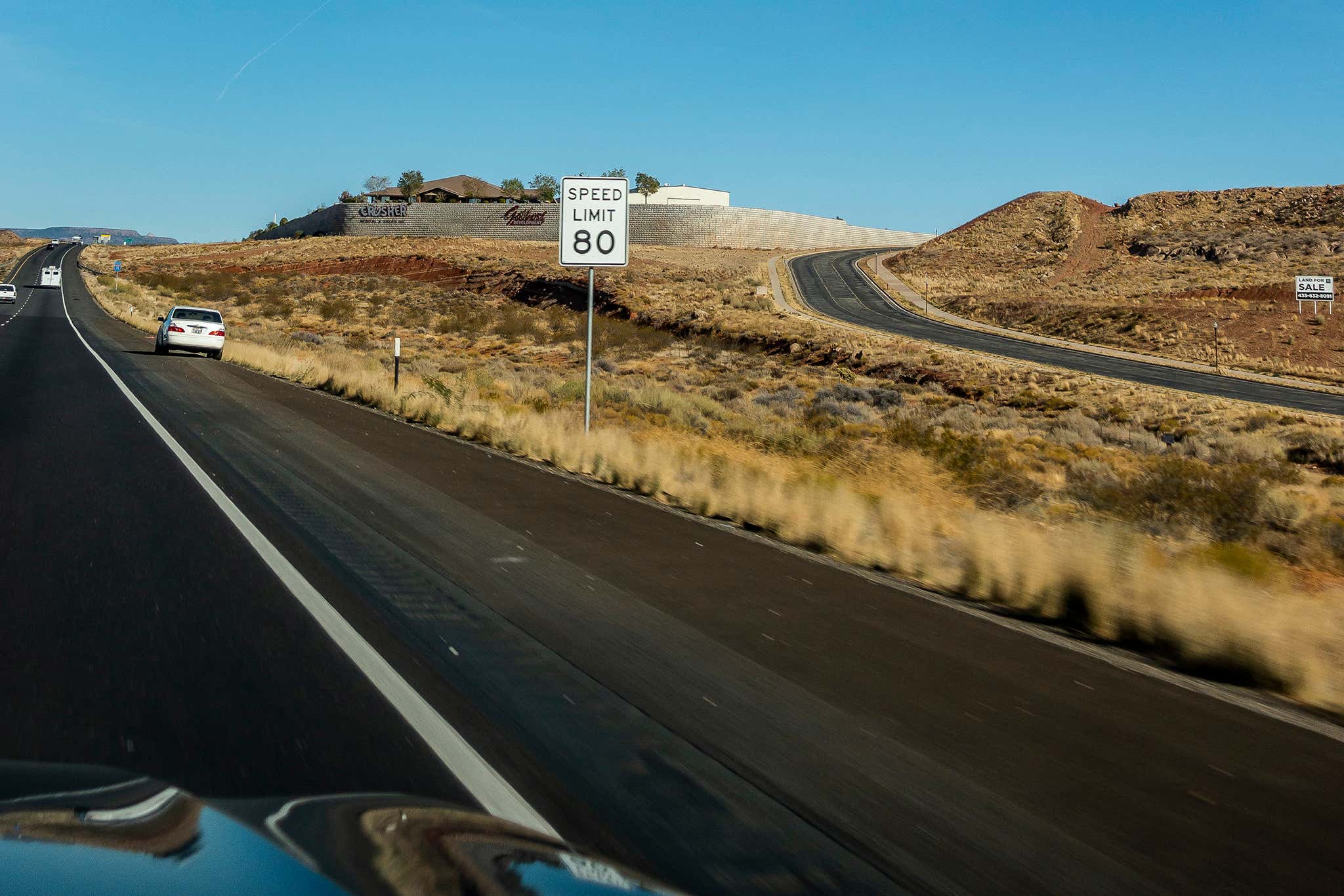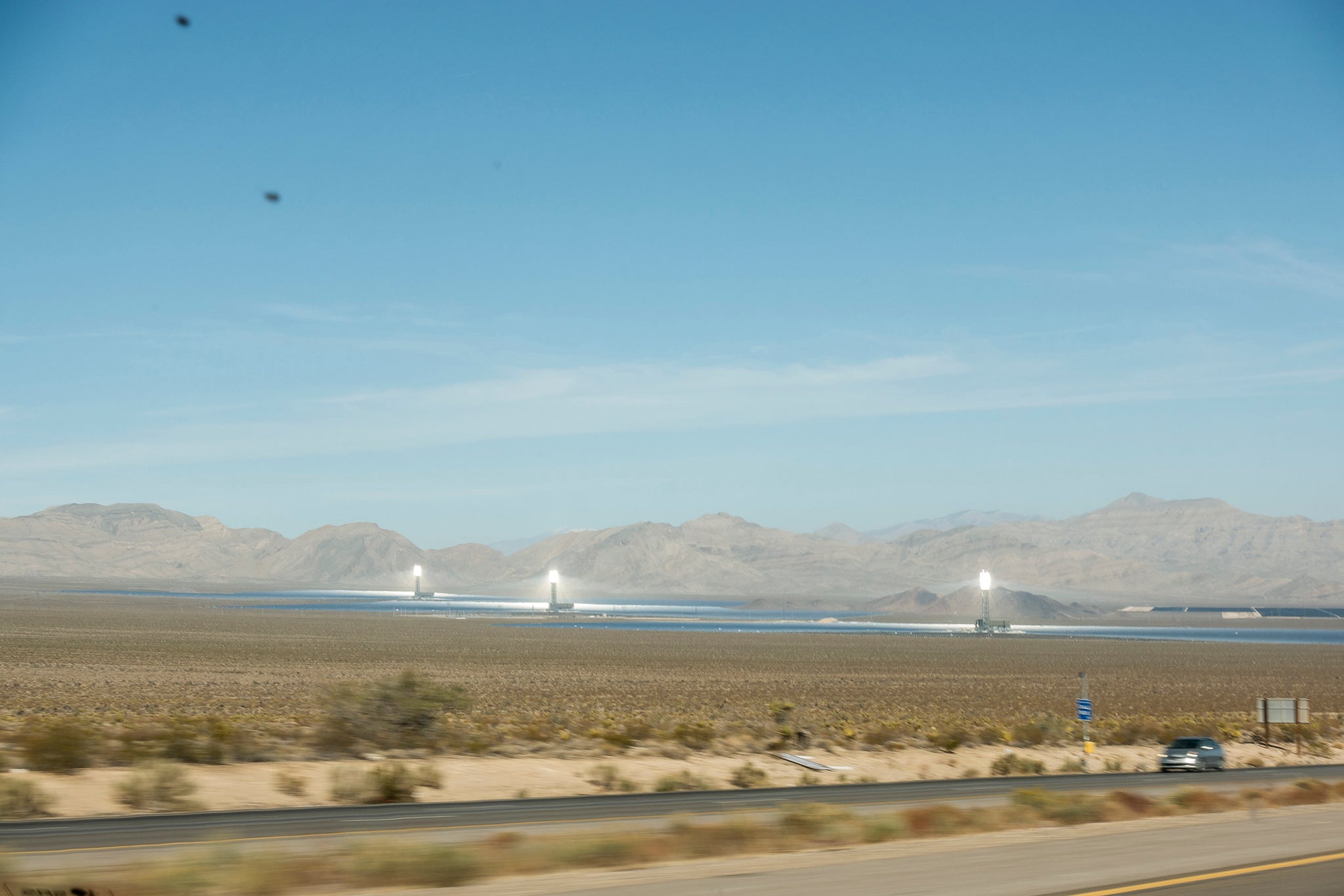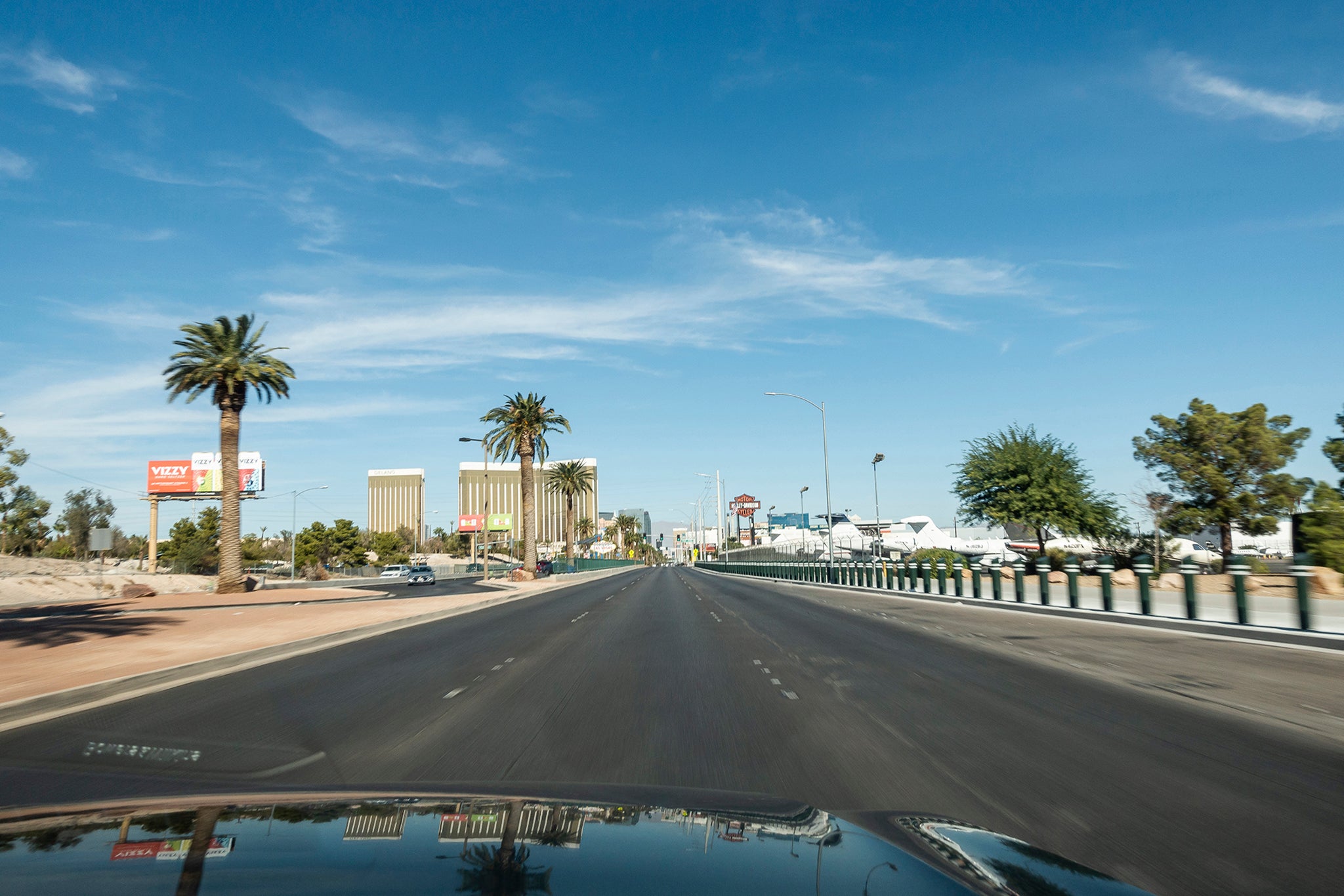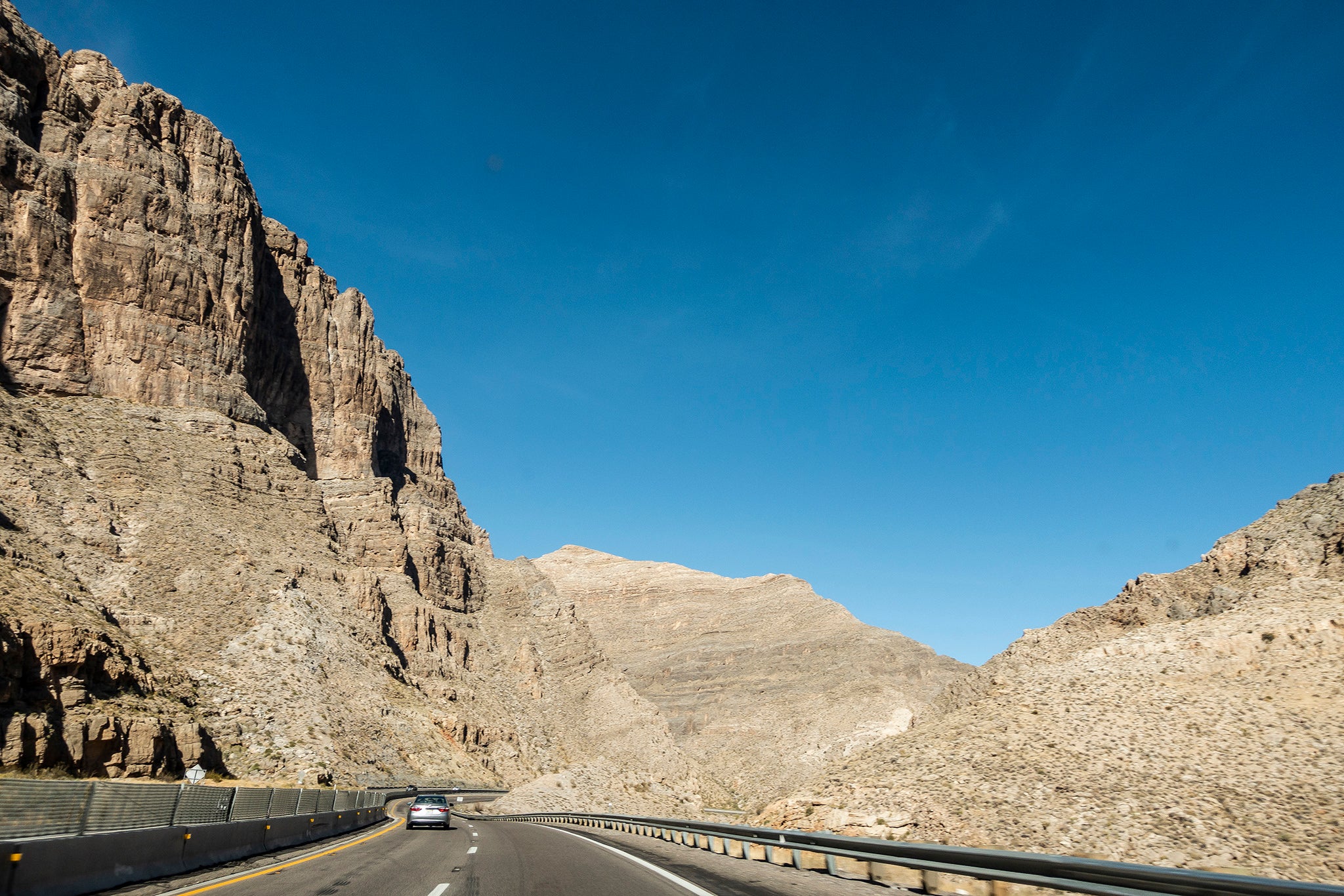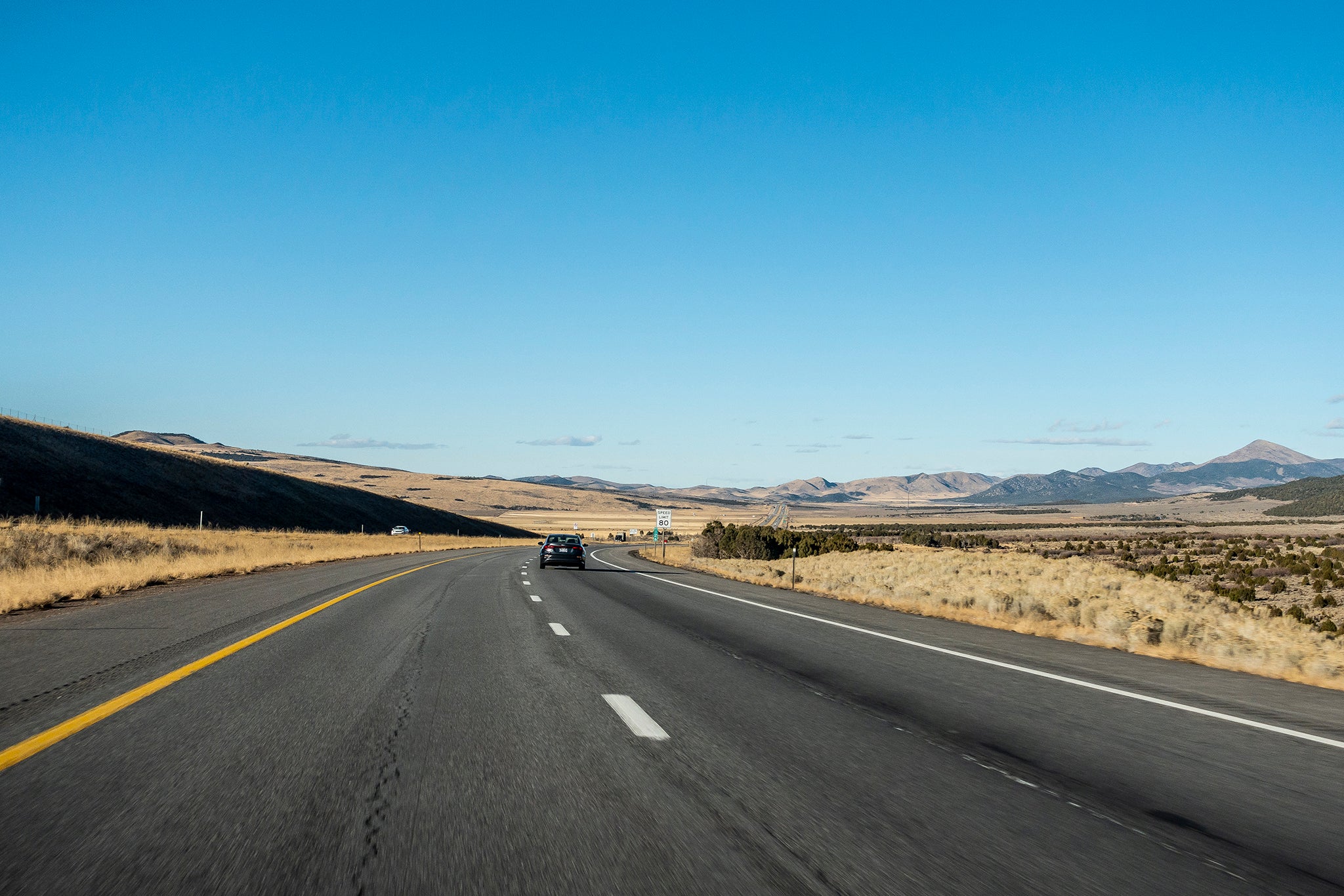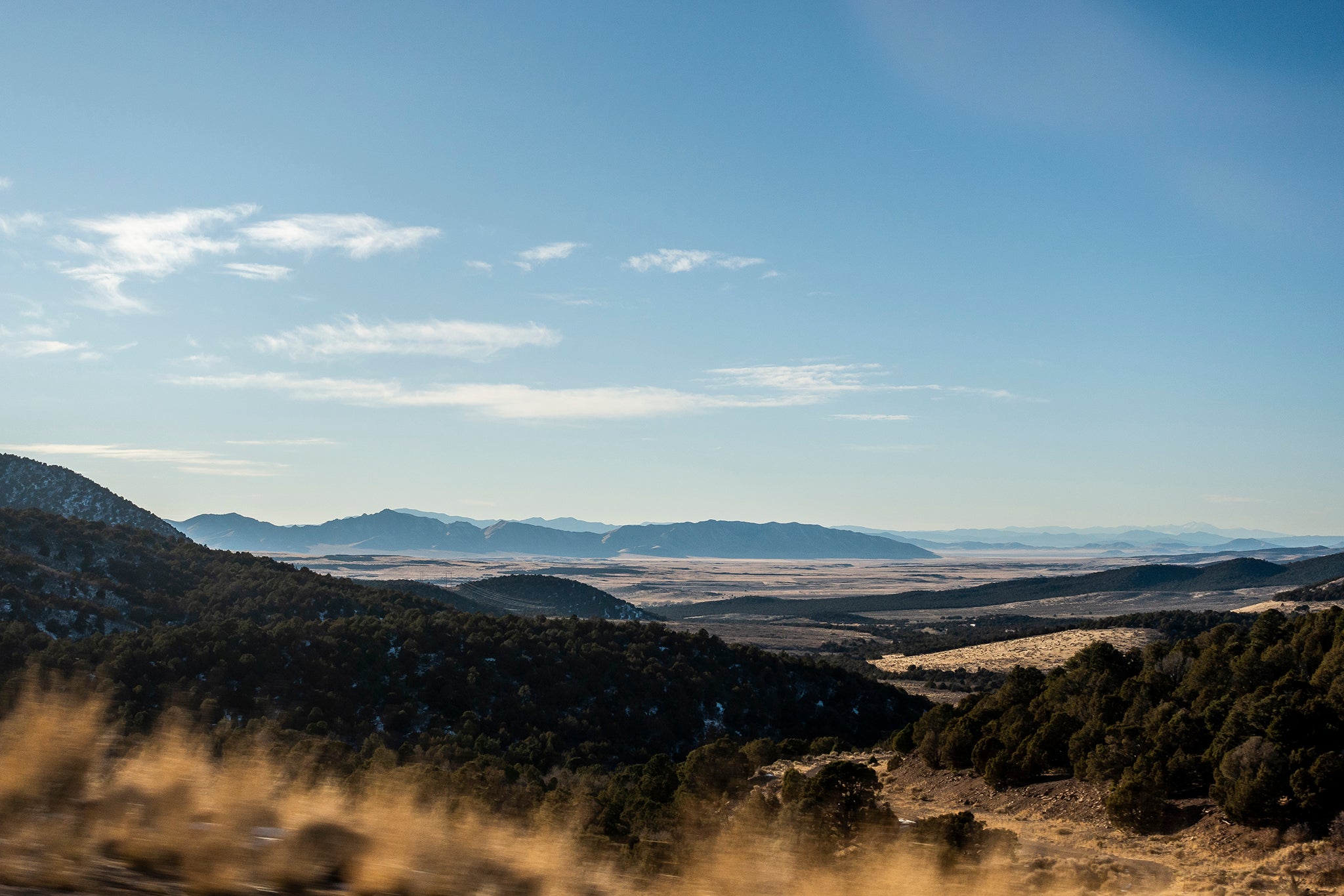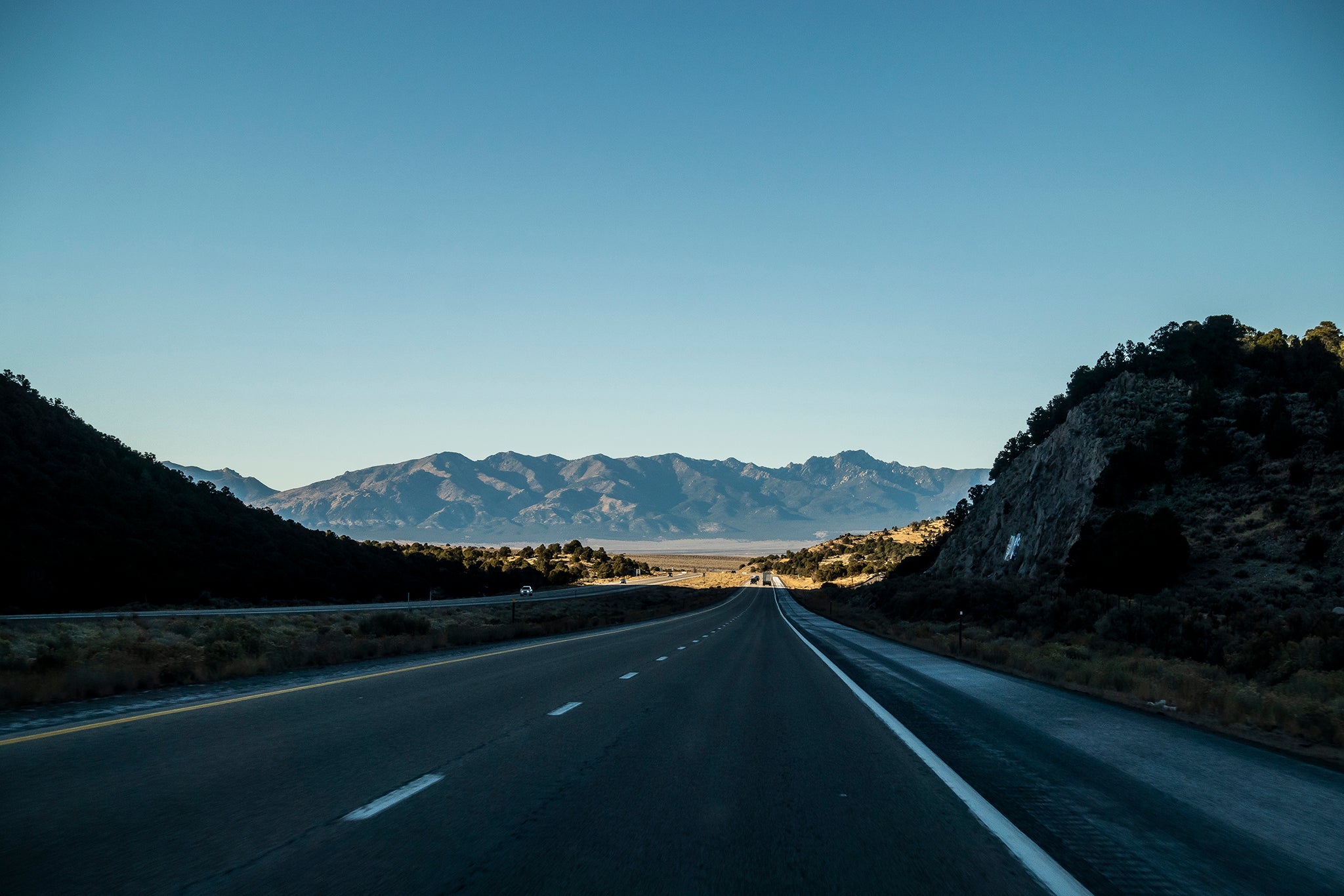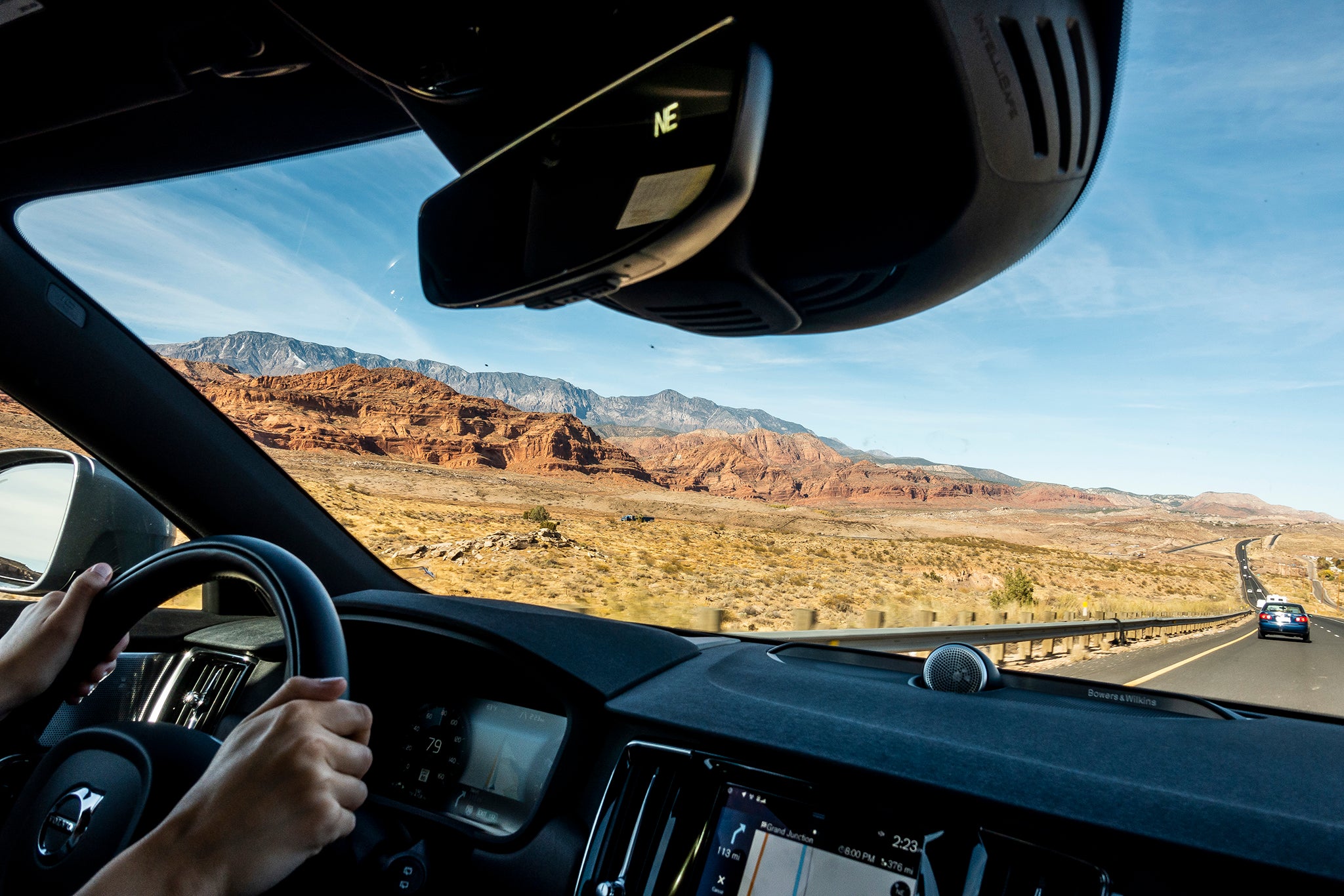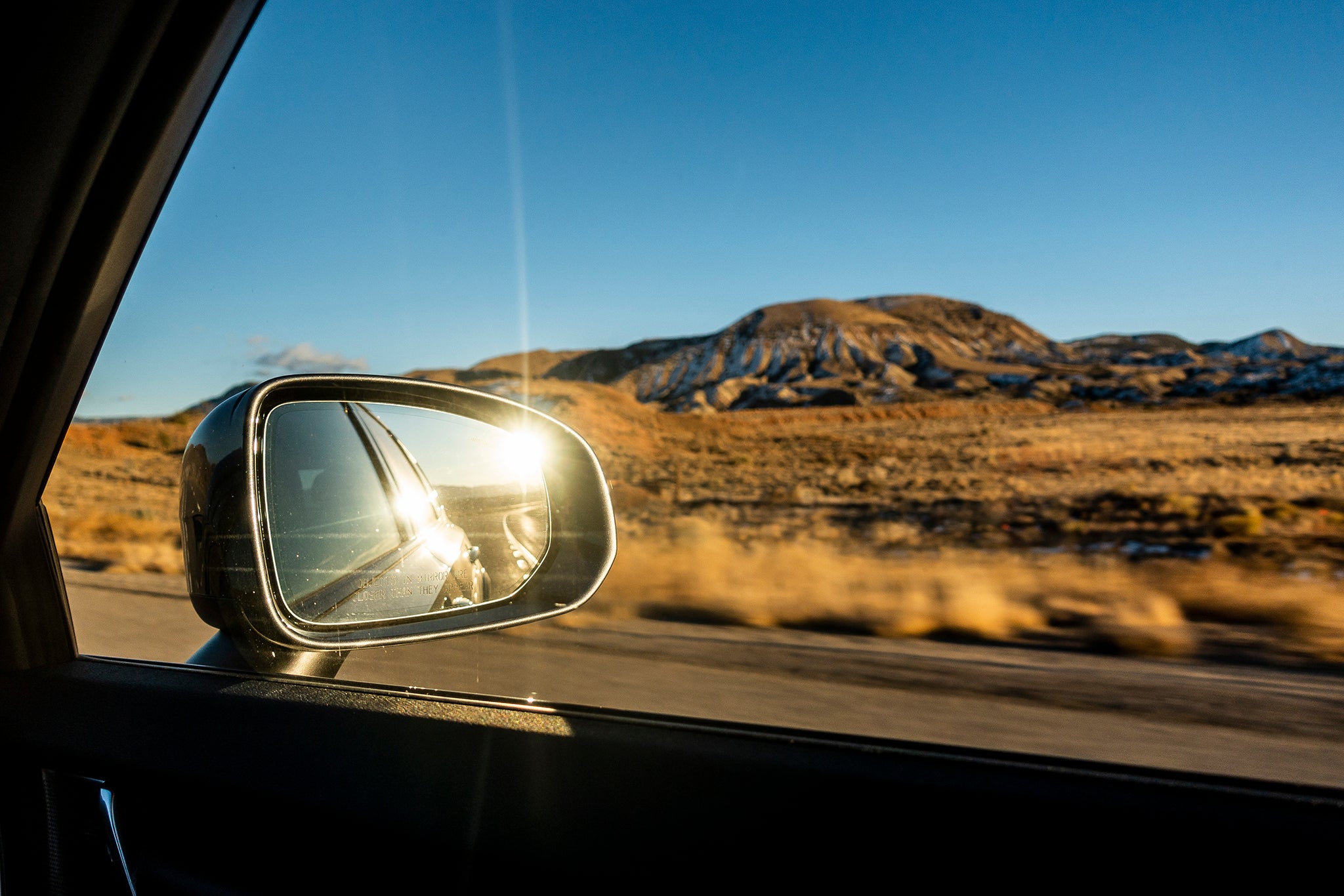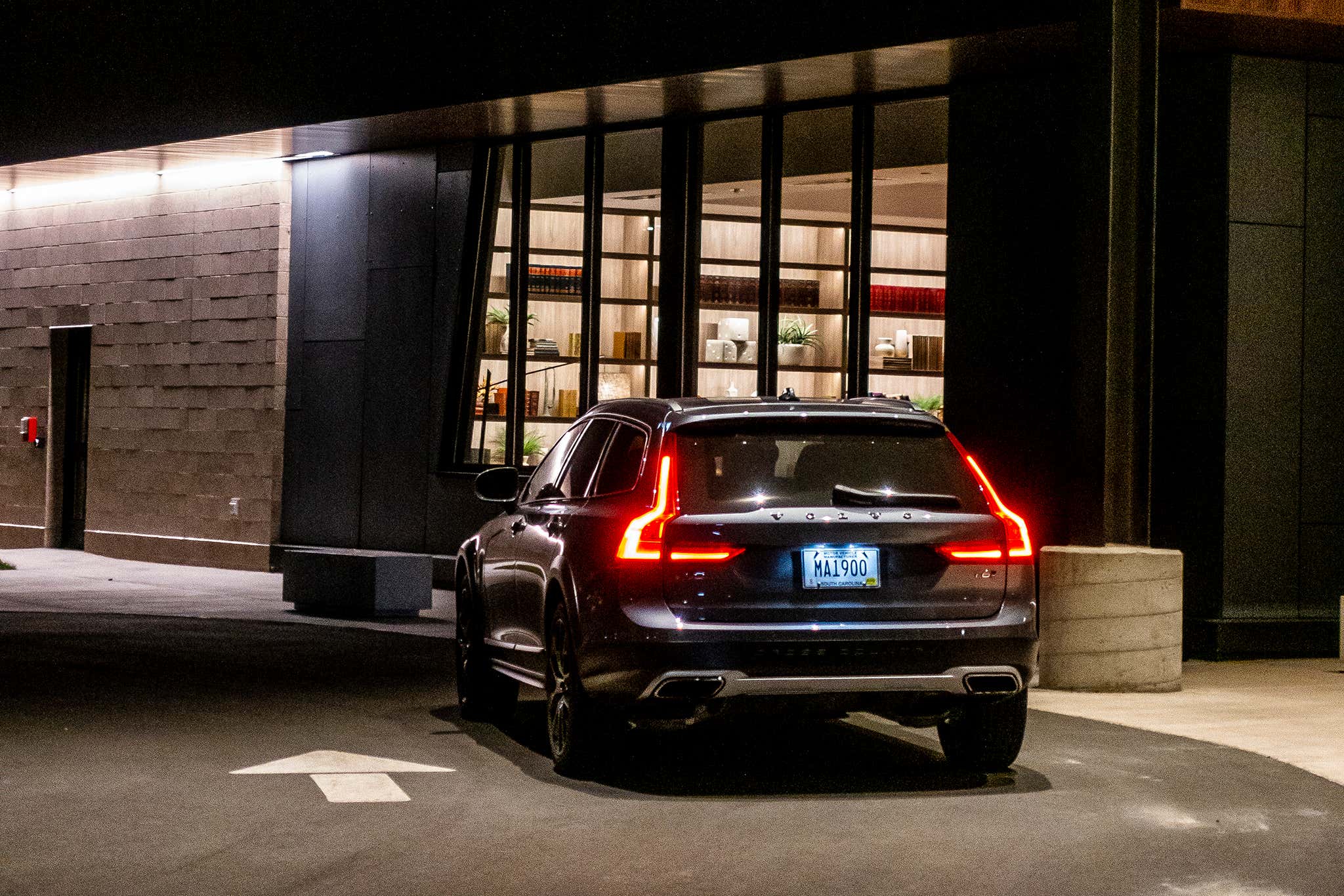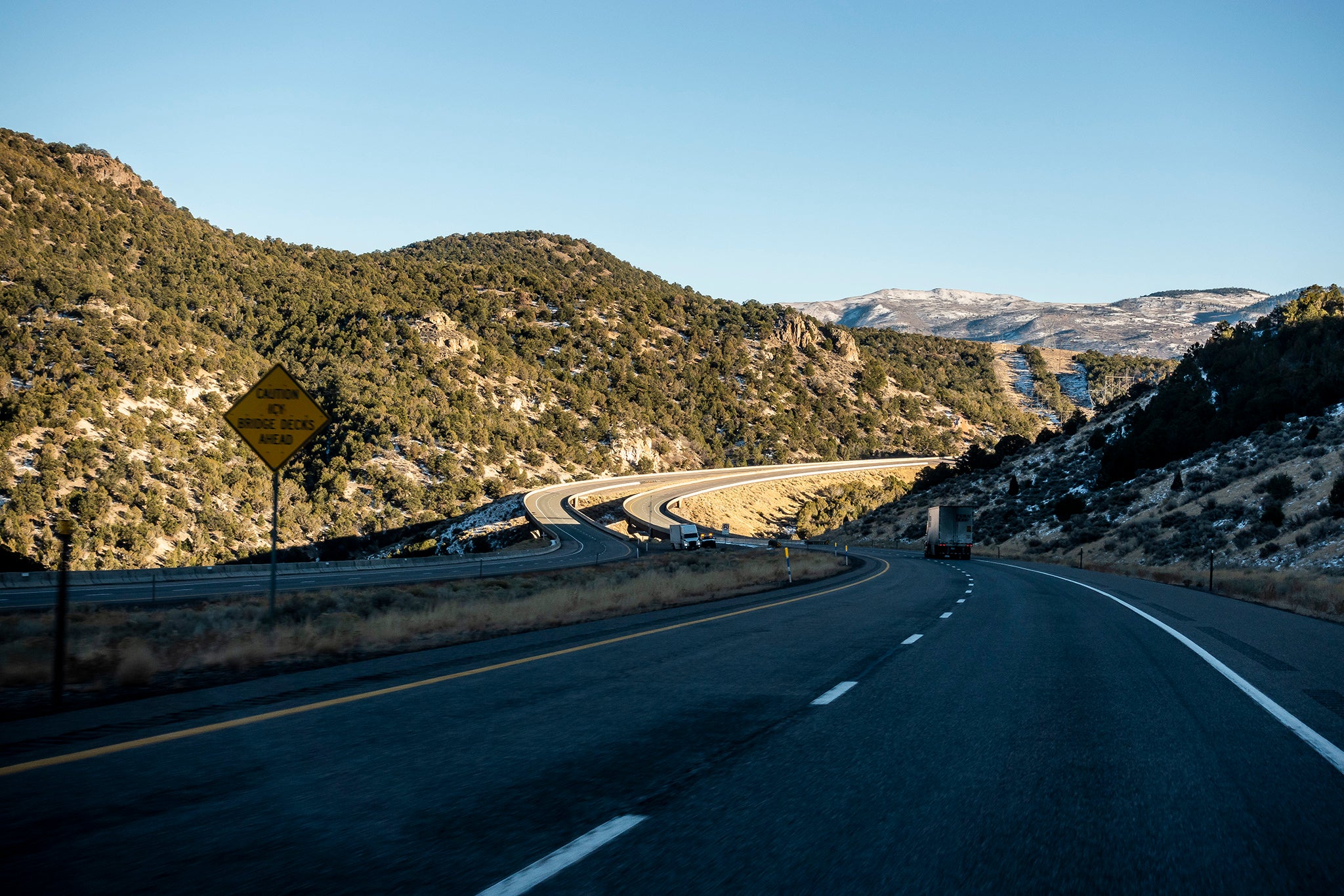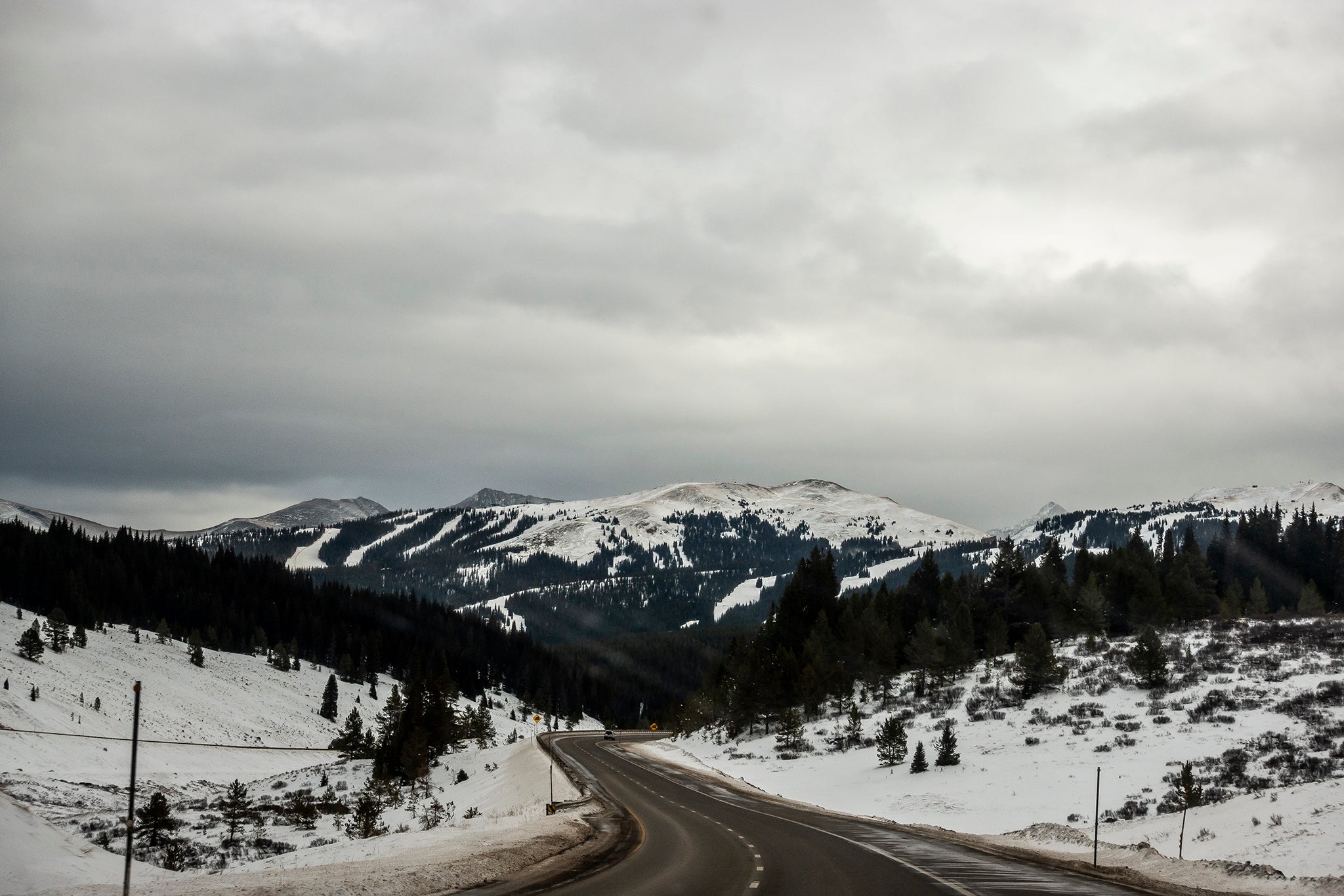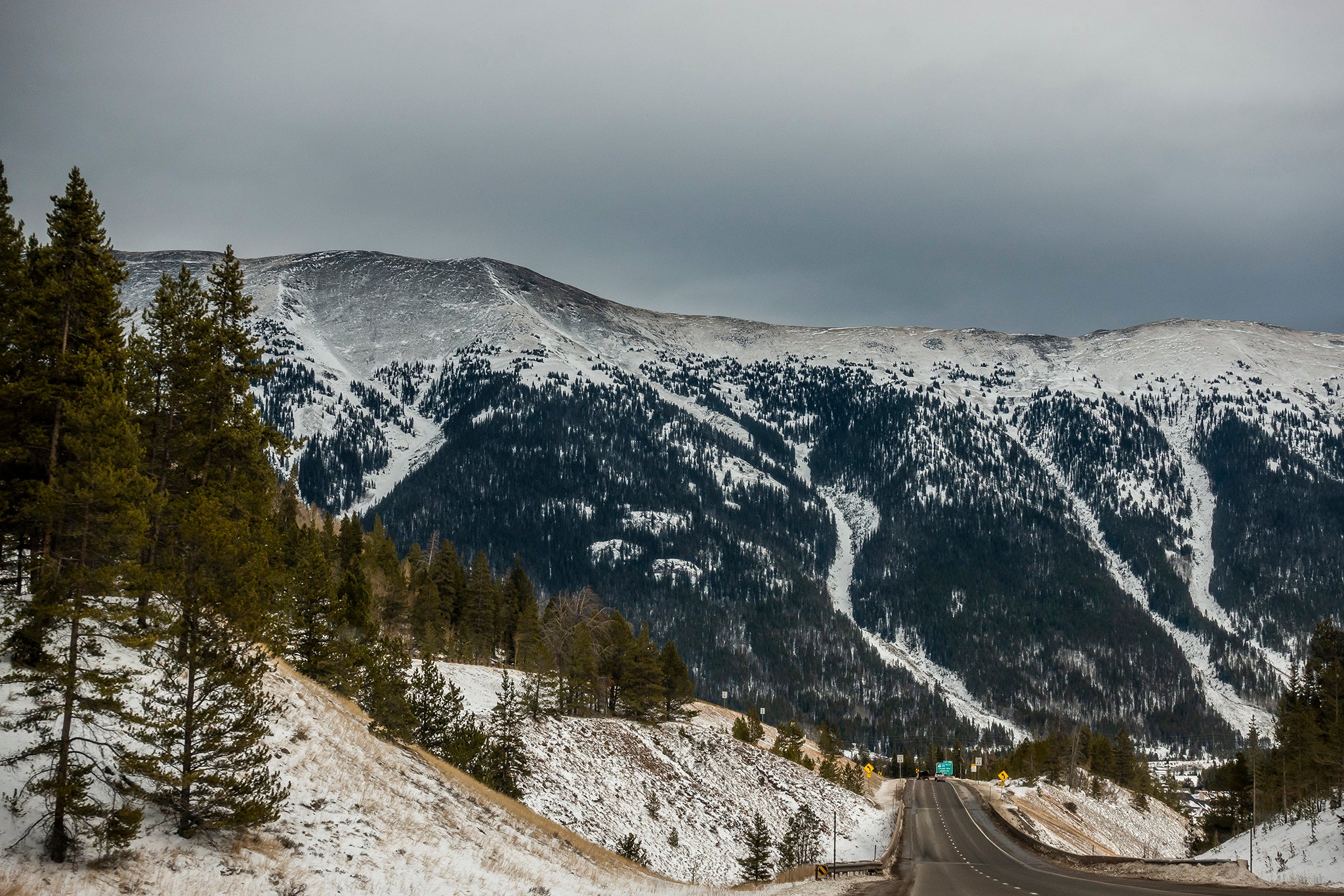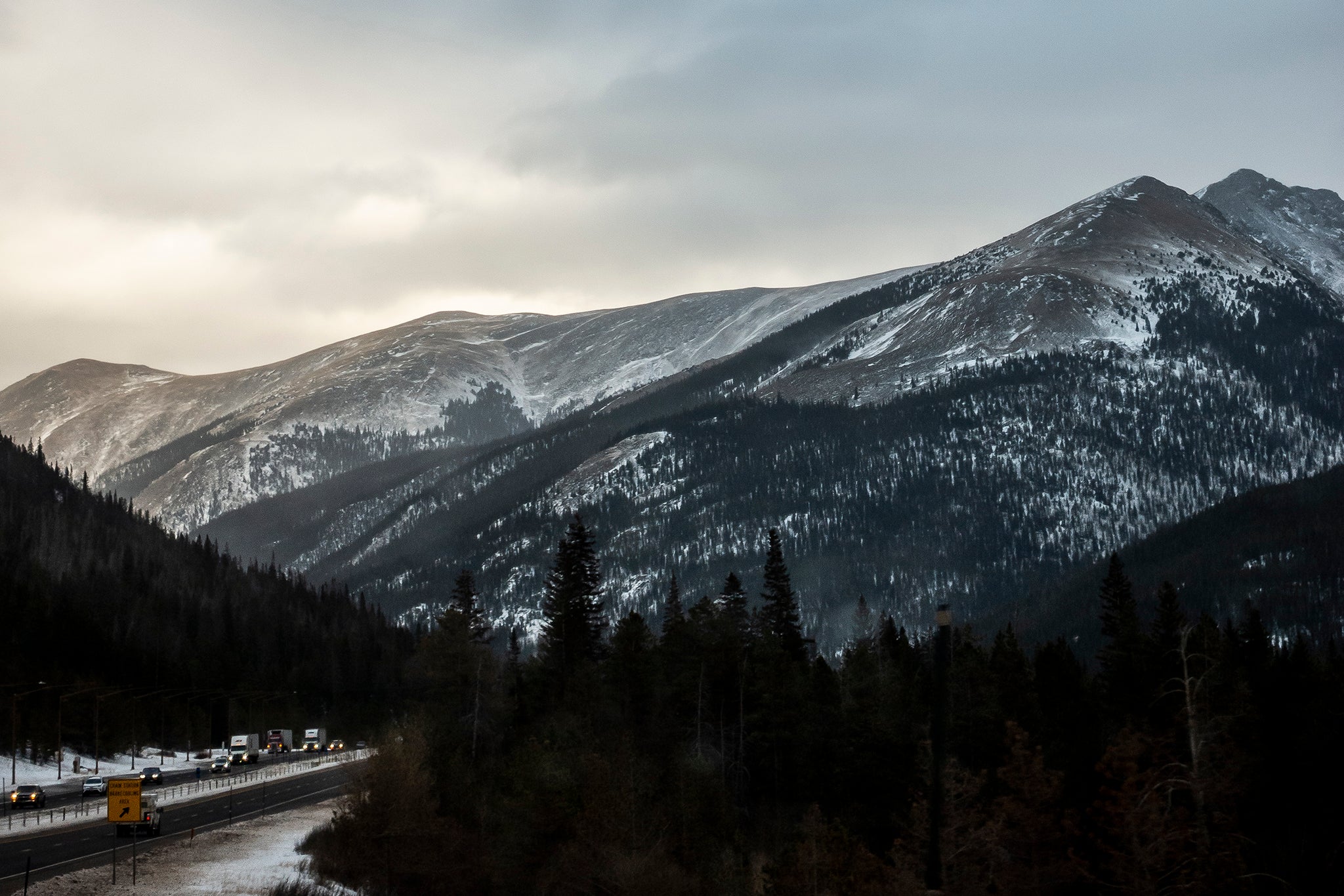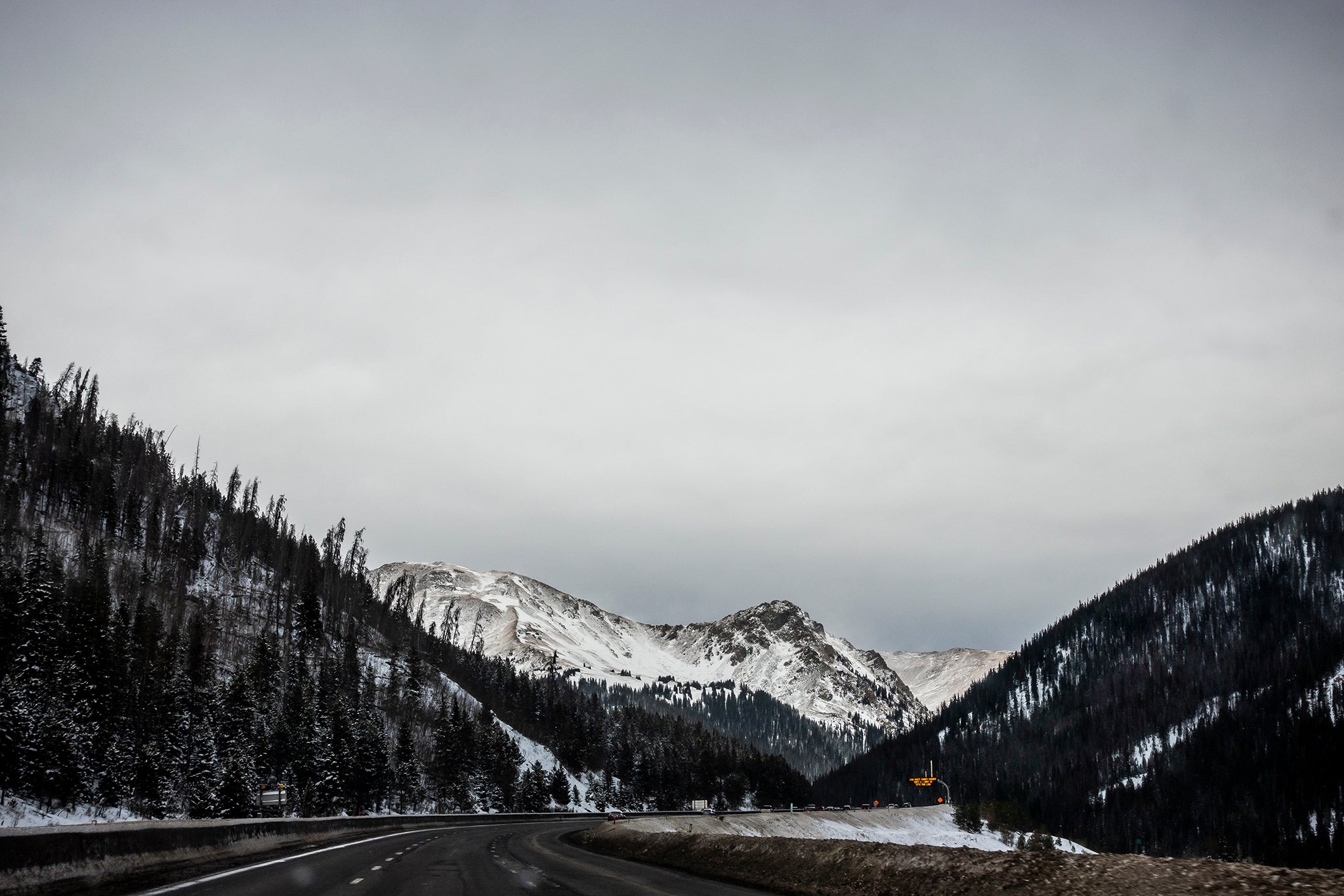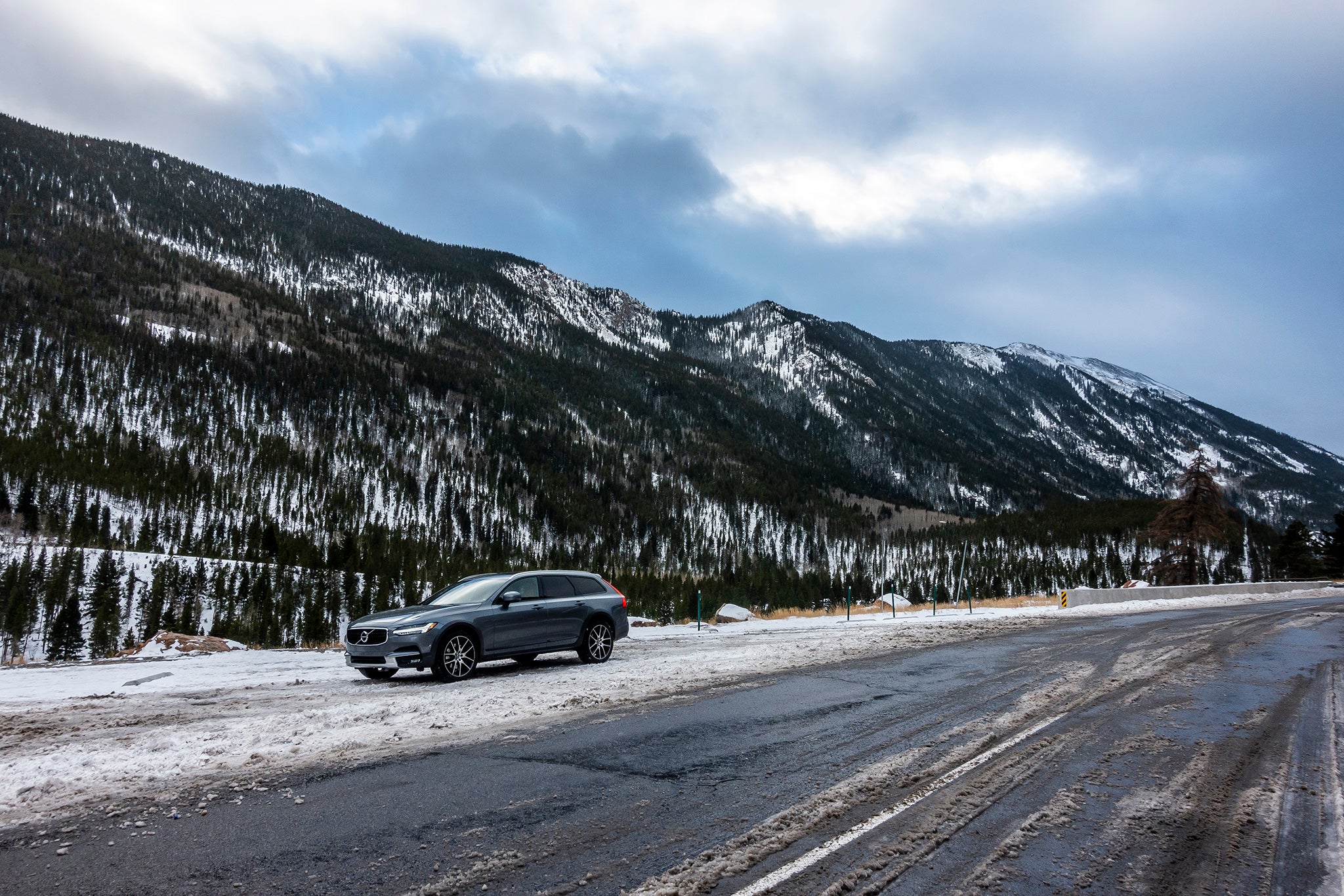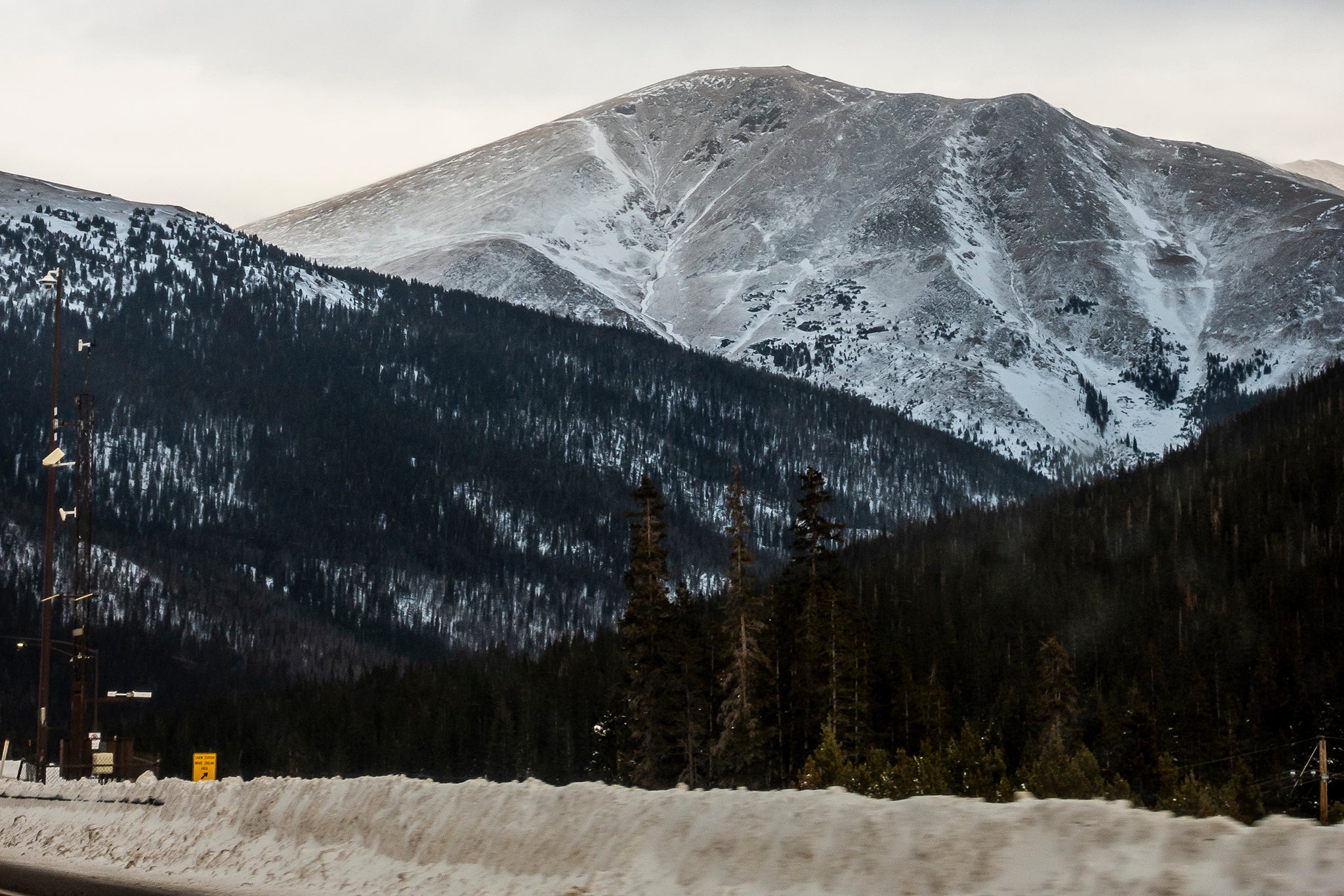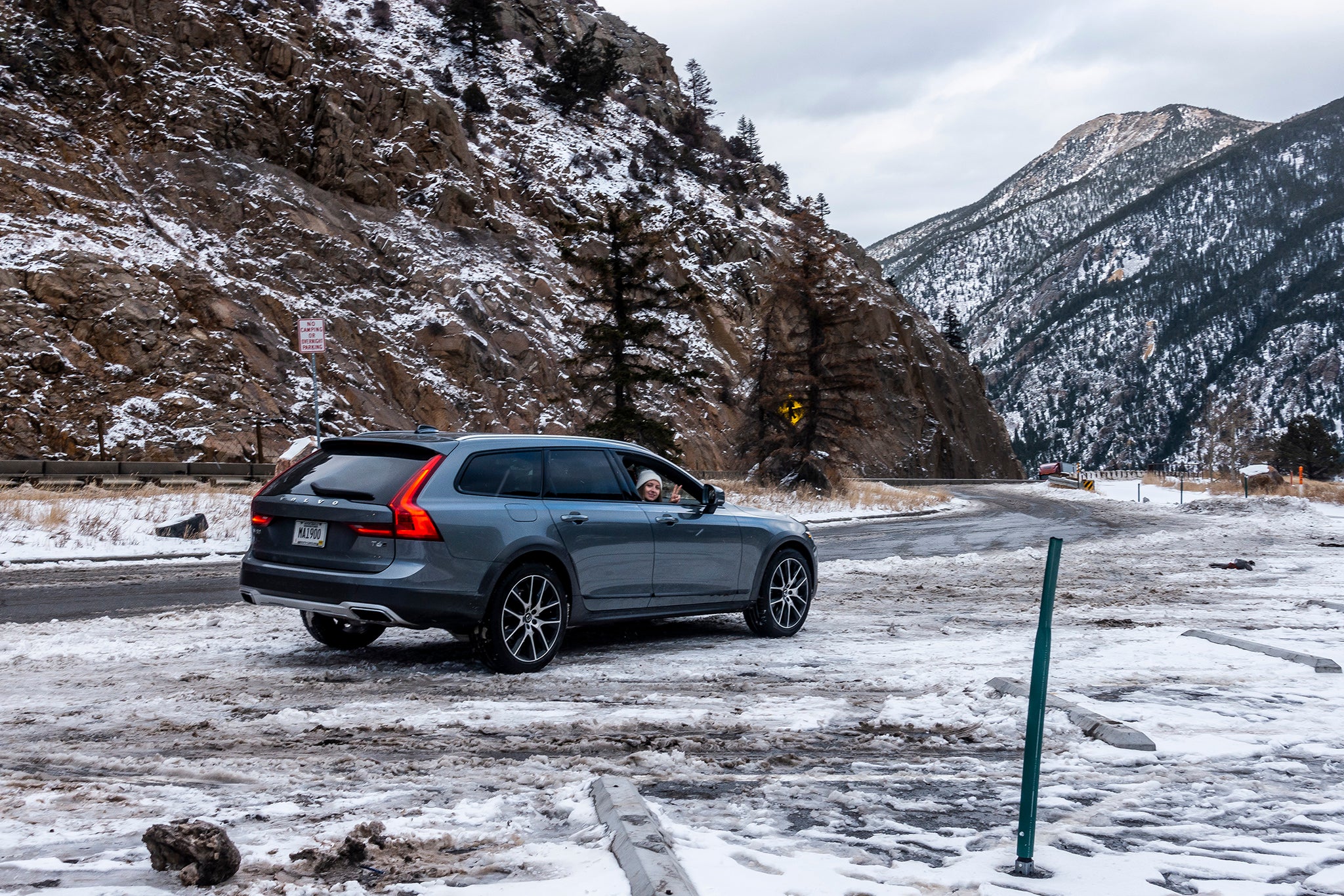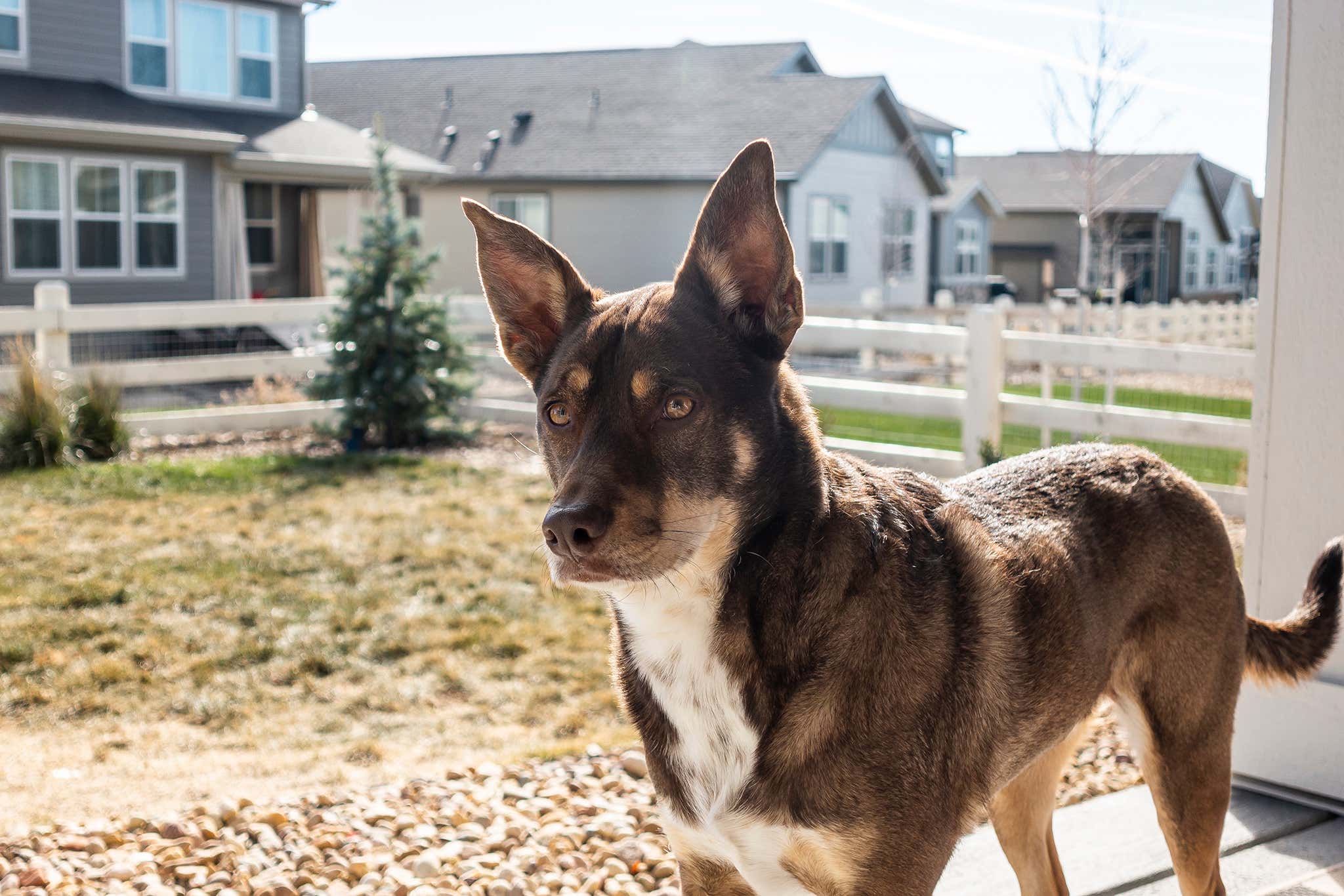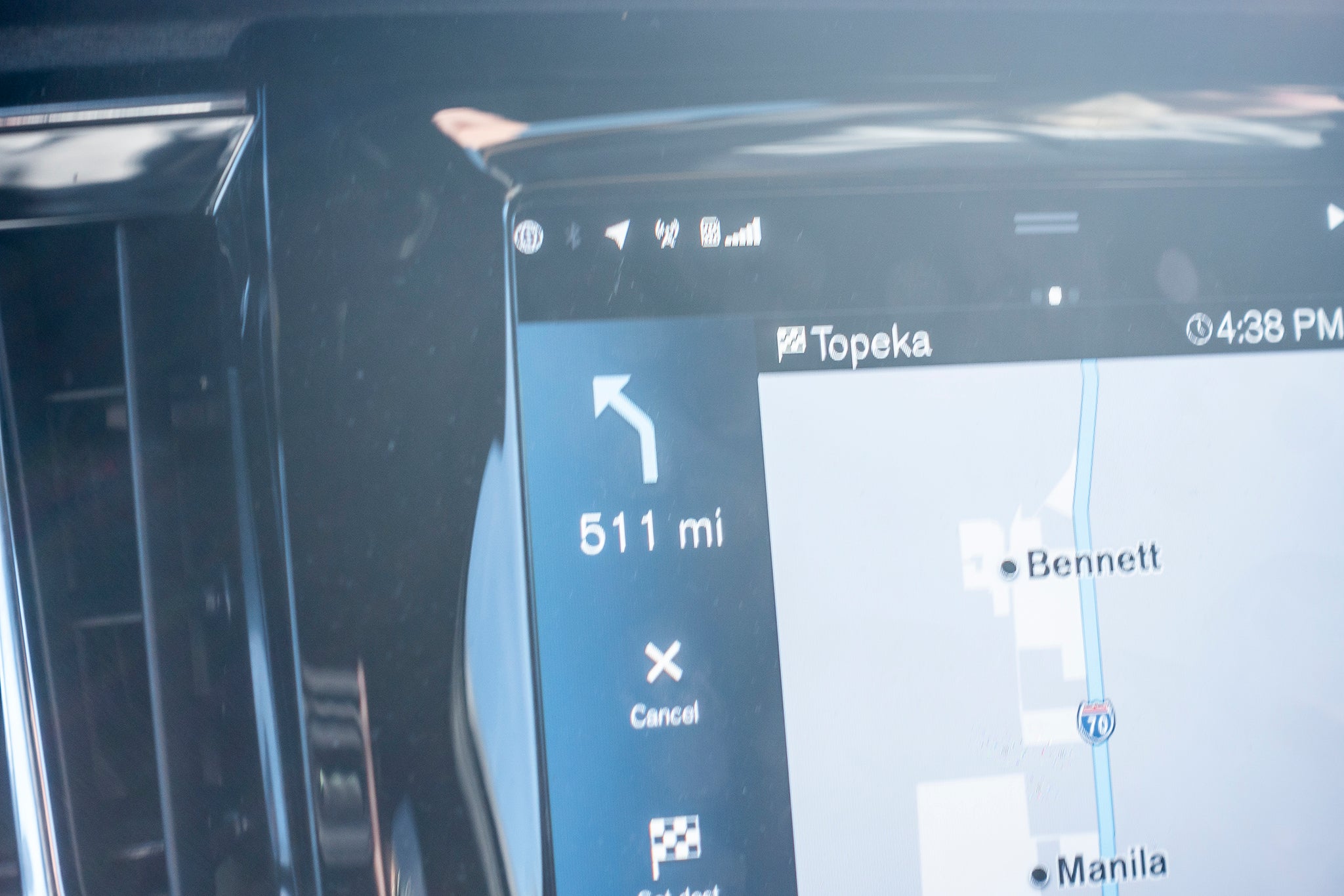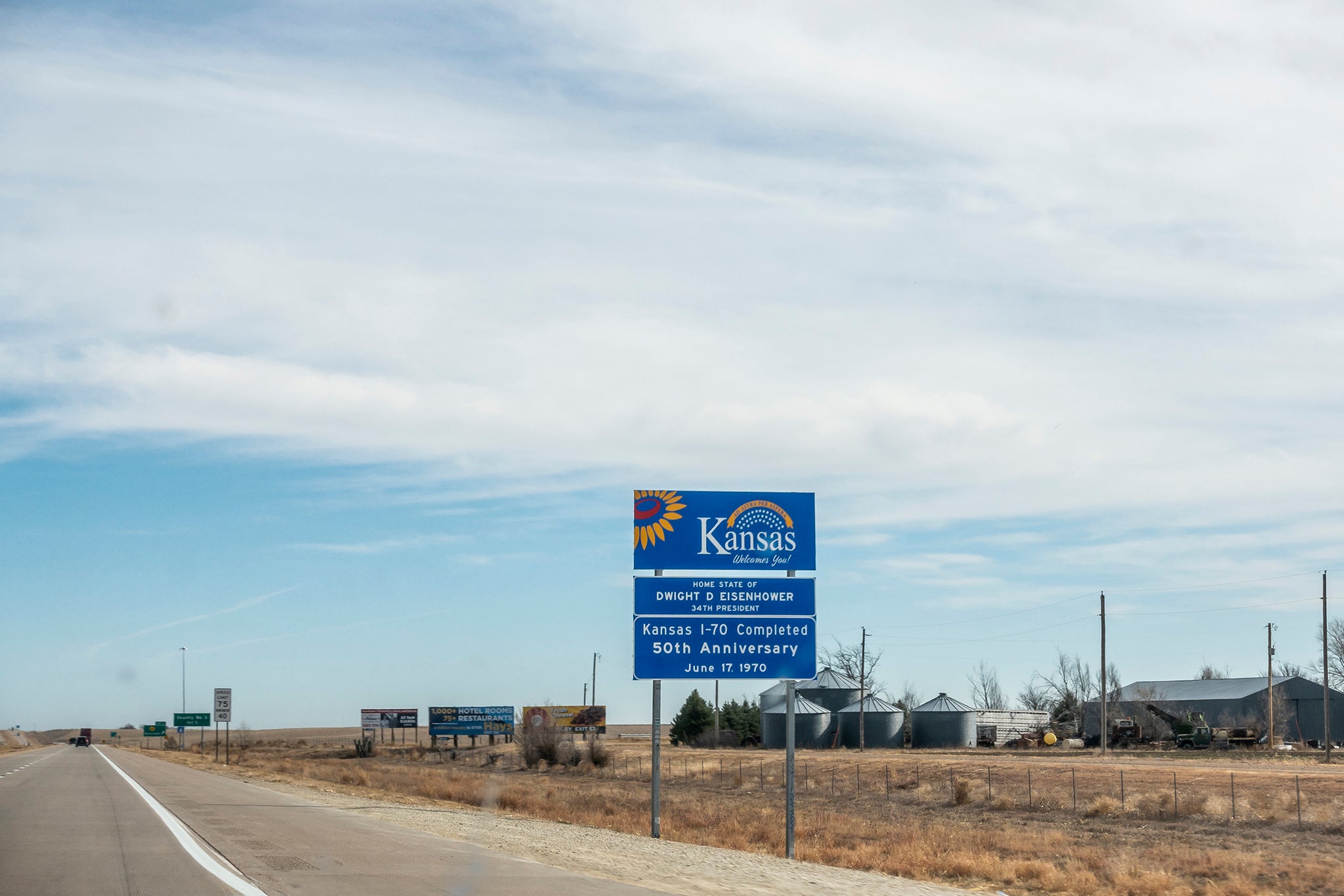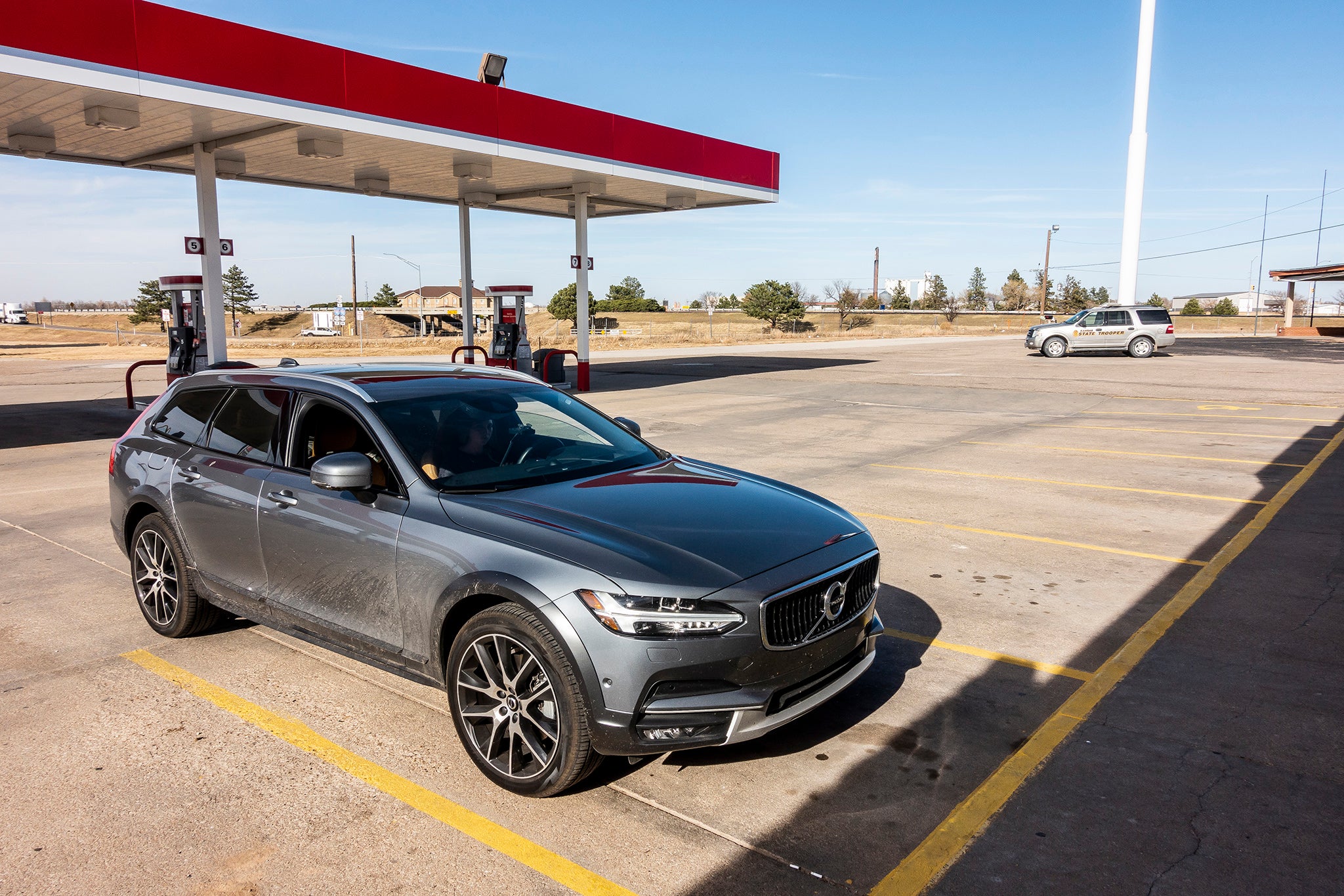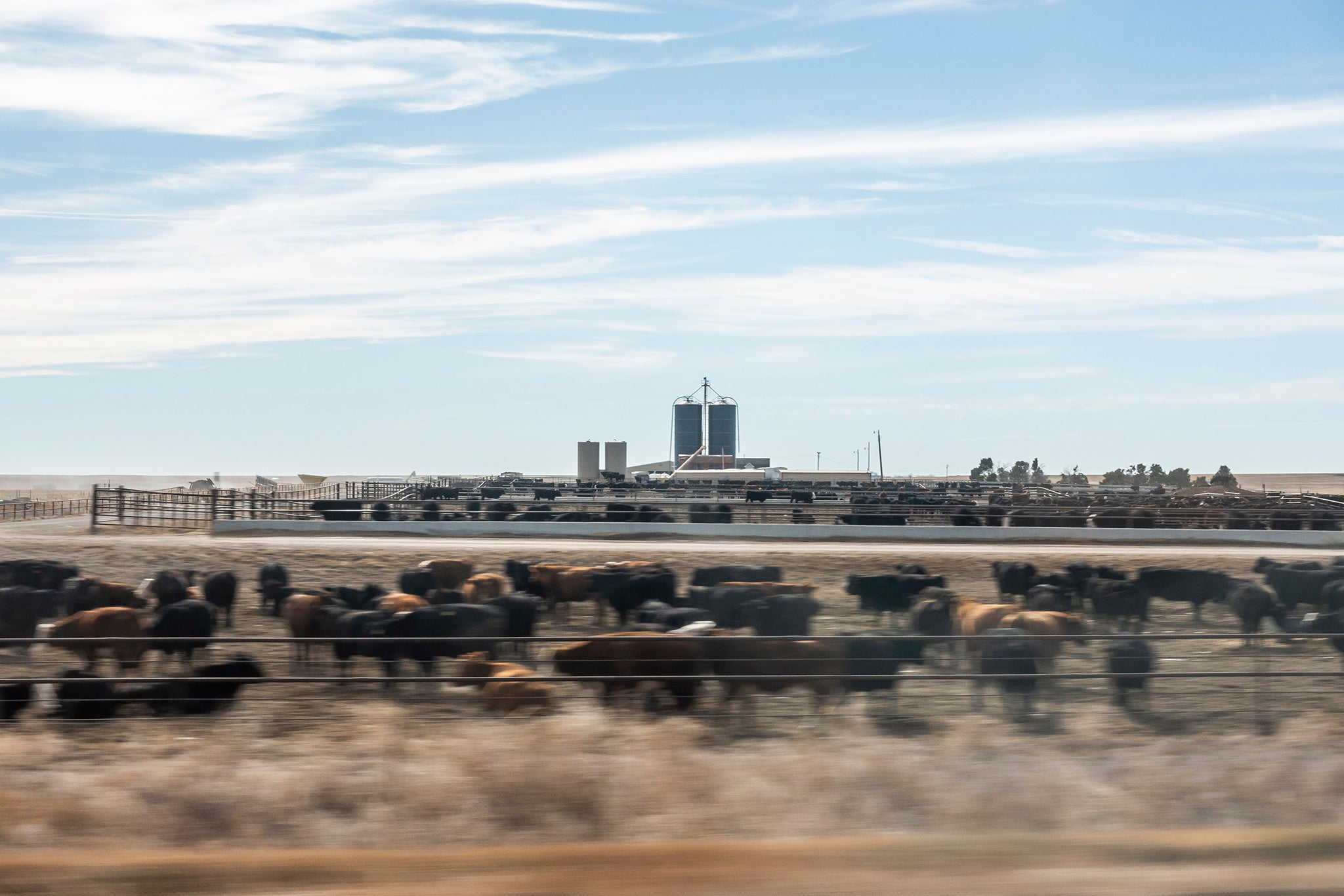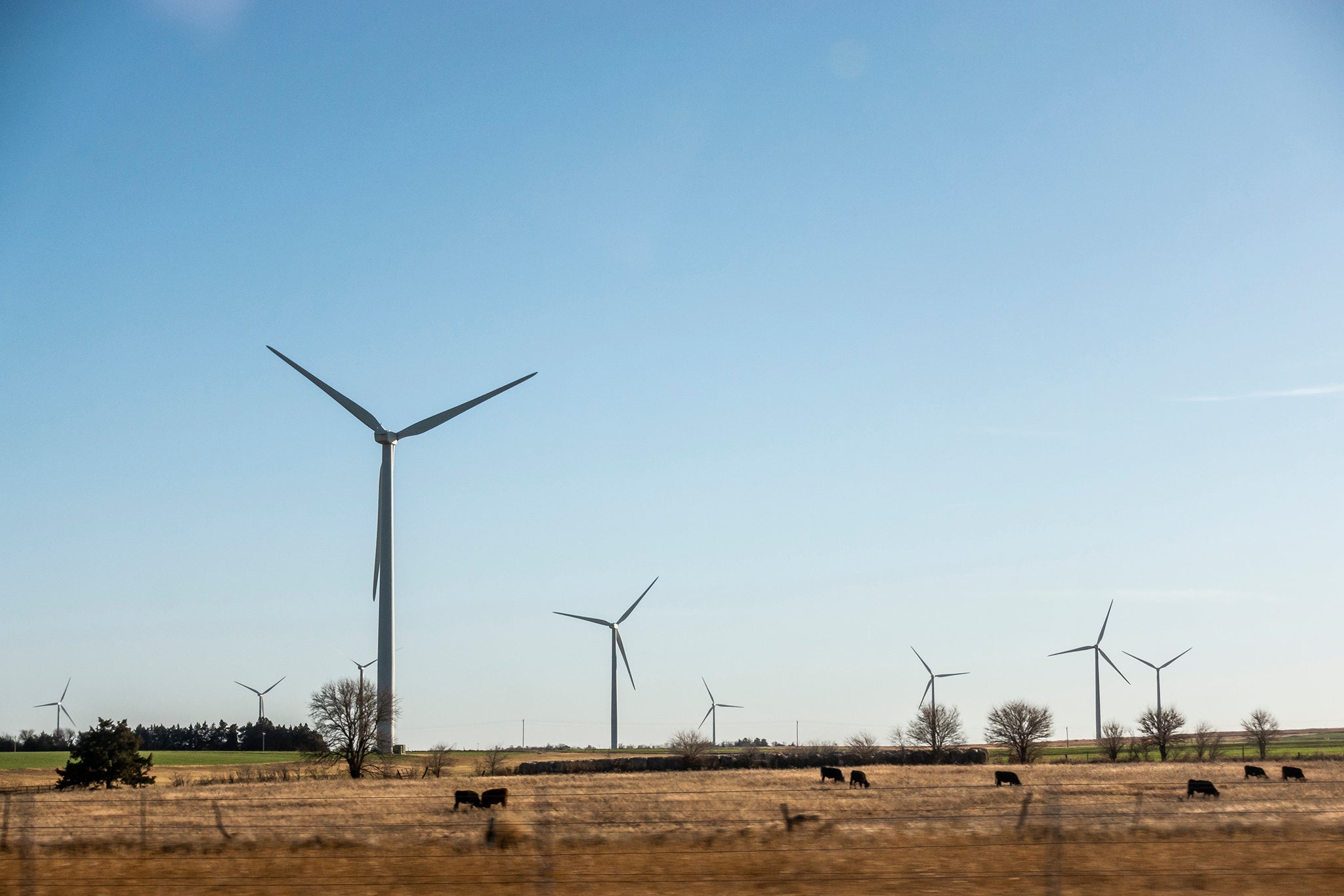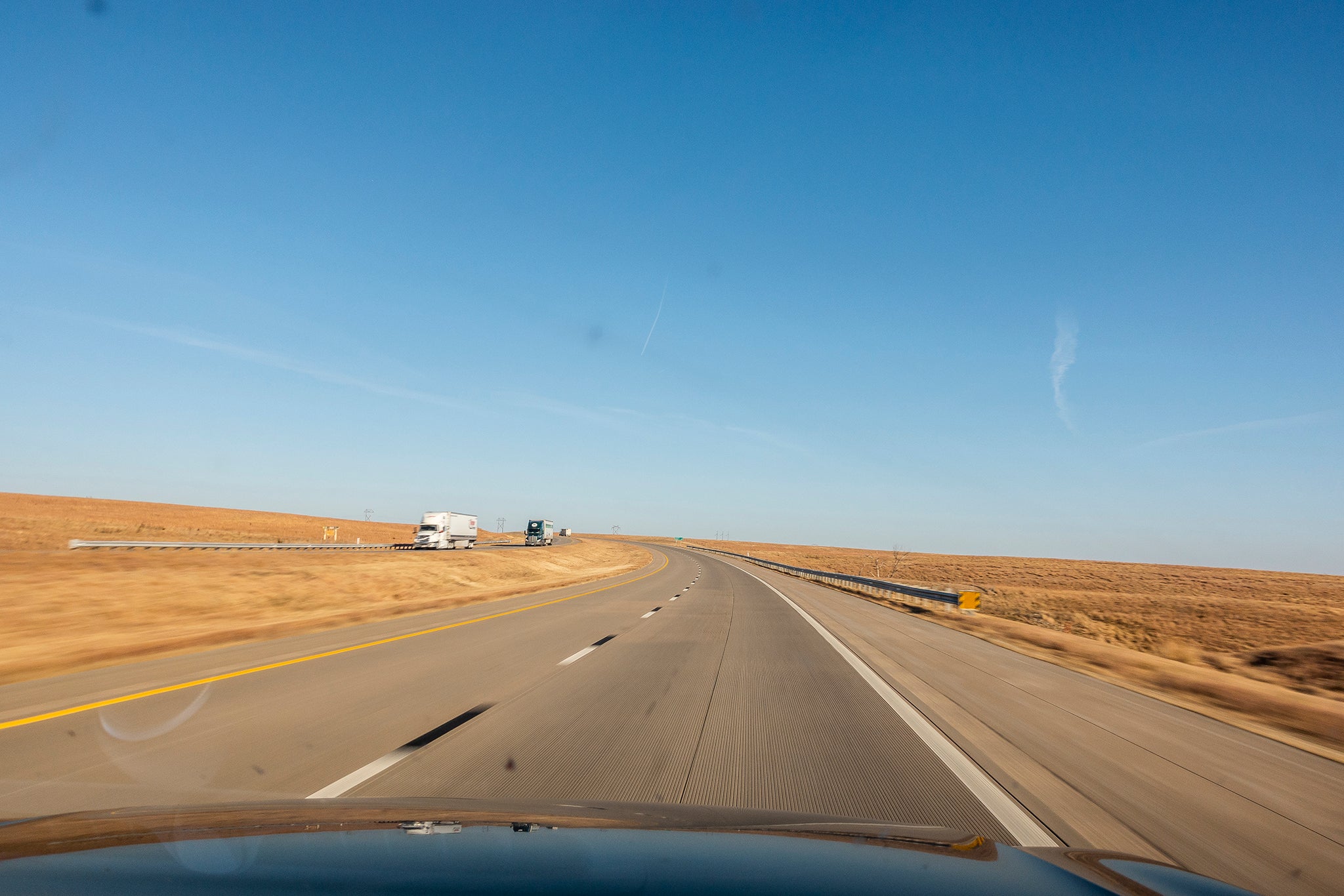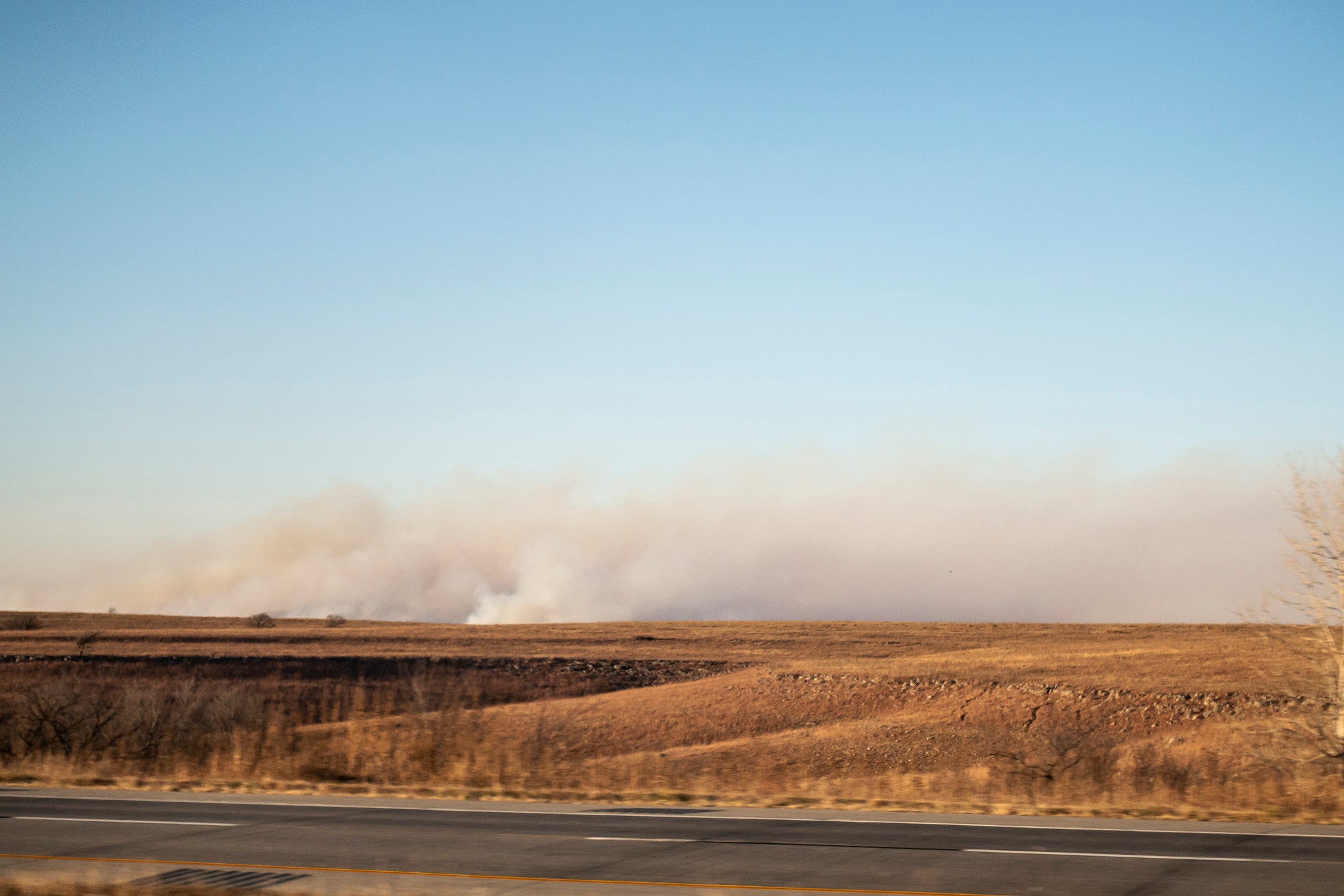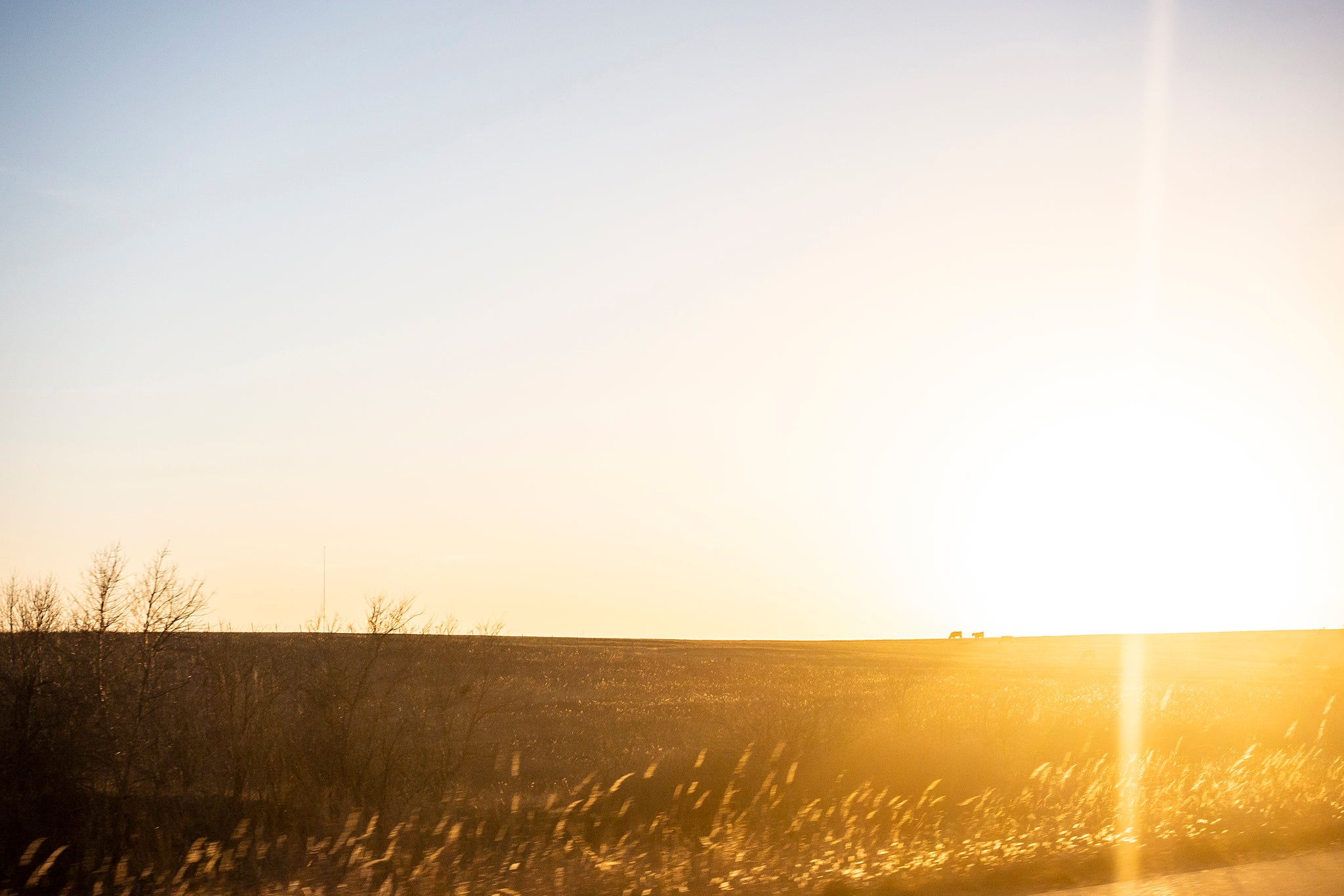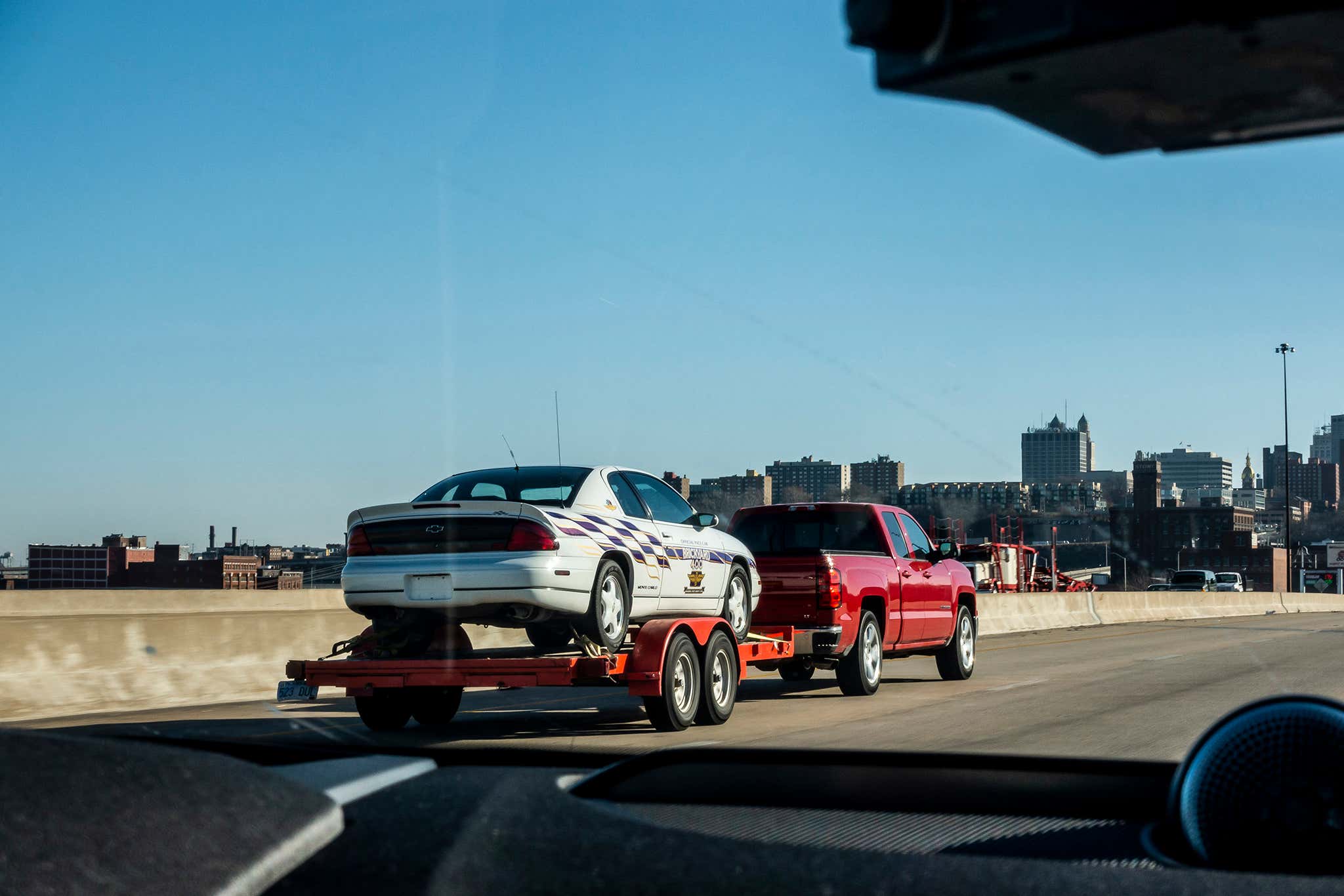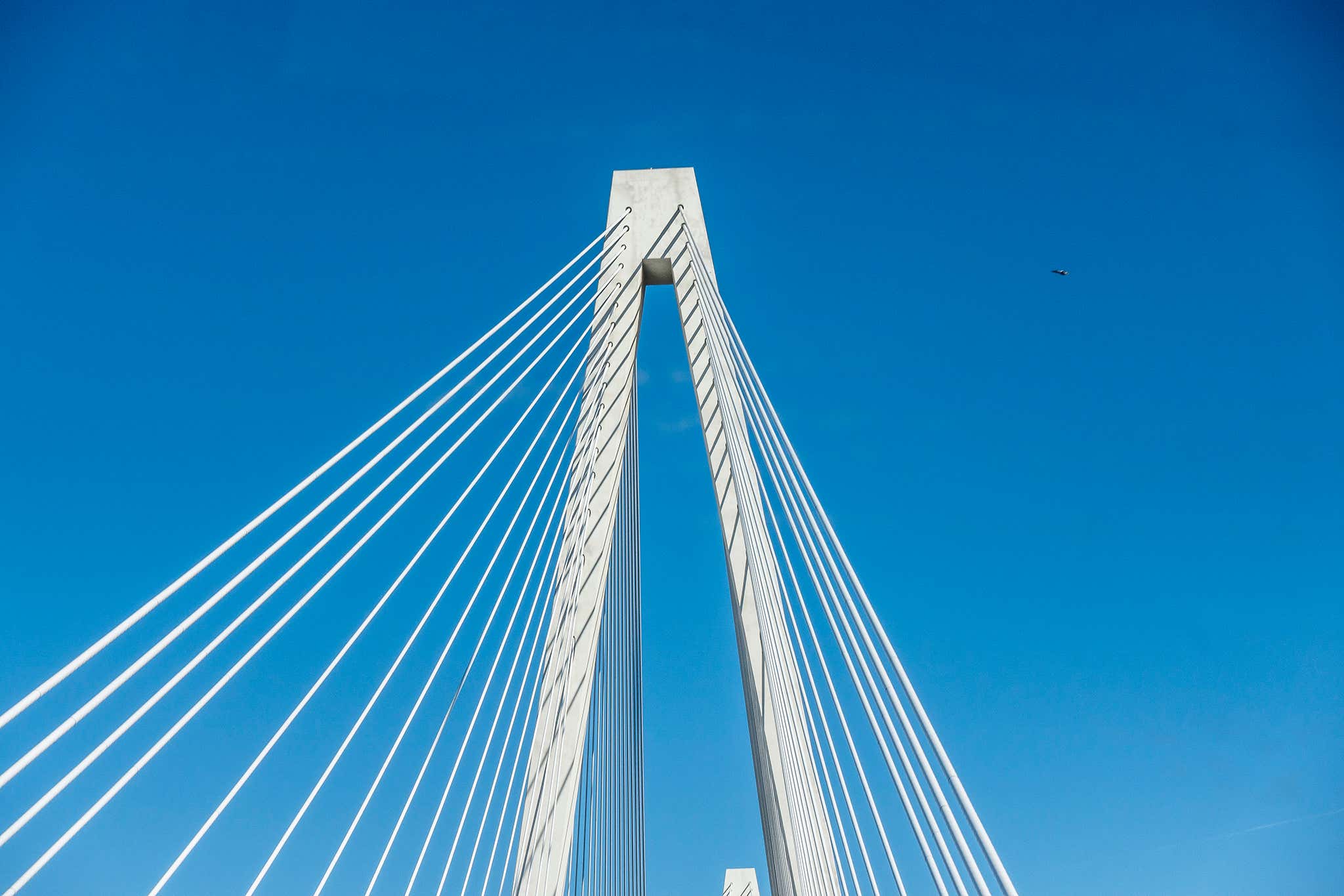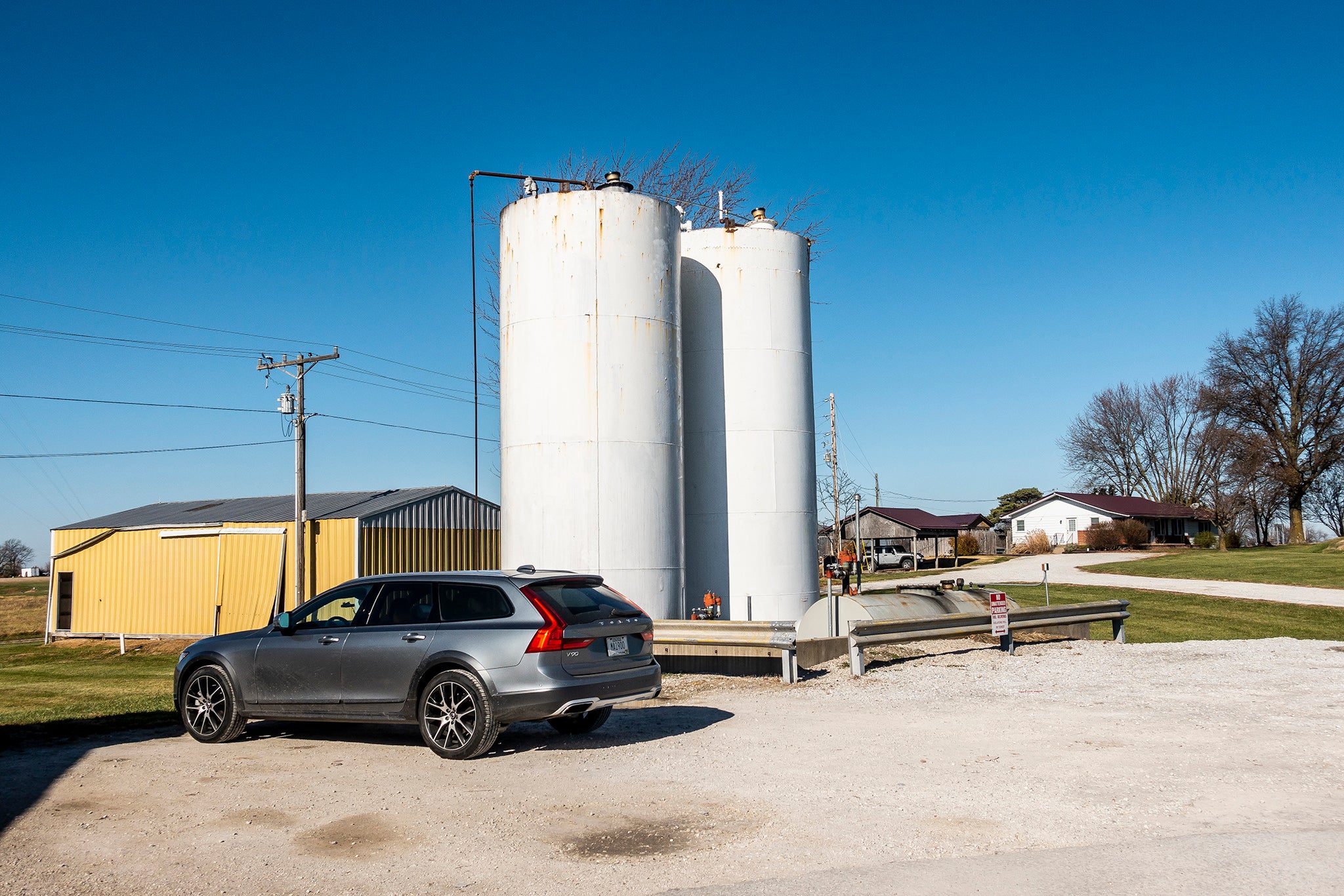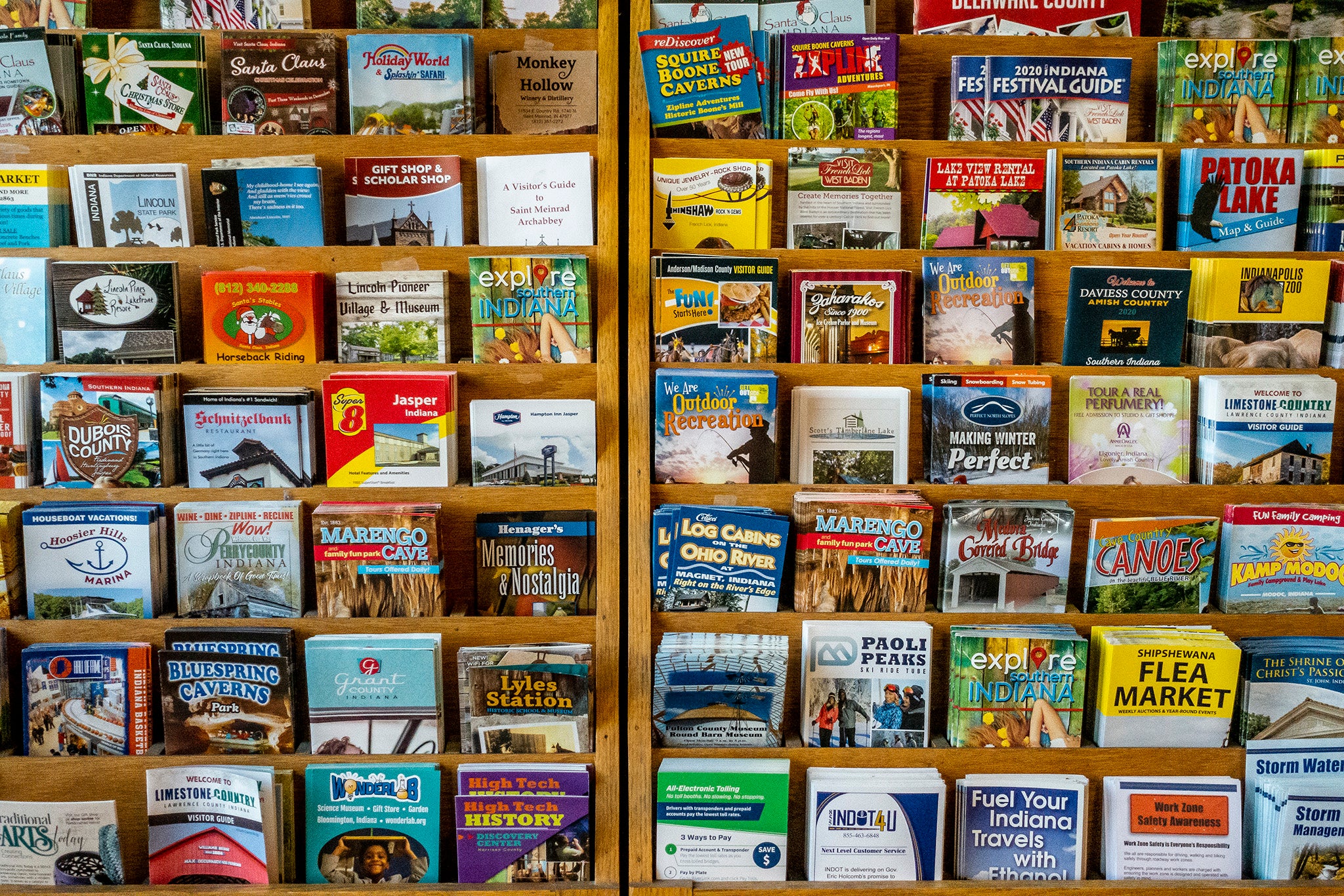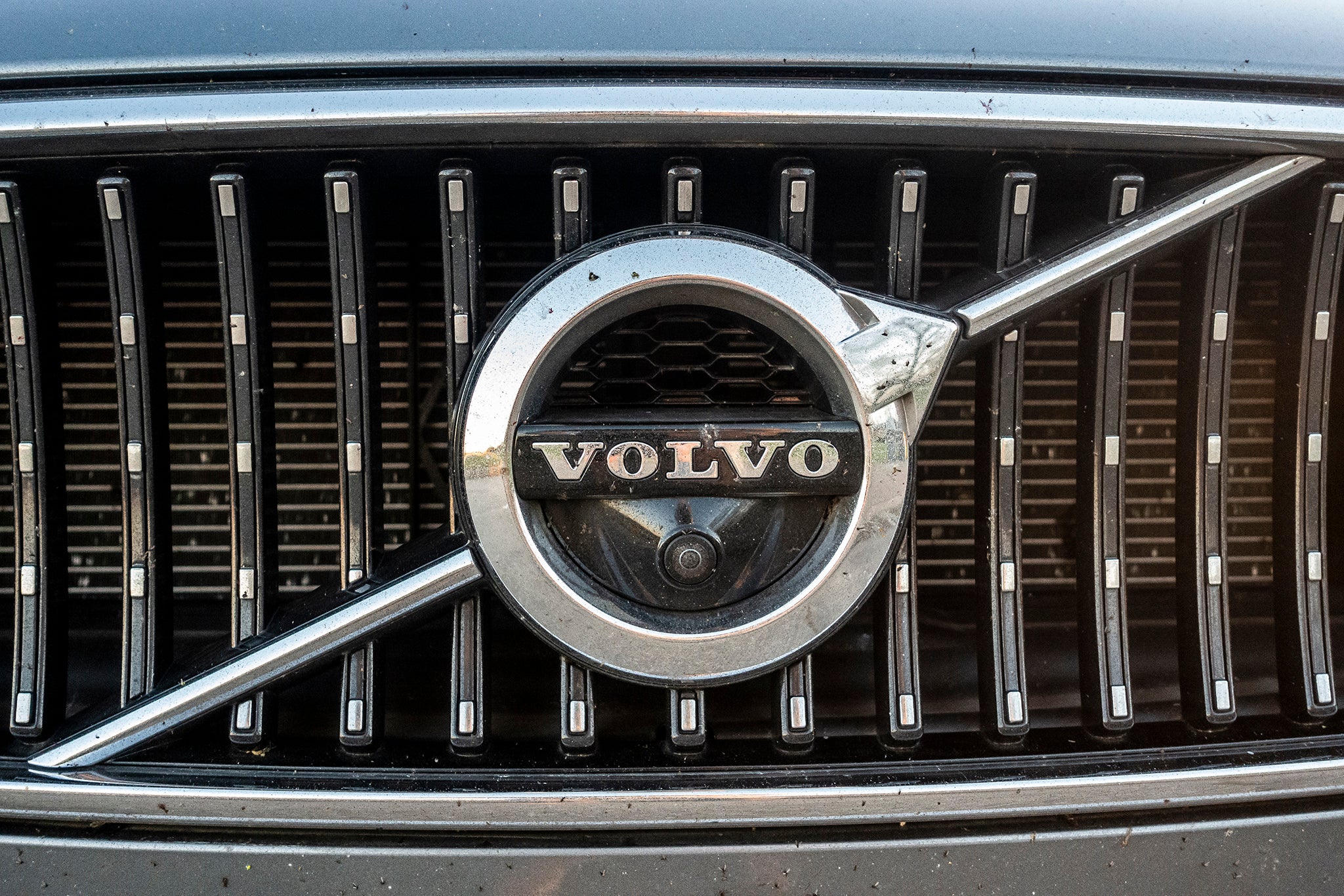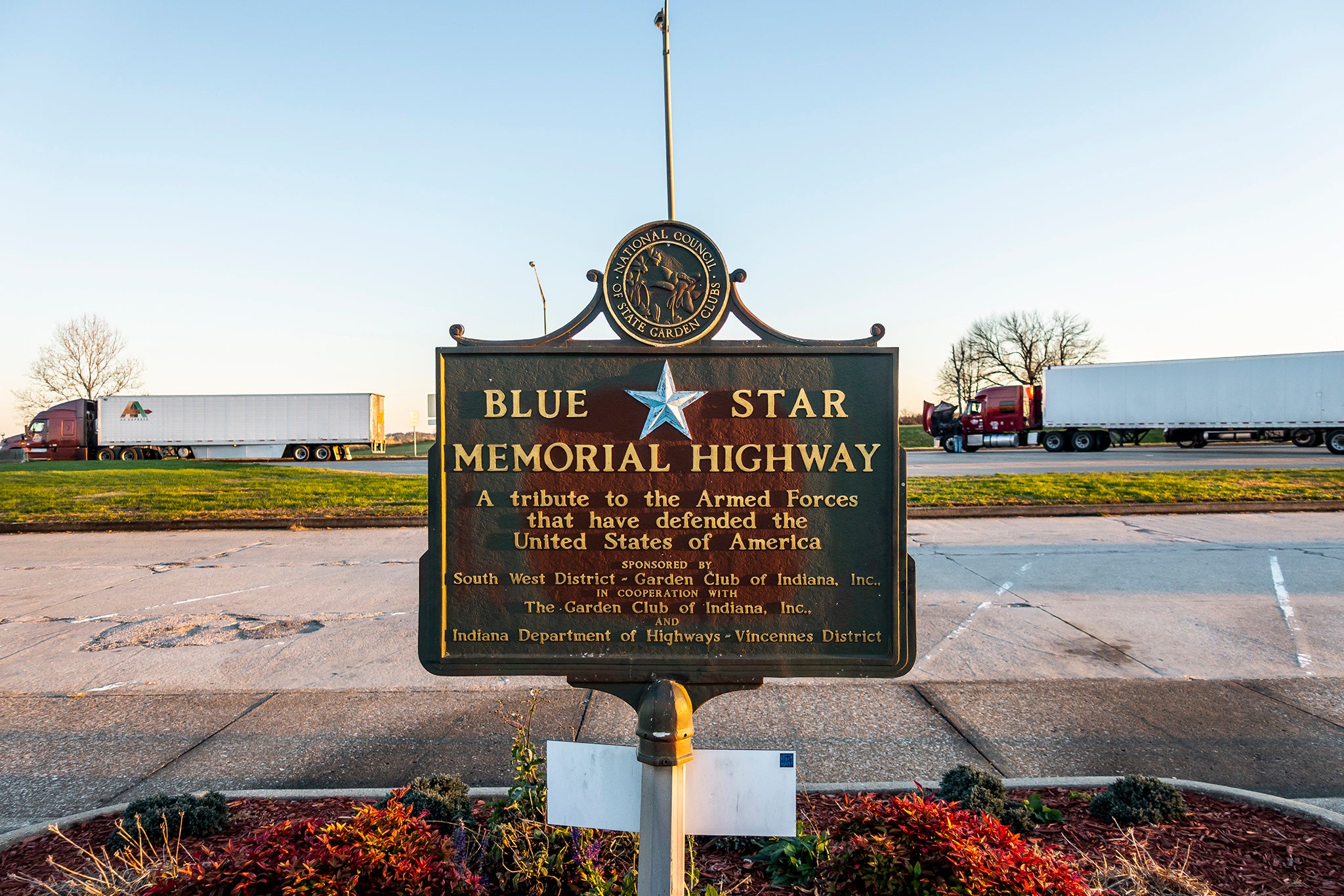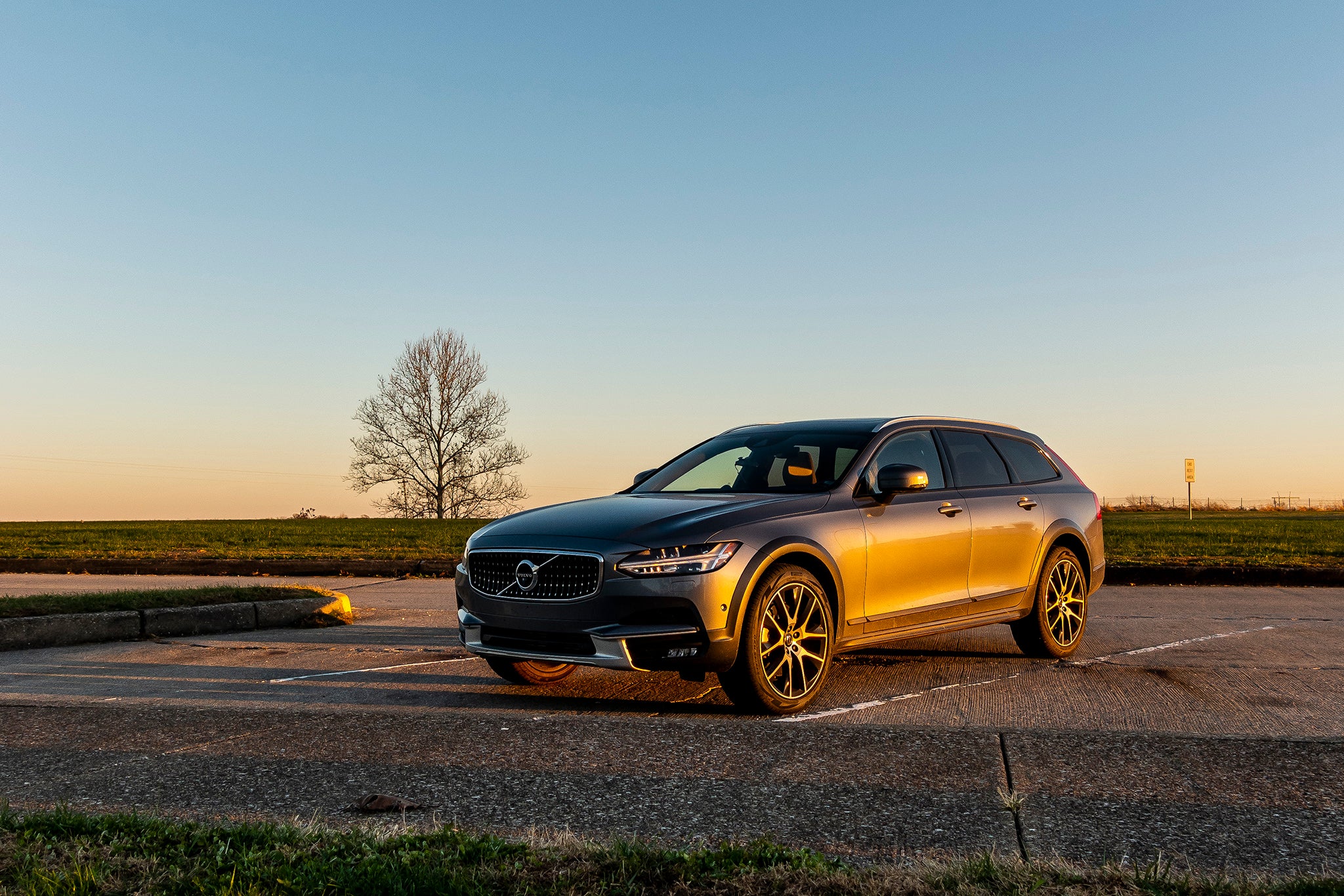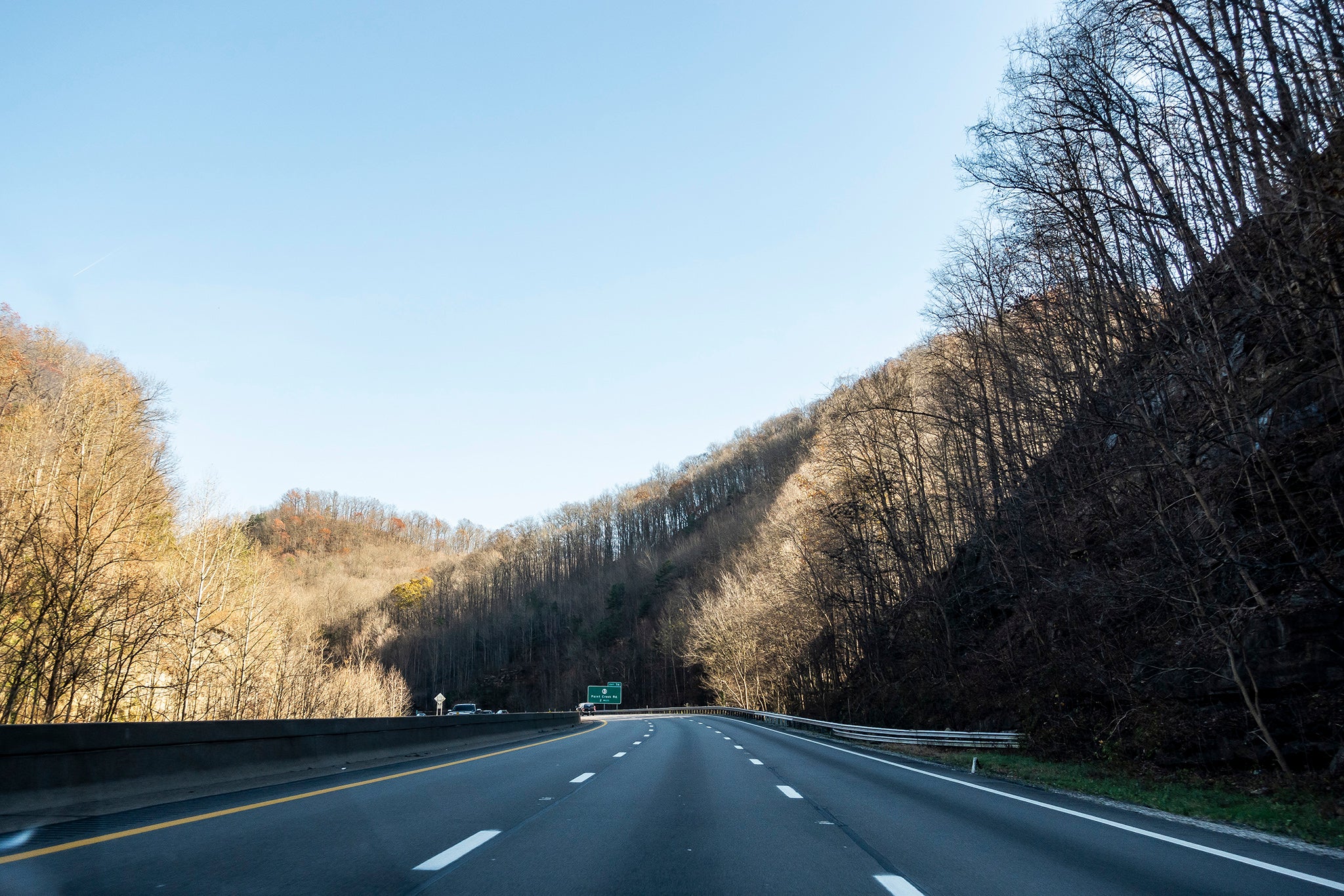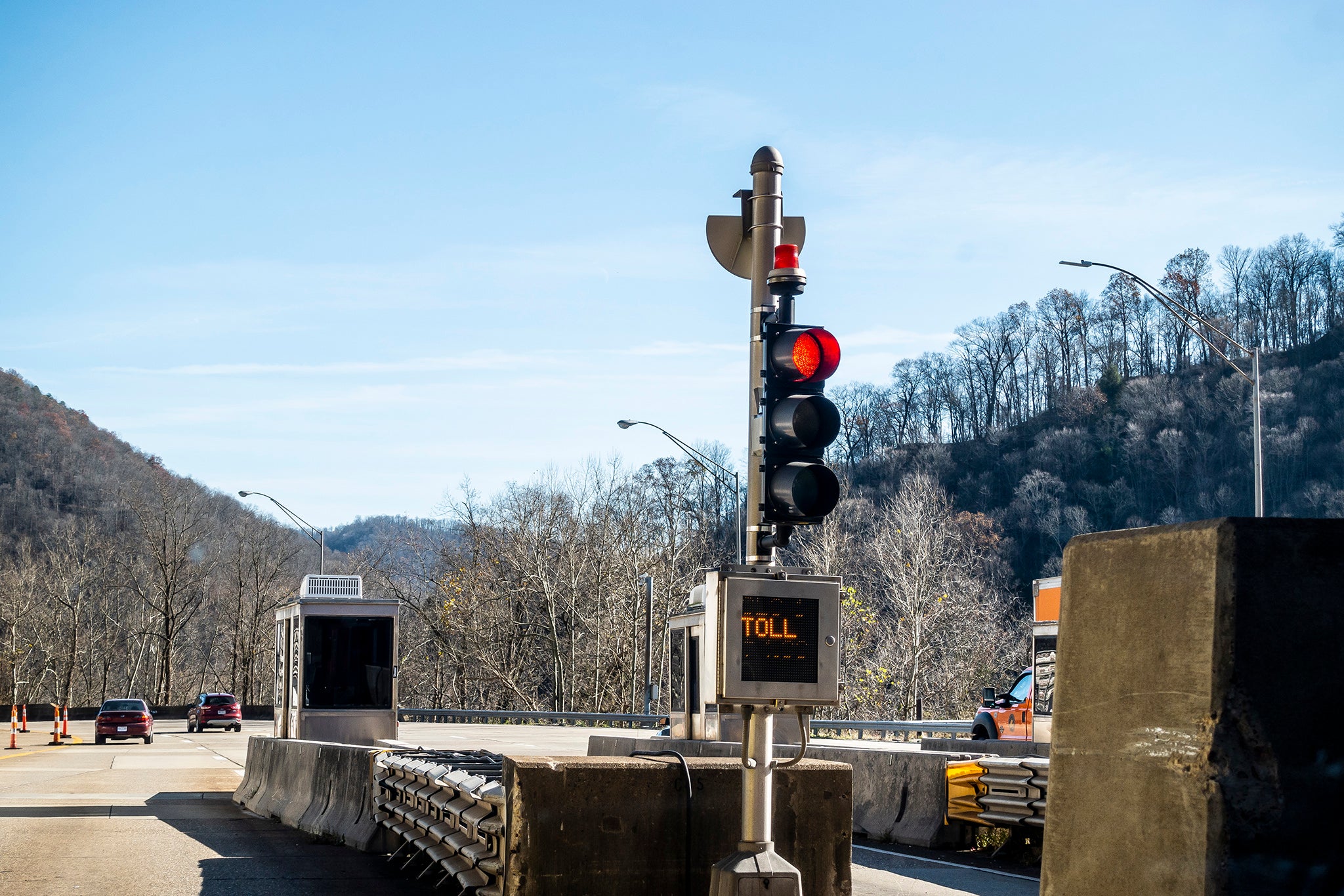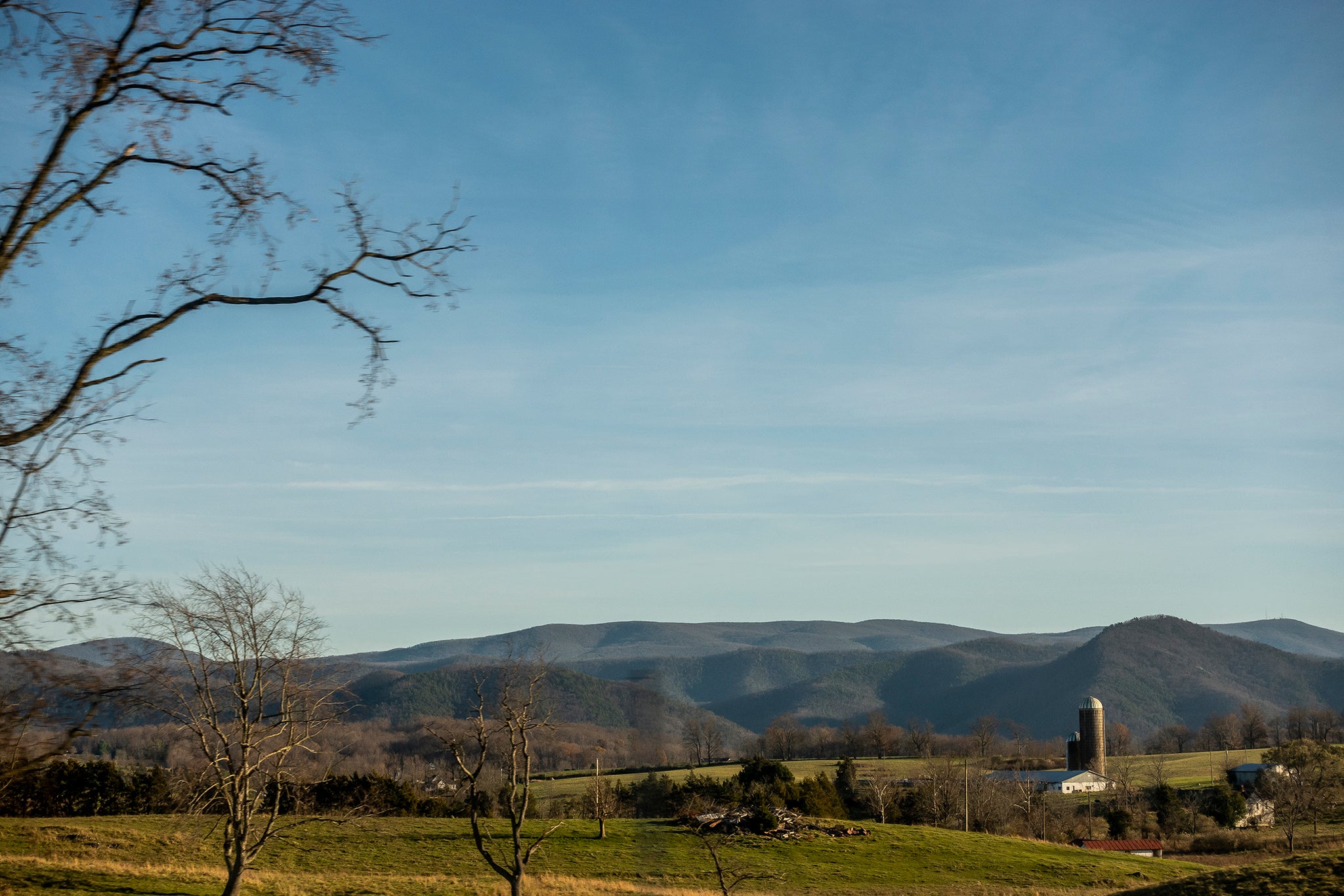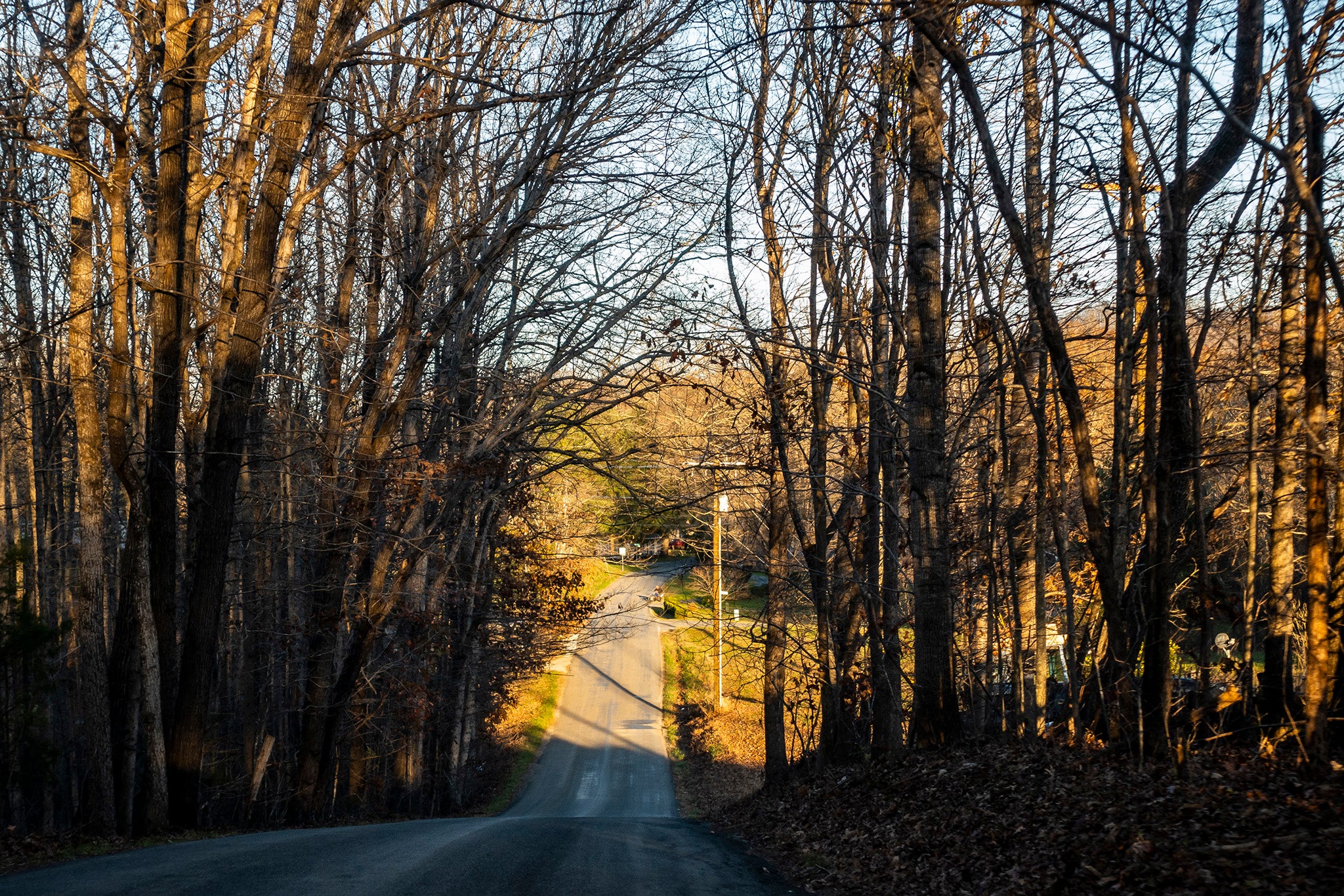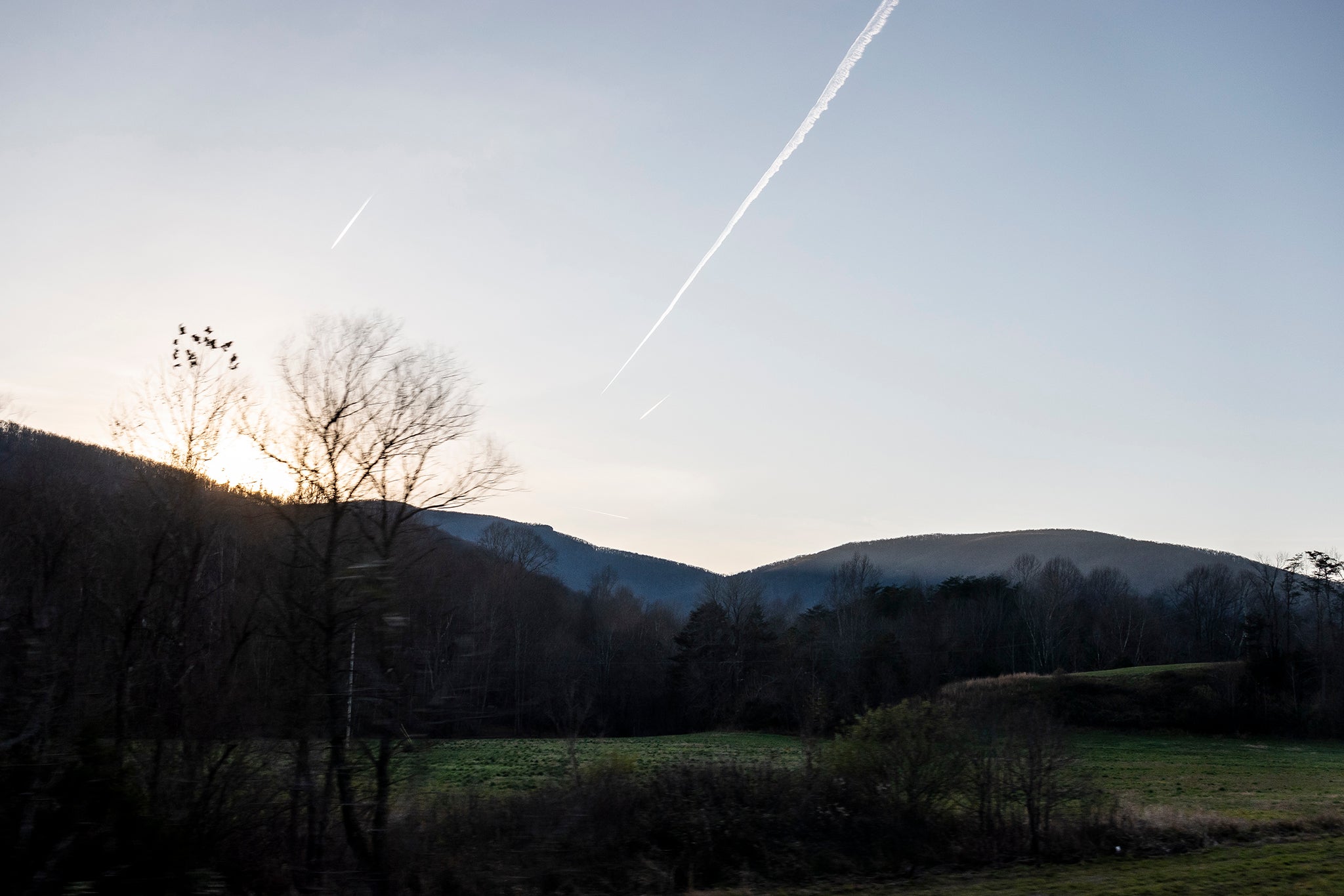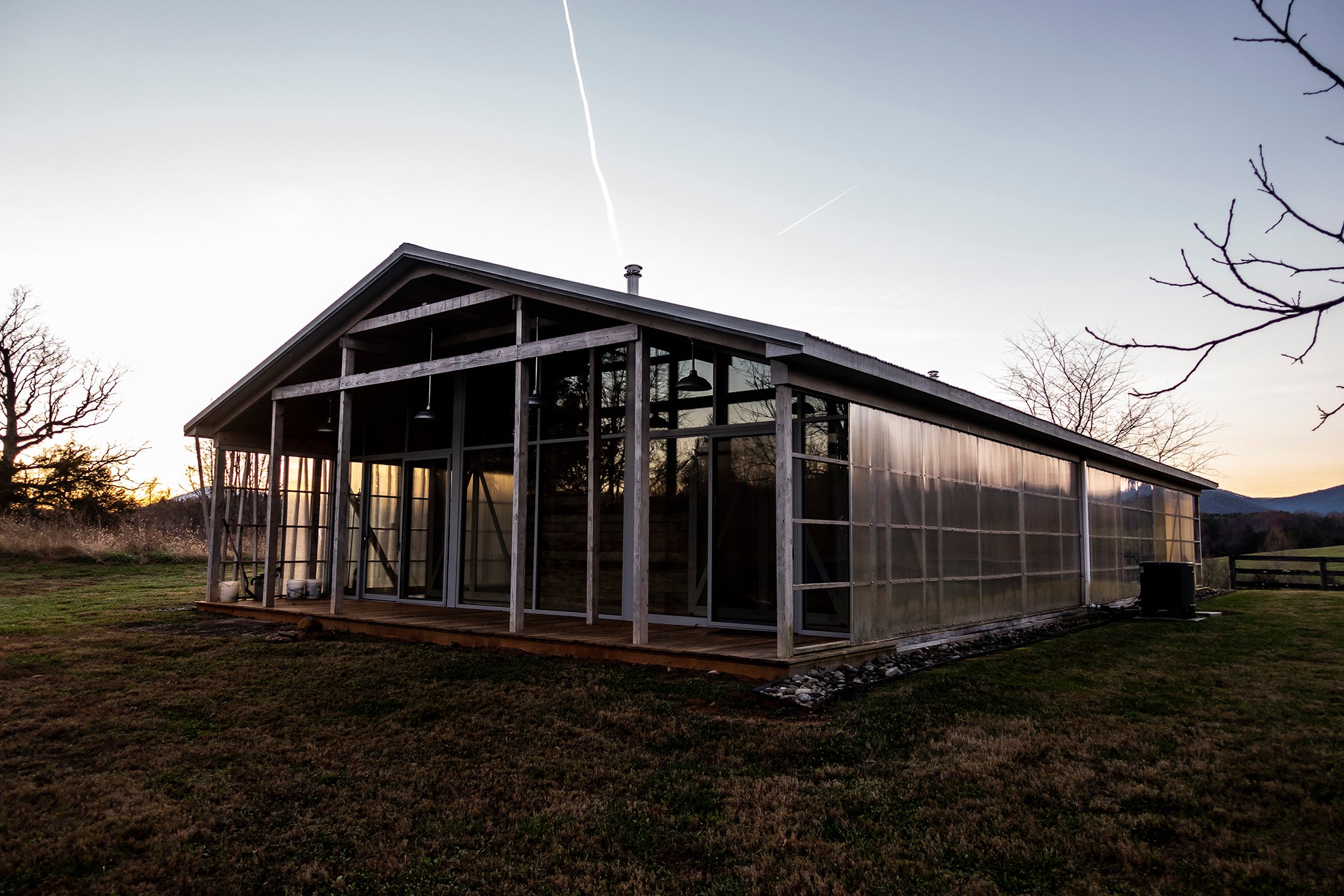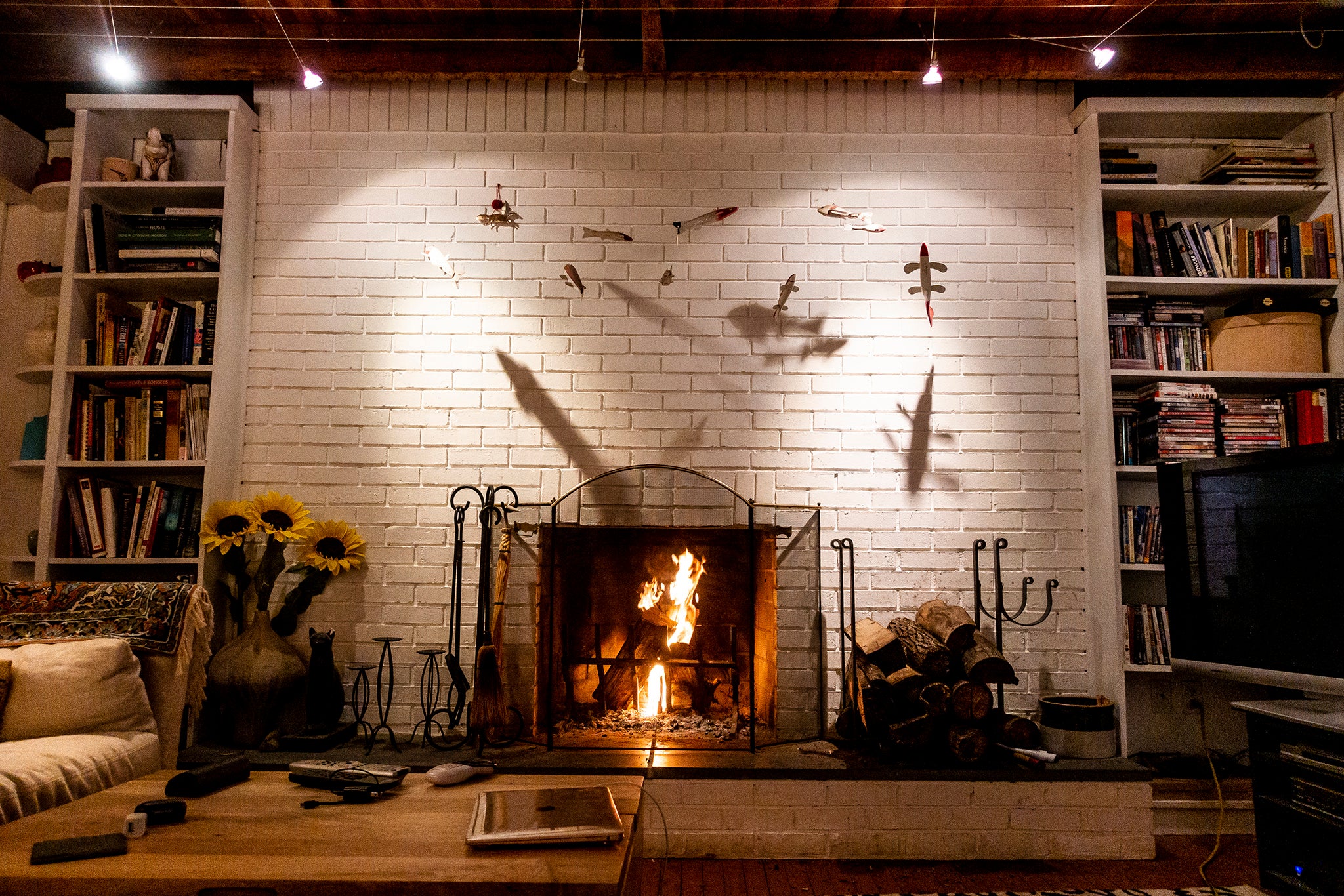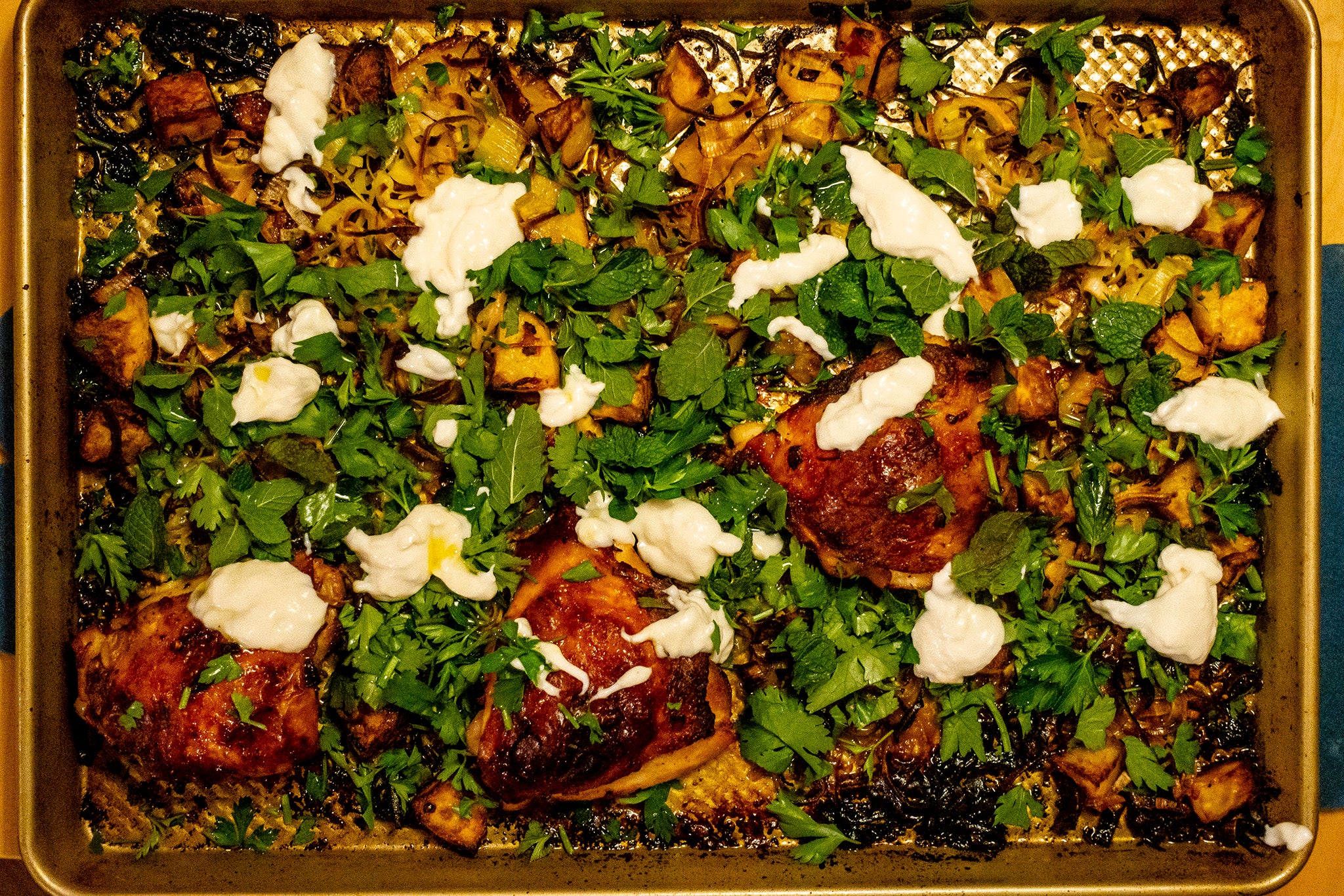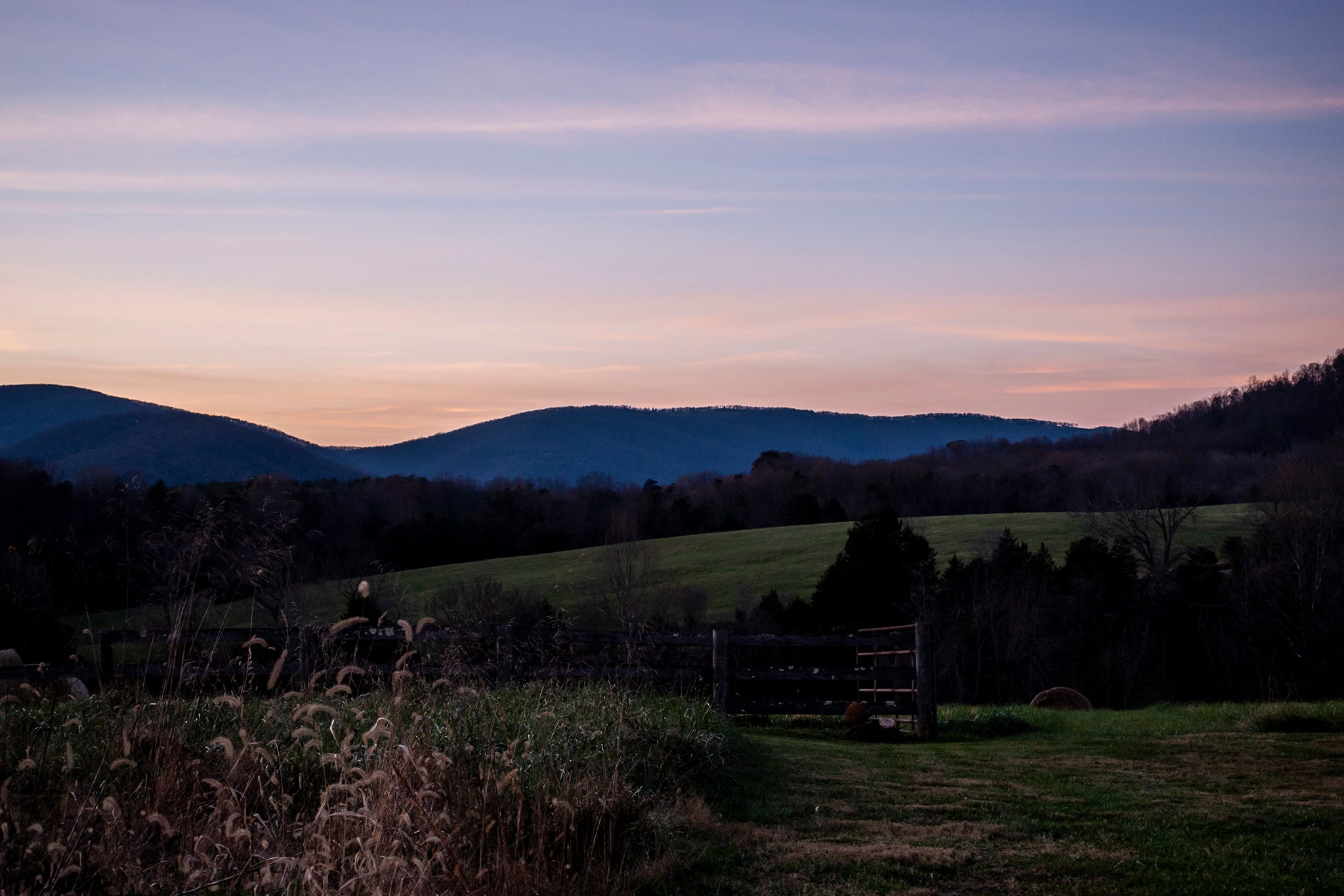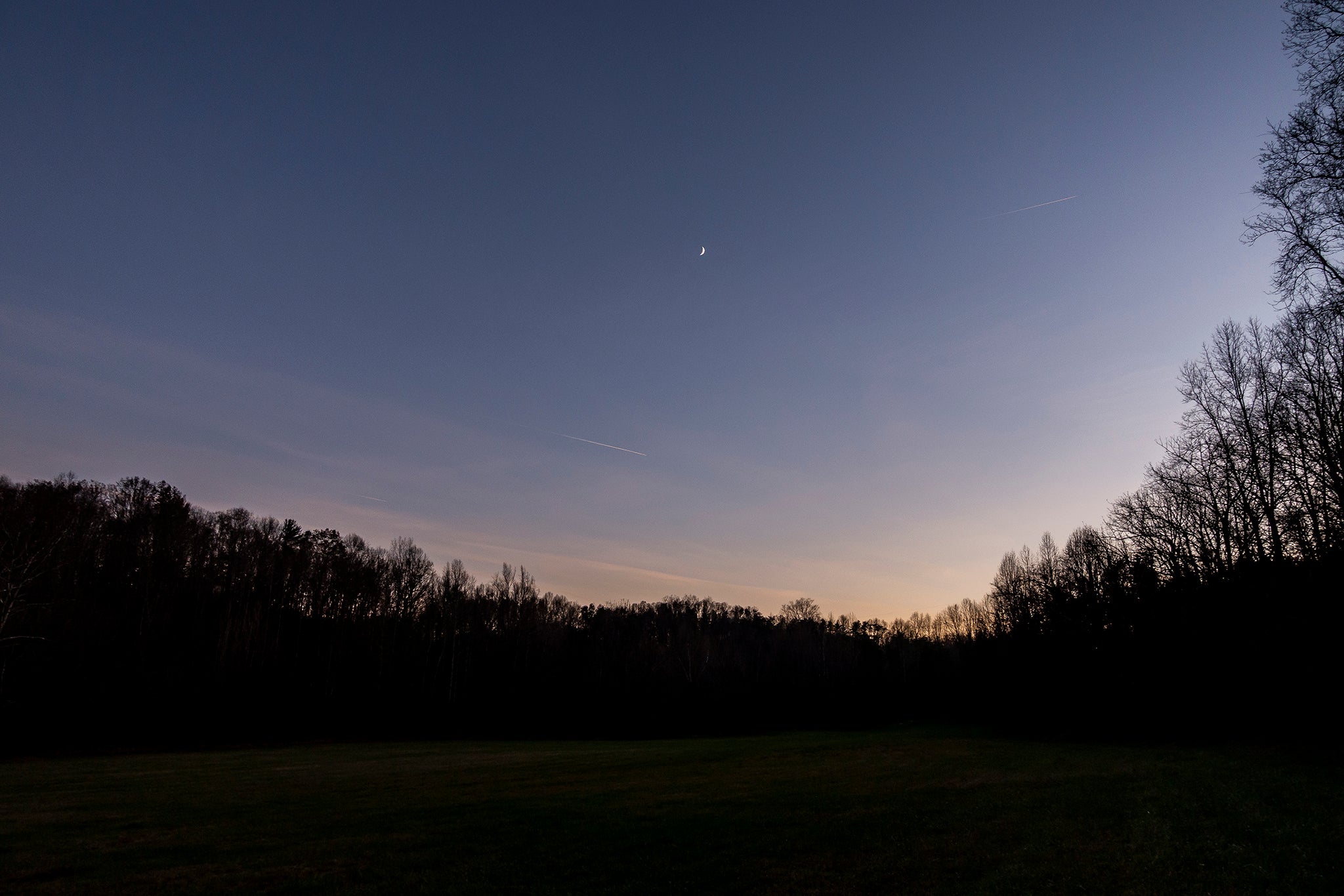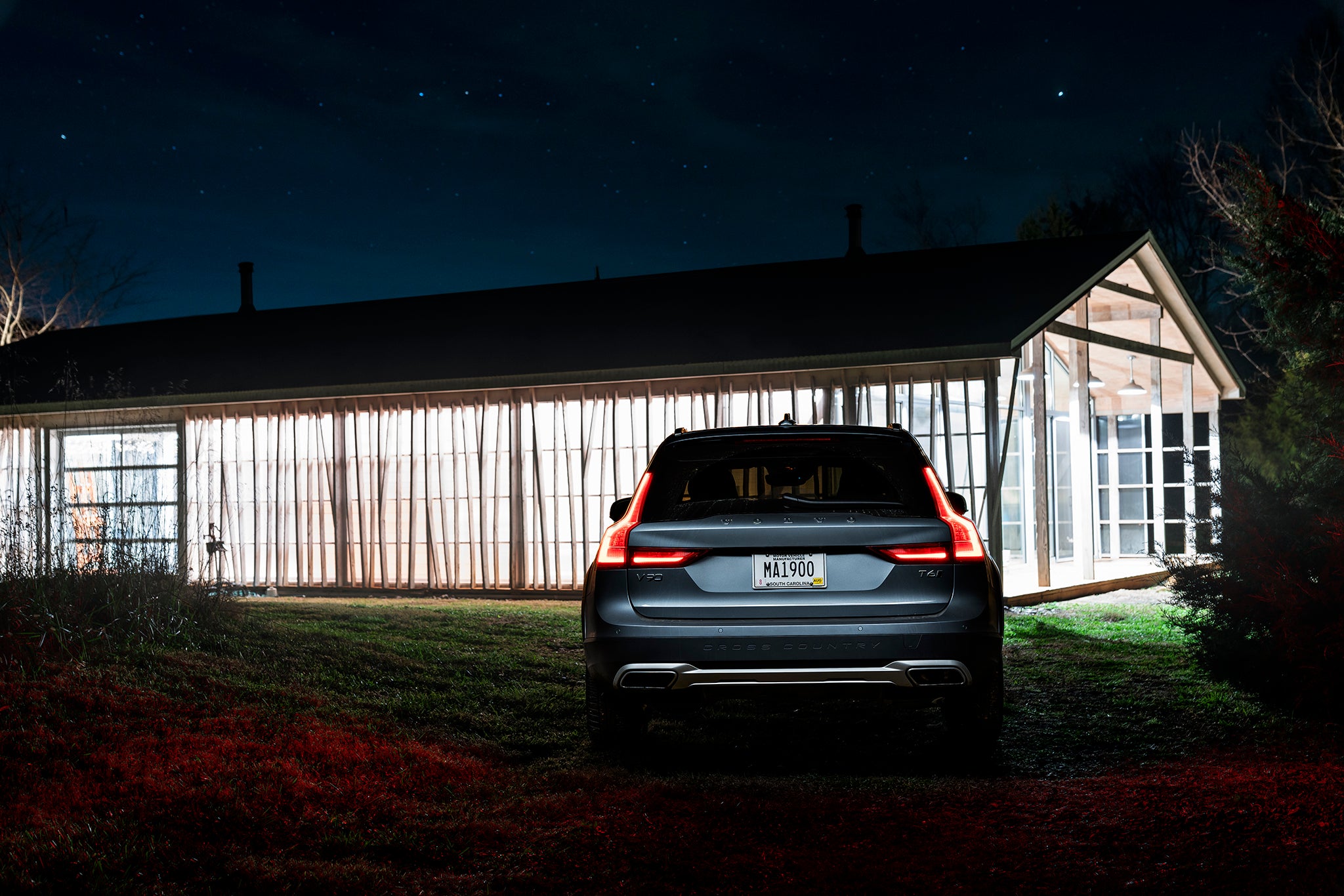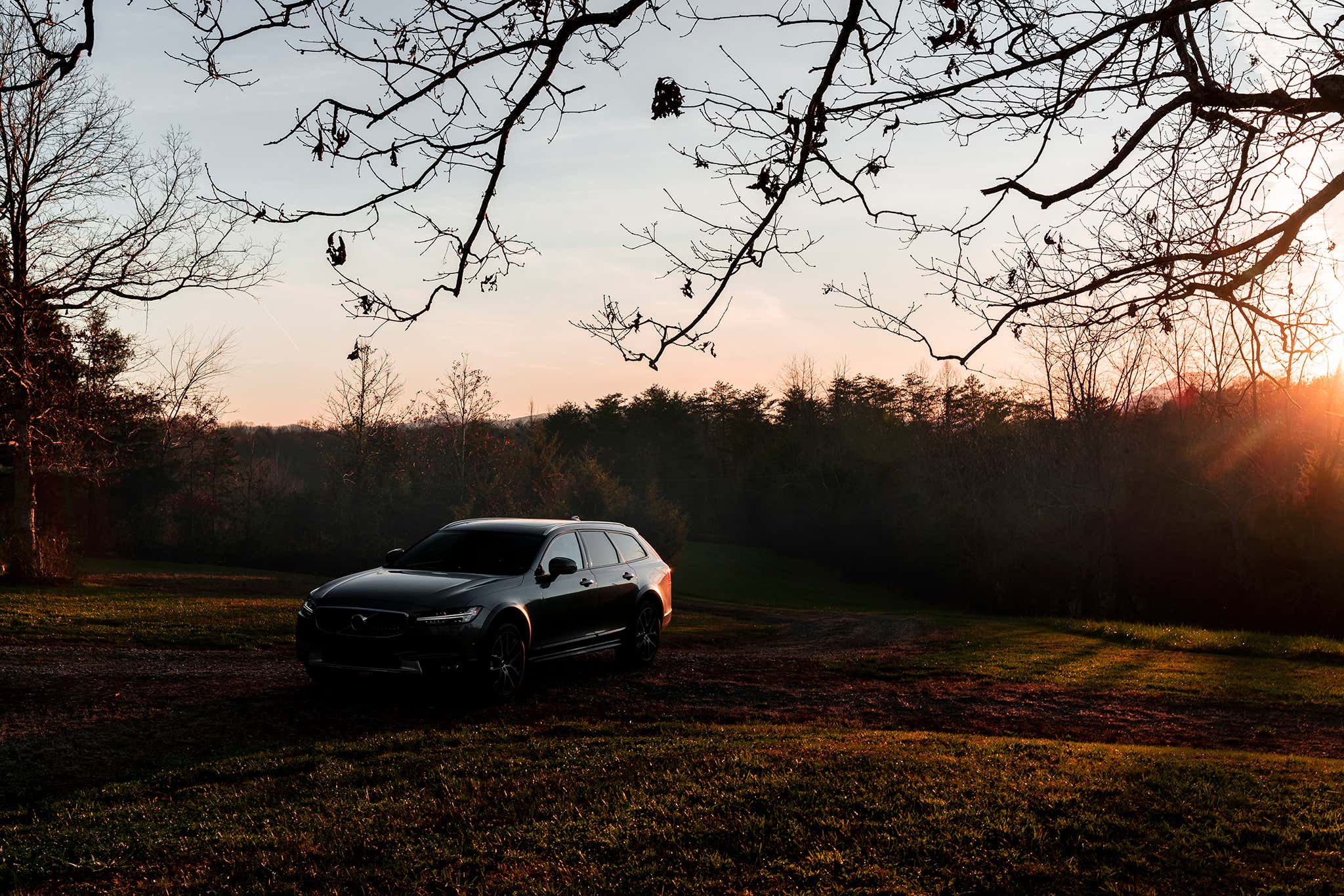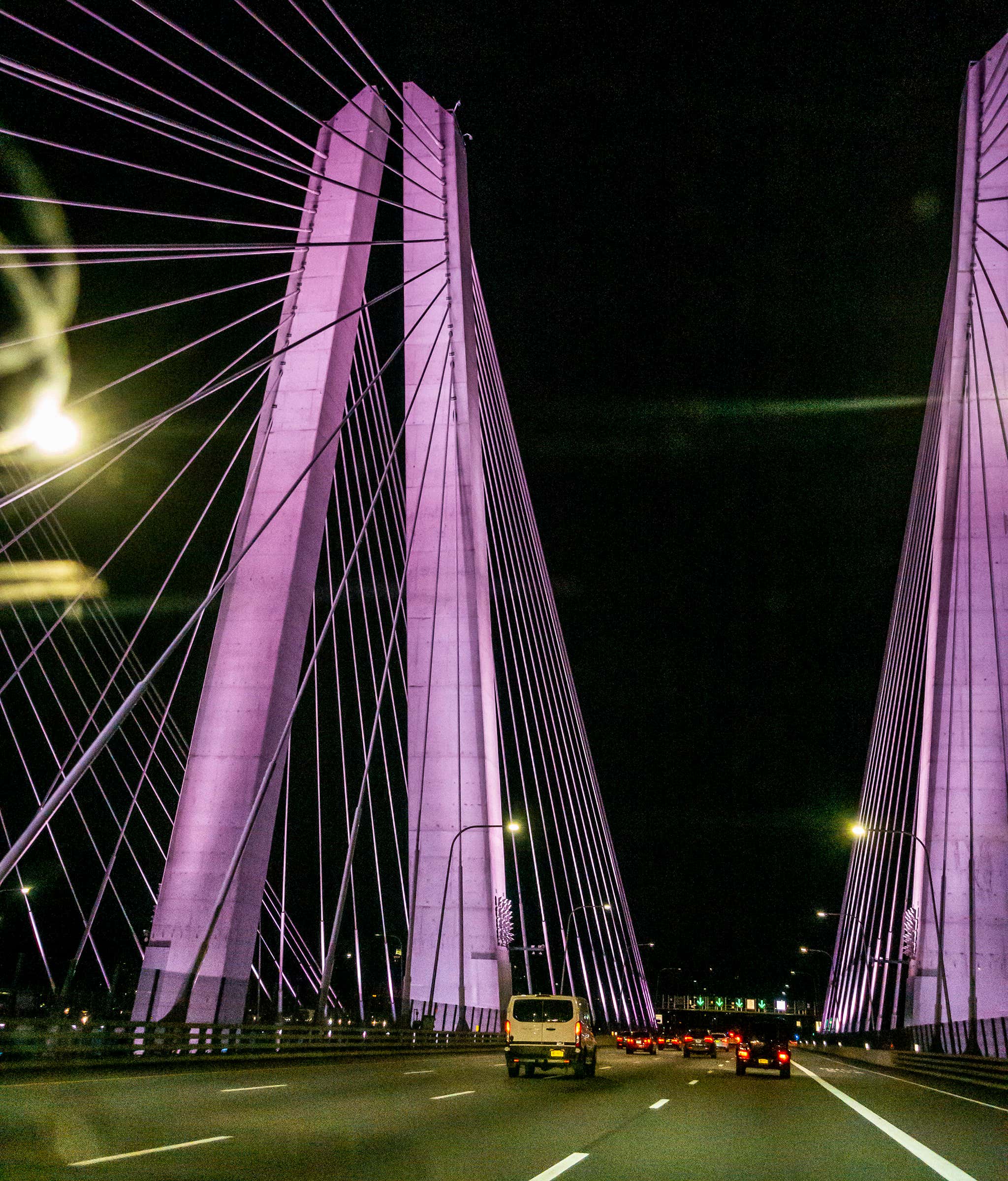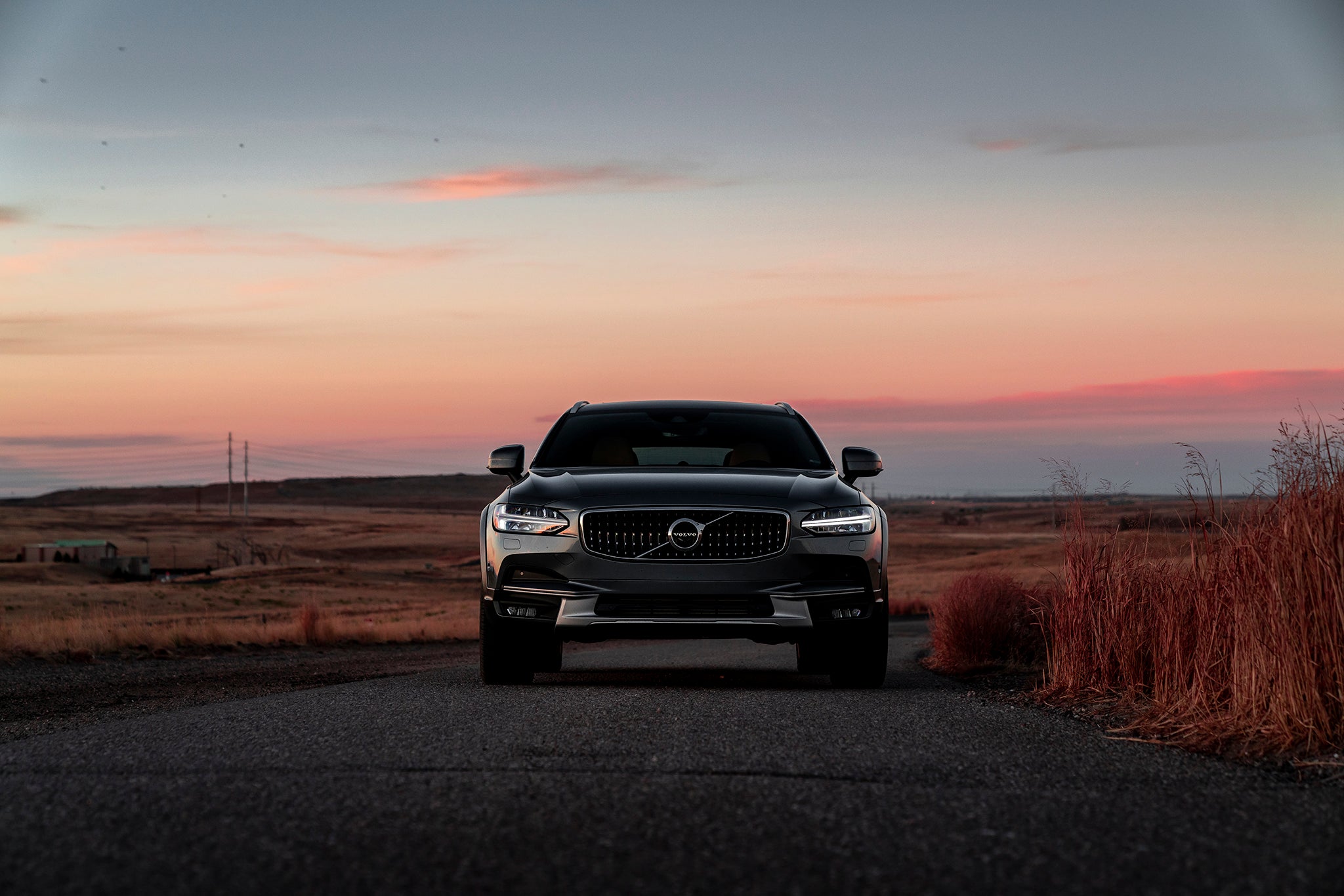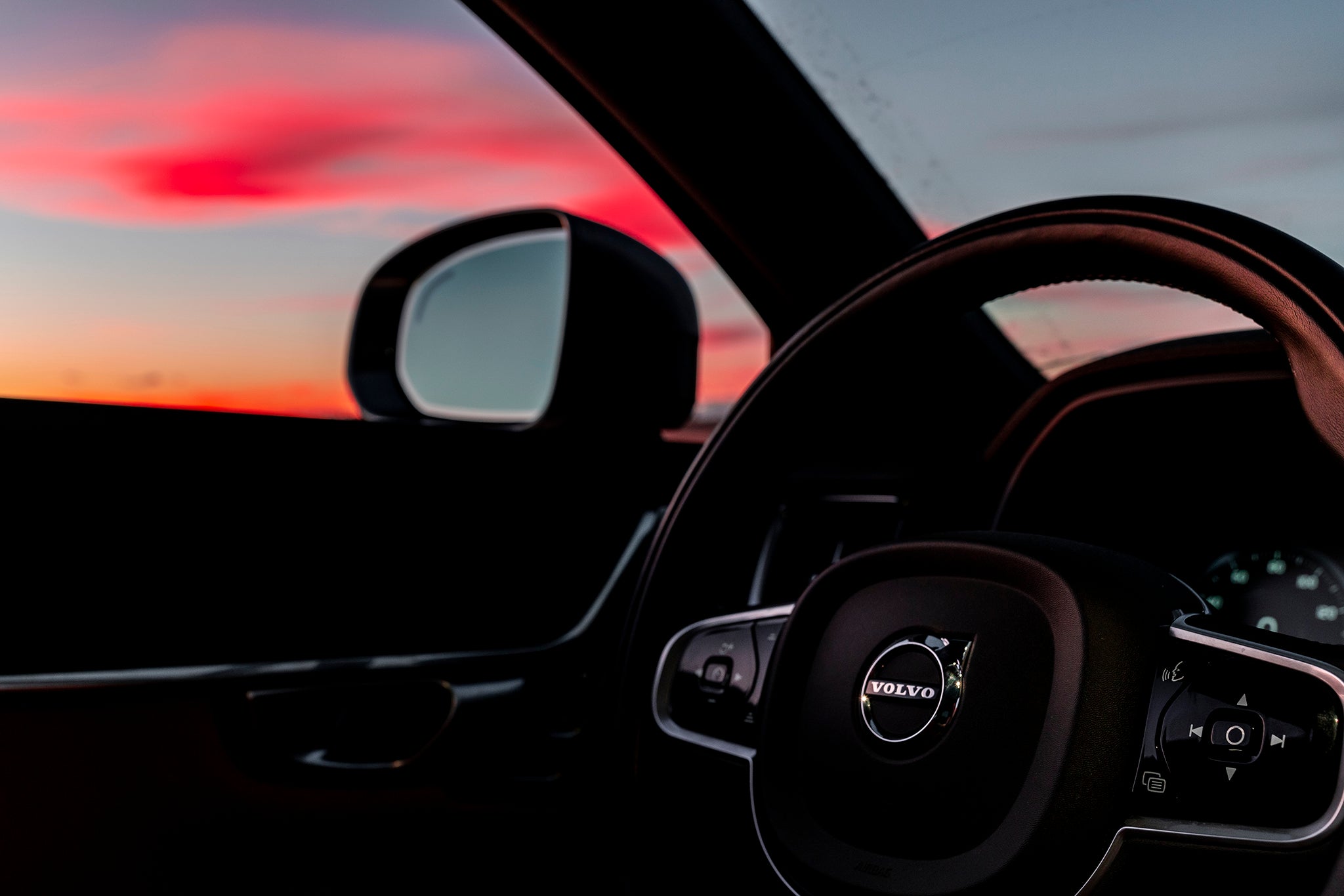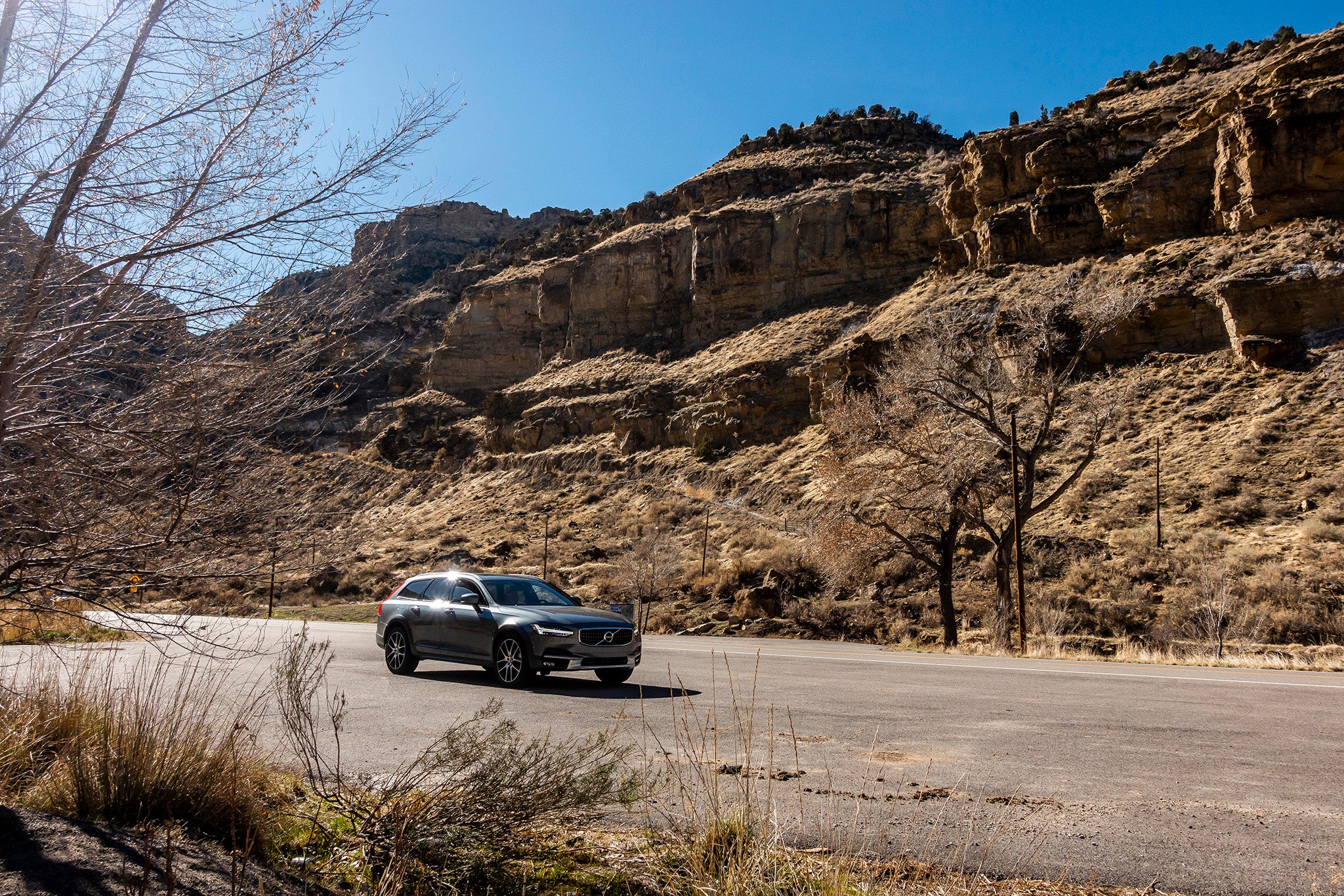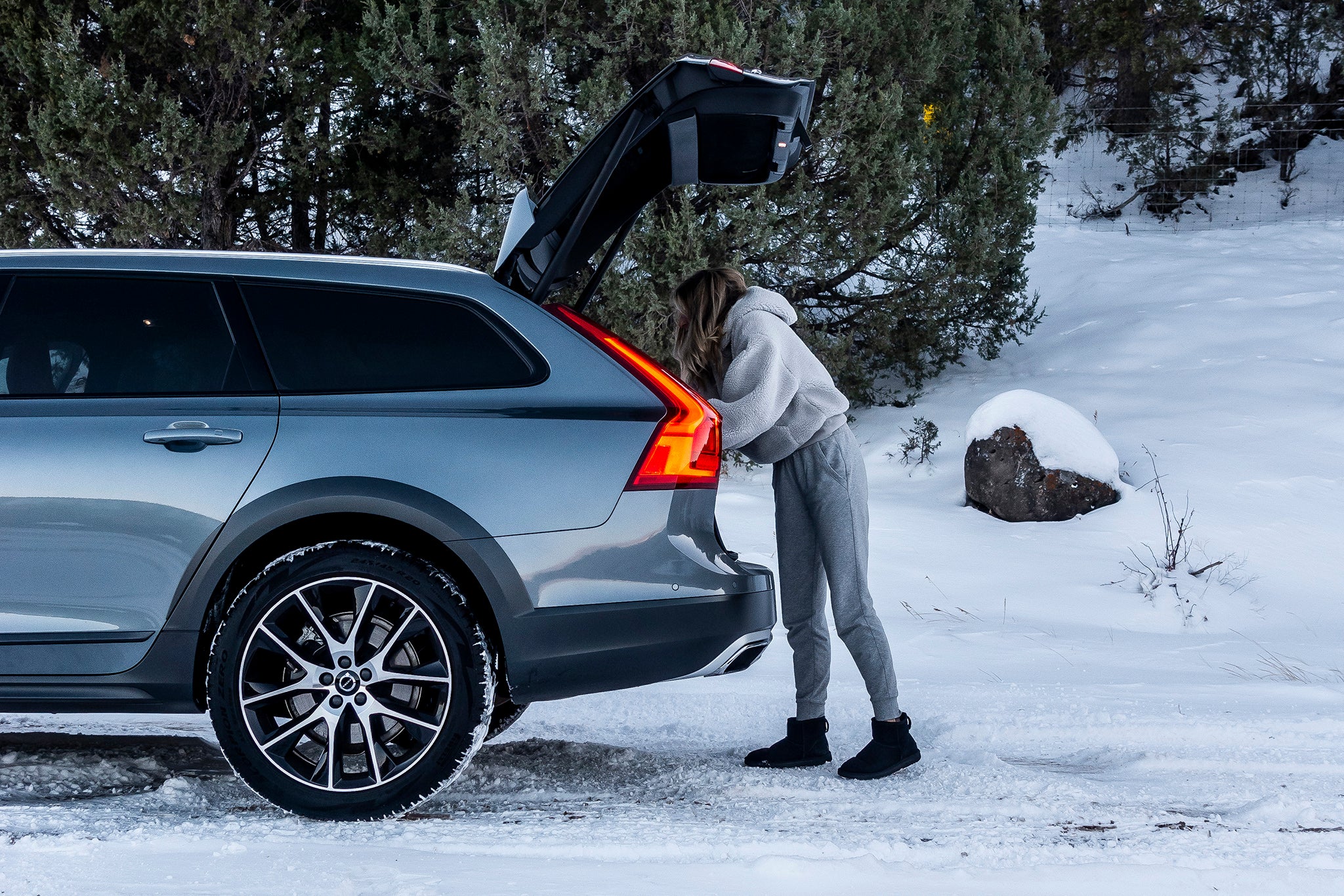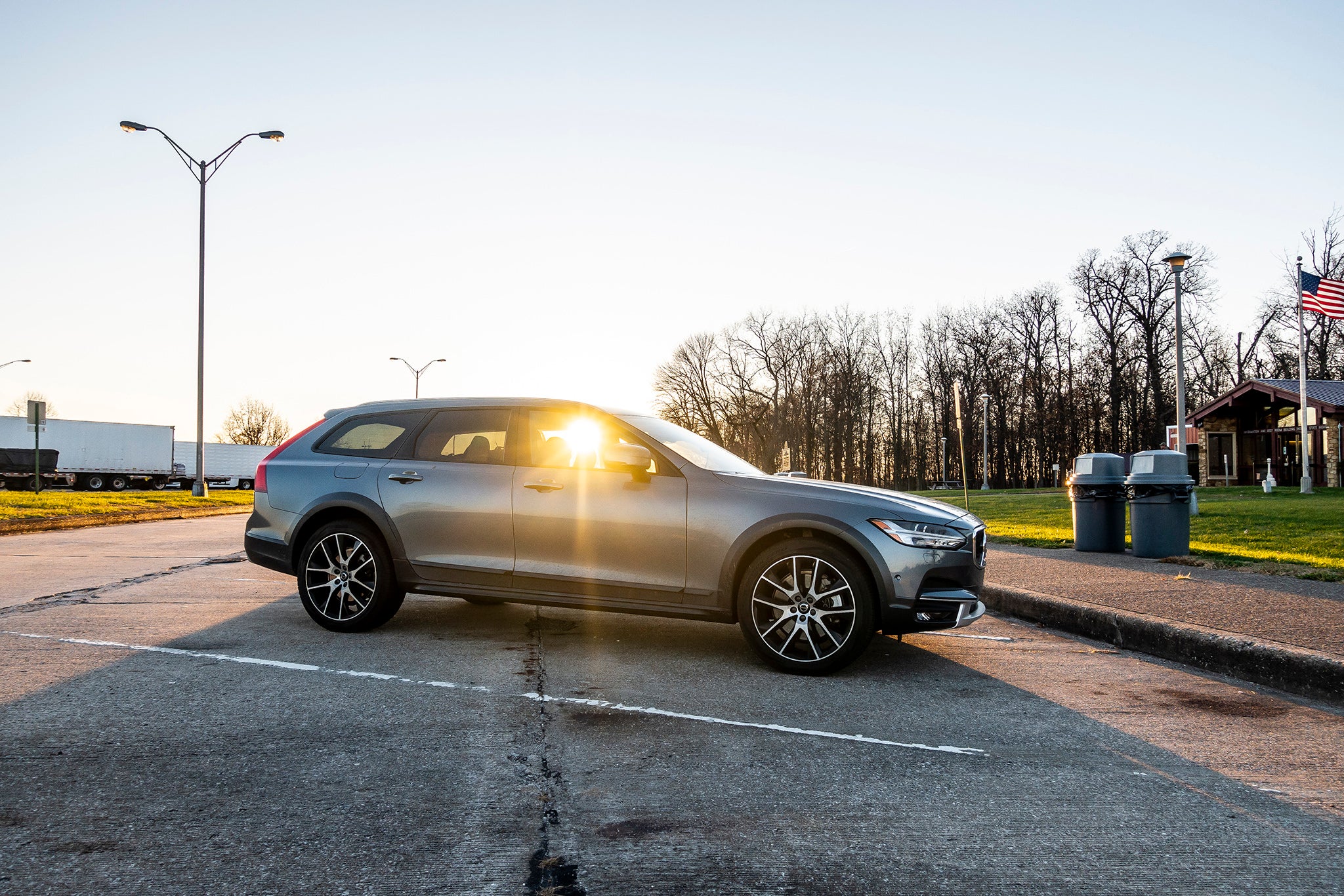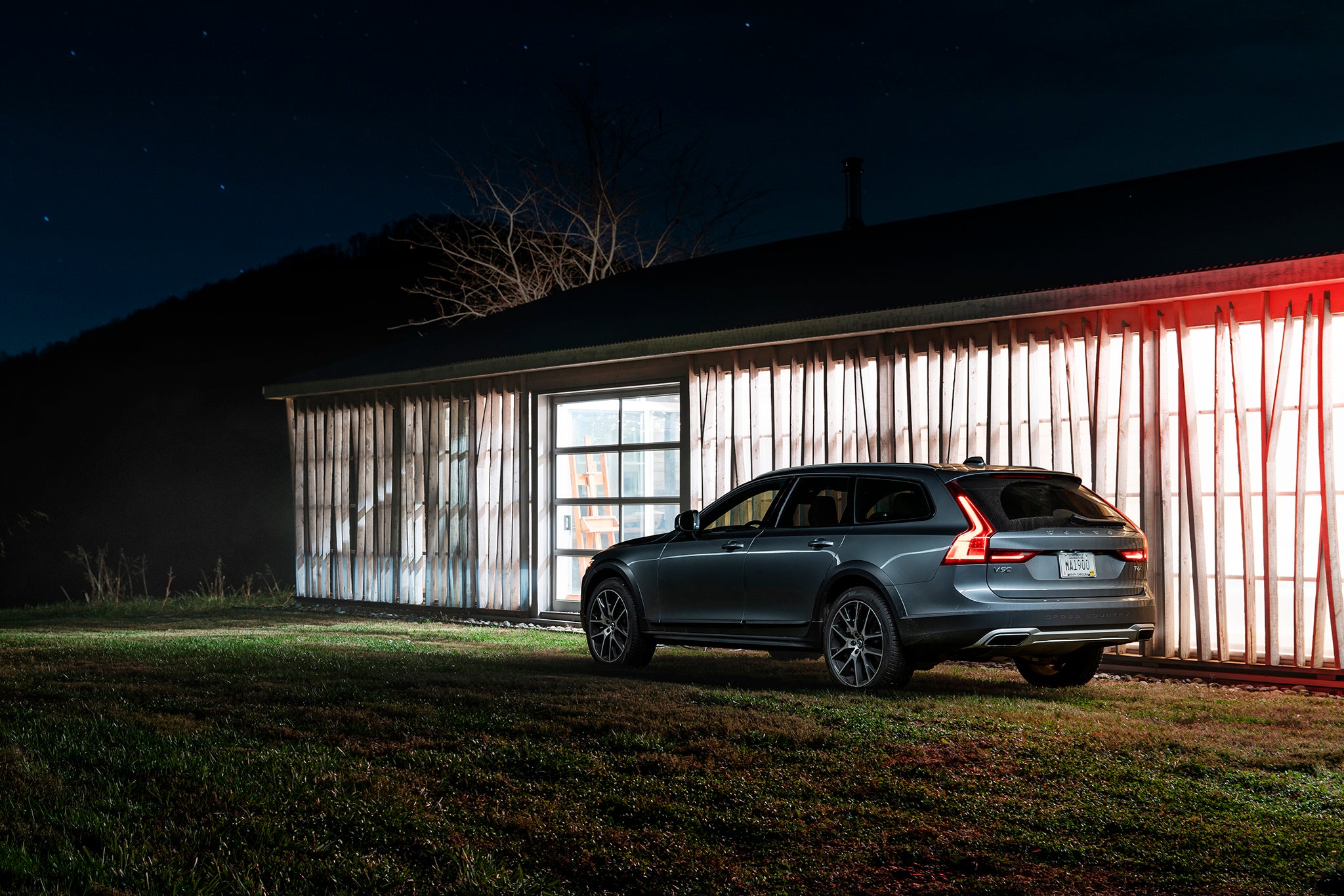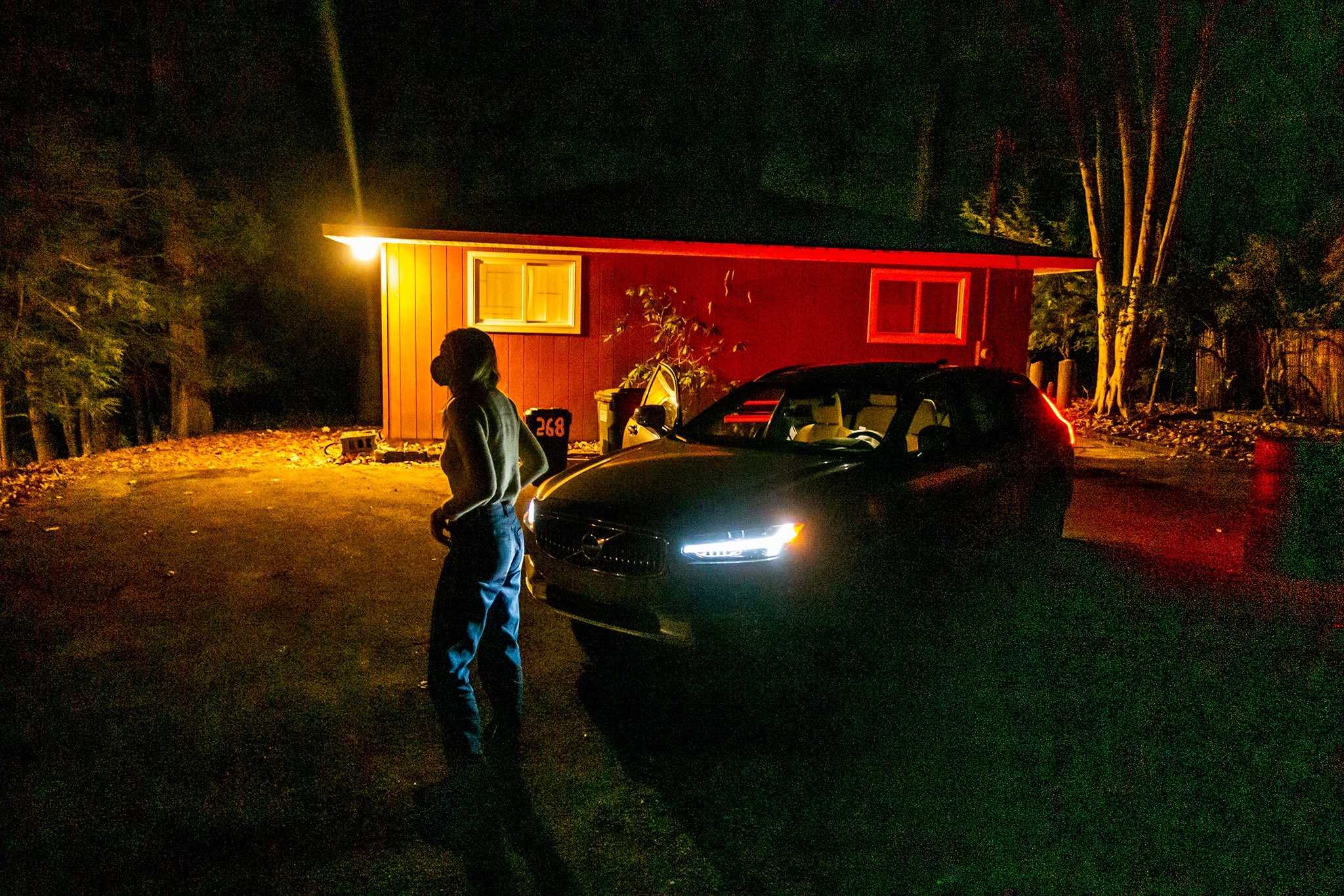Night five on the road, somewhere outside Topeka, Kansas. That’s where reality seemed to hit. We had covered some 1,500 miles at this point, about halfway across the country, but the driving wasn’t the hard part. The hard part was at night in some roadside motel, when the headlines can’t seem to stay out of your thoughts. The place we came from was tightening virus restrictions and banning outdoor dining; the place where we were headed required a quarantine. In either direction, it seemed there was bad news.
As the nation ended its very slight, socially distant summer reprieve and lurched toward a mostly-separated Thanksgiving last year, here we were in a roadside motel, 1,500 miles from home and 1,500 miles from our destination. It was a feeling we tried to forget over a lukewarm meal delivered from a nearby Applebee’s, but the thought was inescapable.
“Are we crazy for doing this? For making this trip?” I asked Caitlin, my fiancée.
“I don’t know,” she said. “Maybe.” She kindly didn’t point out that driving from California to New York had been my idea. It had taken me quite a while to talk her into it. We talked some more in the room that evening, both about pushing on with the trip or about turning around and heading back to Los Angeles. We almost turned around. Ultimately, though, that seemed just as risky as continuing.
So we got back on the road in the morning, still heading east.
Editor’s note: This story is part one of three chronicling a cross-country road trip undertaken in mid-November. Volvo provided the vehicle, but that was the extent of the automaker’s involvement. Jonathan and Caitlin both tested negative for COVID multiple times before and after the drive and remained masked and distanced when interacting with others in accordance with local health regulations. While the wisest move of all is to avoid traveling right now, we hope their experience illustrates the strange state of the great American road trip at this unusual moment in time. — Kyle Cheromcha, The Drive Editor-in-Chief
Prepping for the Road
Like many people, Caitlin and I had spent the previous eight months existing in our dim Los Angeles apartment, forcing ourselves out for daily walks in between job-hunting and generally despairing. I’m a freelance photographer, and I’d gone through a few different stages of boredom from re-editing old photos all the way to scale model airplane building. But even that fell flat after I finished the mighty Spruce Goose, which annoyingly was made from plastic cast, not balsa wood.
By the end of last summer, virus cases across the country were in a downward trend and it seemed like things were slowly turning around. In many cities, people embraced outdoor dining and drinking. The warmer weather didn’t fix everything, but it seemed to give us a little cover we didn’t have during the worst of the spring.
Our travel plans had all been canceled. We needed to get away, to do something, to go somewhere, anywhere. I was potentially open to air travel—Caitlin not at all. I would take her temperature on the subject every few weeks but it was clear we weren’t flying anywhere anytime soon. So I started talking about road trips.
Specifically, a cross-country road trip. What about driving back to the Northeast, where we’re both from, to see family and friends? But it was crucial we had some very strict, non-negotiable ground rules to make this work:
- We get tested before, throughout and after the trip.
- We ask that everyone we hang out with do the same.
- We don’t eat inside any restaurants.
- We keep interactions with new people as close to zero as we could manage.
- We only stay at hotels that seemed to have proper Covid-19 precautions in place, primarily big-name chains with mask requirements and cleaning regimens listed prominently on their websites.
- We carry out our own wipe-down on switches/doorknobs/remotes in any hotel room we stay in.
- Even when we meet with friends or family, we keep masks on at all times, and afterwards until we’re through New York’s quarantine process.
Once Cait agreed to the road trip, there was a second big hurdle: a vehicle. I’m only slightly embarrassed to admit that we have two registered cars, neither suitable for a cross-country drive. One is a BMW i3, which would take 29 charging stops and 64 hours to cross the continent. The other is a 25-year-old BMW M3 with no interior and a full roll cage; in the last two years, that car has spent more time on garage lifts than roads.
That’s where the 2020 V90 Cross Country came in, which Volvo was kind enough to lend for the one-month, 7,000-mile journey. It’s hard to think of a more suitable sled than the Scandinavian wagon with the mission there in its name. For 2020 the Volvo V90 Cross Country was offered in one trim, the T6. The twincharged 2.0-liter four-cylinder benefits from both a supercharger and a turbocharger and makes a respectable 316 horsepower and 295 pound-feet of torque.
Admittedly, the Cross Country’s lift kit negates most of the handling benefit you get in a true wagon versus a crossover, but come on. Look at it. If you’re shopping for a nice, high-riding family hauler, why wouldn’t you pick a V90? And it starts at around $55,000, which is kind of surprising since you only really see it in towns where the median income is at least three times that.
With co-pilot and vehicle secured, I had to actually plan the logistics of the damn thing. I went to my local AAA and collected a fistful of paper maps, which I took home and placed on my shelf. Then I fired up Google Maps and got to work. This was not to be any sort of Cannonball Run. I wanted to enjoy seeing the country during the day as much as possible, while staying as far away from other people as possible.
In the week before our departure, we visited the cone filled maze of Dodger Stadium, not for an autocross event, but for pre-departure Covid-19 tests. A few days later, with negative results confirmed, the trip really started to feel imminent.
The prep time ticked by and suddenly, we were one day from departure. We spent the day packing and running around to complete all the errands you do before leaving home for 30 days. A houseplant went to one friend and we dropped by another to collect some holiday spirits to bring as gifts. Then came a stop at the grocery store for snacks and drinks, plus CVS for hand sanitizer and antibacterial wipes. I also bought a pack of five new cloth masks in what felt like a pandemic-style splurge.
We loaded the car with winter clothes, camera equipment, and gifts, including those holiday spirits. Cait combined all of our remaining veggies into a large salad with soup on the side—a healthy last meal before seven days of road food. I set the alarm for 6 a.m.
Day 1 | Los Angeles to Grand Junction, CO | 784 miles
Our early start went smoothly enough, save for 45 minutes of traffic as soon as we merged with Interstate 15 in San Bernardino. Once free of that mess, we made good time to Las Vegas. Since Cait had never been to Vegas we pulled off the interstate and drove down the Strip and noted how it lost a lot of its nighttime glamour at 10:30 a.m. I’d love to tell you what Vegas looks like in pandemic, but the truth is we made a point of trying to avoid city centers during the entire trip.
The first fast-food lunch on the trip came just outside the city; soon after, I needed a break, so Cait took over and quickly fell into a highway groove.
With a speed limit of 80 mph and most folks going at least 5 mph over, Cait commented that this was the fastest she’d ever driven. She put in a solid two and a half hours and covered close to 200 miles. We swapped drivers again in rural Utah after making the turn from the I-15 onto I-70 toward Grand Junction, Colorado.
Though Volvo’s long since mastered the art of a comfortable seat and sedate highway cruising, my second stint was predictably more taxing. Twilight was pink and purple and lasted for what seemed like forever, and then when the light was gone it was really, really gone. I fiddled with Volvo’s Pilot Assist, which adds strong steering inputs to keep the car in between visible lane lines when active, but quickly realized it was less stressful and easier to just do the steering myself, especially on a few big downhill curves.
We made good time across I-70 but even so, by the time we pulled into the hotel in Grand Junction it had been a very full 11.5 hours of driving, our longest of the trip. I was exhausted. Thankfully, Cait had the presence of mind to do a wipe-down of the room before we settled.
Finally in our hotel room, after long hot showers and salads for dinner, we watched a movie on TV and I didn’t even care that it had commercials.
Day 2 | Grand Junction to Aurora, CO | 257 miles
I woke up feeling worn out and more uncertain about the entire trip than when we started. Cait gave me a little pep talk and pumped me up for our drive through the Rockies. I needed it. Leaving Grand Junction revealed some amazing landscape we missed in the dark the night before. Snaking through canyon after canyon, the topography is just so severe.
Rising towards the snowy Rockies we were continually in awe. The 8-speed transmission easily found the right ratio as we climbed, never hunting or holding gears too long. At 10,000 feet the temperature bottomed out at 27 degrees as we entered the Eisenhower Tunnel. The forced-induction four-cylinder performed admirably at these higher altitudes; twincharging has its benefits, I suppose. Our average fuel economy predictably took a hit, showing a decrease from 24.3 to 23.5 throughout the day.
I saw a sign for a bighorn sheep viewing area and couldn’t resist pulling over. None were spotted but a semi-truck with smoking brakes did join us; I don’t think he was as interested in sheep as I was.
I encouraged Cait to soak in the mountains while we were in them since the Plains would be a little lacking in dramatic landforms. Seconds after our first glimpse of the Denver skyline from I-70, a large electronic sign reads “DON’T BE FOOLED: 4 MORE MILES OF STEEP GRADE AND CURVES.” Not subtle but for good reason, though with strategic engine braking the Volvo’s pads needed no quarter. Skirting around downtown Denver, we cruised into suburban Aurora just in time for sunset.
Day 3 | Aurora | 0 miles
We built in a day off the road in Aurora, to catch up with Caitlin’s brother and his wife, who are expecting their first child. Amid their excitement and ours, it was uncomfortable to stay masked and distant, but it’s what needed to be done. Regardless of discomfort, seeing family is always rewarding—that was why we were making this trip, after all—but keeping everybody safe is even more important.
Day 4 | Aurora, CO to Topeka, KS | 531 miles
I offered to take a socially distant family photo for Caitlin, her mom, and her brother. The few extra minutes before departure were well worth it for the family memories.
Put simply, Plains driving is way easier than Rockies driving. Turns? What turns?
I knocked out the first four hours of our seven-hour day with not much to report. The best part of my stint was a fast-moving Audi that served as a rabbit to chase for nearly two hours. We covered a lot of miles in that time. The wind picked up and was blowing the Audi around in the lane ahead, but our car was rock solid even in the biggest gusts and at the highest speeds. Props to Volvo’s aero engineers.
We stopped for lunch in the middle of Kansas, where the wind was blowing tumbleweeds all over the road, giant hairballs accumulating under highway overpasses in massive piles like dry, yellowed snow drifts. After watching the ETA for that night’s destination decrease all morning as I chased our Audi pal, I suddenly looked down to see an entire hour had been added to our arrival time. Was I slowing down? Then I realized: Oh. We had passed from Mountain to Central Time. We hadn’t actually slowed down, but apparently my brain had.
Cait did a fantastic job battling the winds and piloting us safely to the outskirts of Topeka, Kansas. It’s hard for me to drive past beautiful farm roads at sunset and not pull off to shoot some photos, but we were both tired and hungry and I knew I would have plenty of chances to shoot this car over the coming 26 days.
That evening in the motel was our lowest point. That was where we almost turned around. To be so far from familiarity, and home, was a big feeling. Knowing we weren’t even halfway, and we would have to do it all again on the way back—that felt heavy. But turning around and going home felt heavier. An adventure is not an adventure if you give up on it.
Day 5 | Topeka, KS to New Albany, IN | 569 miles
We didn’t sleep well that night, but I woke up with renewed energy and headed toward a drive-thru where Cait Starbucked herself into good spirits, too. Caffeine can be the fairy dust of the road.
We agreed to break the day up into two-hour stints so I drove from 8:45 to 10:45 somewhere in the middle of Missouri. Back on the road, the miles kept ticking away. At one point I was reading something on my phone in the passenger seat, not paying attention to the road, and I heard a loud WHAM, right next to my head. I almost had a heart attack thinking the car was coming apart, but I looked over to see a plastic bag stuck on the passenger side mirror as Cait murmured, “Baggie,” and kept her focus on the road. I rolled the window down and let the bag fly loose. We both relaxed.
My estimates had us swapping drivers again just past St. Louis, but some construction zones west of the city put us slightly behind target. Cait was getting tired after two hours behind the wheel and I fell into the dreaded “maybe there are better services at the next exit” syndrome until she really, really had enough.
In need of fuel and a restroom, we got off the highway and naturally took an exit that had neither, ending up in a mostly industrial area just west of St. Louis. I don’t know if it was the virus, or the statistics I later saw that pegged that very stretch of Natural Bridge Avenue as one of the most dangerous places in the country in terms of gun violence, but it was like a ghost town. No cars, no people, no hum of life. I relieved myself in a bottle and got back on the highway.
My second driving stint of the day was uneventful, relying more on the Volvo’s adaptive cruise control than any other time so far on the trip. The system gave my throttle foot a welcome break.
I took a moment to marvel at the relative ease and comfort we were able to enjoy on this trip, with this car. To think that frontier-era people crossed this land in covered wagons, and it took months. The Volvo’s heated seats kept us both back pain-free as we barreled across America, a far cry from a hard wooden bench on the Oregon Trail. It takes a road trip like this one to realize just how far human beings have come in a relatively short amount of time.
Our original destination for this evening had been Corydon, Indiana, but we pushed a bit further after an online search identified a more appealing hotel that seemed to have better Covid precautions. The previous night’s hotel choice had been mine and I hadn’t chosen well. The hotel hadn’t been updated in a few decades and as soon as we walked in we saw unmasked people drinking at the lobby bar. Cait found us a hotel for the next night with clearly listed virus precautions and it was so new that it showed up as just a pile of dirt on Google Maps.
One last driver swap put Cait in the hot seat for the final push. Sunset brought rich purple and pink colors into the sky. The last few miles to our night stop always feel like the longest, making it feel all the better to park the car, collapse into the room and order food. As a bonus, our hotel that evening had a TV with Netflix; Cait could continue watching The Crown on the big screen. Things were looking up.
Day 6 | New Albany, IN to Afton, VA | 486 miles
A good night’s sleep at a clean hotel set us up well for our second to last day of eastward driving. Leaving Louisville, Kentucky, the landscape flipped from flat plains to more rolling woods. Heading into West Virginia, the road began to snake back and forth through the mountains. Other than the more interesting scenery, the driving day passed without drama, which was welcome.
Our final hour to my college roommate Tristan’s family house in Afton, Virginia was all two-lane country roads through some idyllic farm scenery. After three days on the interstate, it was really nice to take it a little bit slower. We arrived just as the sun was setting—and I had to take advantage of the light for a few photos before relaxing. Tristan set Cait up with a glass of red wine by the time I found them picking greens from the kitchen garden for our salad that evening. We had a dusk stroll down to the lower field before heading back up the main house for conversation and cooking.
Cait retired to the master bathroom where a massive freestanding soaking tub was her refuge from Tristan and my buffoonery. We sat on opposite sides of the kitchen with our masks on, catching up. When Cait finally came down from her bath she said she could hear us laughing the whole time.
Dinner was an amazing Harissa Chicken recipe. Once again we marveled at how good home-cooked food is when you’ve been surviving on road garbage for too many days.
After dinner, we watched some How To With John Wilson on HBO and laughed our asses off. Cait and I retired to the guest quarters, an architecturally stunning renovated barn—a good backdrop for some of the evening photos I had taken earlier. Lots to drink and late-night barn sounds left me tossing and turning most of the night. With the morning sun streaming in, I was up pretty early. I took a little stroll since it was a balmy 65 degrees, reminiscent of California, enjoying the fresh air and green pastures surrounding us, not at all reminiscent of California.
Day 7 | Afton, VA to Hudson Valley, NY | 464 miles
We had a predictably later start for our final day of road tripping, at least for two weeks. Off the mountain, gassed up and caffeinated, we were on our way. I drove for nearly three hours before Cait put in a solid two and handed the wheel back to me just past Allentown, Pennsylvania. The sun was going down behind us and as we hit New Jersey. I couldn’t help but notice the horrific collapse of lane discipline. Of course, I know that “stay left, pass right” is considered Jersey driving etiquette, but it didn’t make it any less annoying—or dangerous—to be among all those apparently clueless motorists.
Sensing my exhaustion and knowing these last few hours were going to be a push in the darkness, Cait did her best to support me from the passenger seat. Snacks, drinks, temp changes, music changes, interesting conversation—she was my concierge as well as my cop spotter. Over the last few days, she had turned into quite a good co-pilot and an even better pilot. Even so, she appreciated not having to drive through that last section of New Jersey, into New York and up the Hudson Valley. Crossing the new Tappan Zee Bridge, with all of its colorful towers and wires, felt particularly celebratory despite the heavy traffic.
Earlier in the day as we returned to the interstate from the small country roads of rural Virginia, I disabled the Lane Keeping Aid. When active, between 40 and 125-mph the system will actually steer the car back into its lane or send a vibration through the steering wheel to alert the driver they are straying. On tight back roads, the system was overly intrusive, especially in situations where I knew I could place the car correctly by putting a tire on a painted road line, the steering inputs or vibrations detracted from my confidence.
If you’ve ever driven the Taconic State Parkway, you know it’s much more technical than your average highway, a narrow, twisting, dark, misty, deer-riddled stretch of road where, at 5:48 p.m. on a Friday, too many people were driving too fast and too close to each other in the mad rush to get home. Cait had to talk me down a few times after being cut off or high-beamed.
Welcomed home with a backyard fire pit and hot chicken soup, we finally relaxed. Seeing my folks and not hugging them was strange, but just being near them was such a good feeling. We wrapped up in blankets and sat around the fire pit for more than an hour. Plum tart was served with whipped cream. Delicious.
When our feet got cold we headed to the bunk cabin where we would stay for the remainder of our time on the East Coast. Knowing that we would sleep in the same bed for more than one night at a time was a very good feeling.
Los Angeles to New York | 3,500 miles
In the first seven days in New York, both Caitlin and I received two negative tests. A relief, but we still employed heavy precautions around my at-risk parents. We also didn’t mix with any other households—except when the weather permitted occasional socially distanced fire-pit gatherings with neighbors who were glad to see us.
The Volvo performed flawlessly on our first leg. We managed to average 24.9 mpg which properly lines up to Volvo’s claim of 20 city / 30 highway mpg, though we probably could have done a bit better if not for my heavy right foot. We did cross the country in the Cross Country, but there were almost no chances to drive on unpaved surfaces aside from a gravel driveway in Virginia. (Stay tuned for a more comprehensive review in the second installment.)
Looking back on the first half of the trip, I keep coming back to the question of whether we faced more or less risk traveling by car than by airplane. And I keep coming back to the same answer: the risk is the same, just experienced in different doses.
By driving, we had smaller risks but those risks were spread out over seven days. By flying we would have greater risks but over a much shorter and more concentrated period. And we would’ve been around many more people, many of whom weren’t taking the same careful precautions as us, our friends and our family members.
I still feel some guilt for doing what so many people said not to do. Yes, we got tested, yes, we were negative, and yes, that’s a relief. I feel lucky to have a partner willing to embark on such adventures, and that we were able to see so many people we’ve missed so much. Such a journey is possible right now; it just requires extreme caution and a lot of planning, more so than any normal road trip.
But with the vaccine (slowly) on the way and more people getting the shot every day, my sincere hope is that after a year of being cooped up inside, more of us will take to the road and see this country the way we did. Whenever you’re ready, it’s out there waiting for you.
Source: Read Full Article

